Travel
The Scottsdale Experience
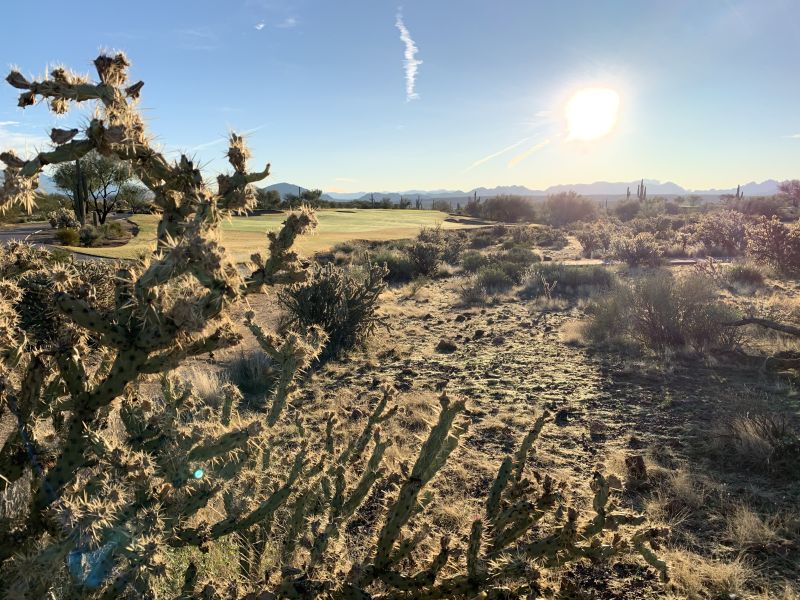
The greater Phoenix area has some phenomenal golf. And a lot of it, too. They say that there are over 200 golf courses in and around Phoenix and Scottsdale. Of course, not all golf is created equal. But still, you visit this part of the country, and you can find somewhere to play without much problem. And the weather will probably be good. It’s why so many snow-bird golfers decide to retire to Arizona.
My wife, kiddo, and I spent the weekend in Scottsdale. I’ve been blessed to travel to a lot of different places for golf but I am not sure there is a finer overall golf venue to visit with your family. We stayed at the Fairmont Princess, and I was able to play three first-class courses: TPC Scottsdale, Grayhawk Raptor, and We-Ko-Pa Saguaro. Each course provided a different style of desert golf…something I didn’t know was even possible before this trip.
It also happened to be Christmas season, and the Fairmont Princess goes all out for the holidays. It might be hard to imagine a winter wonderland in the middle of the Sonoran Desert, but they pull it off. Absolute Christmas heaven for an 18-month-old boy and his parents.
Here’s how our weekend went…
Day 1: TPC Scottsdale Stadium Course
We all know TPC Scottdale as the host of the Waste Management Phoenix Open every year on the PGA Tour. Yep, it’s the party tournament with the stadium grandstands around the famous 16th par-three hole. It’s one of the most popular stops on tour for fans and golfers alike, and I was stoked to see if the course itself provides similar excitement.
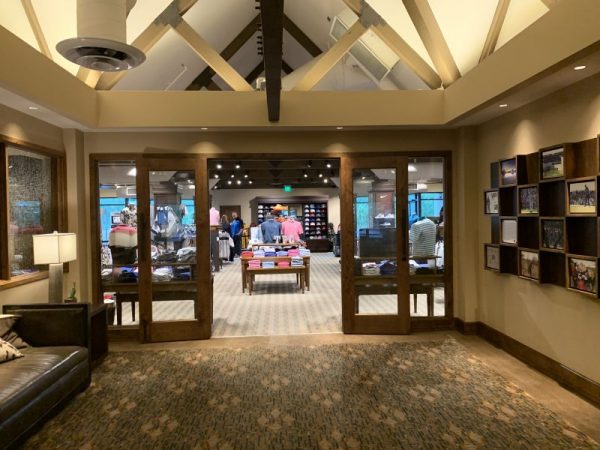
TPC Scottsdale Stadium Clubhouse
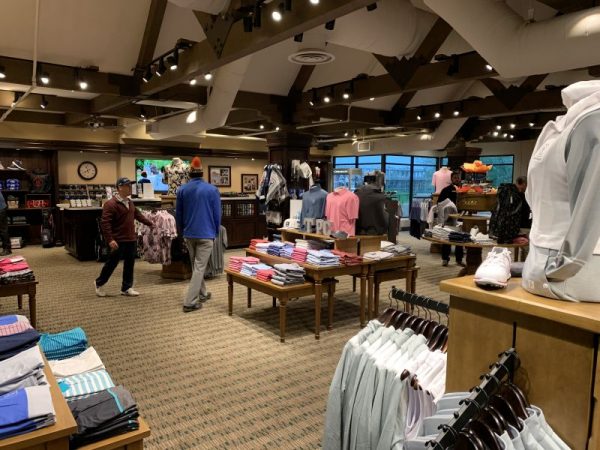
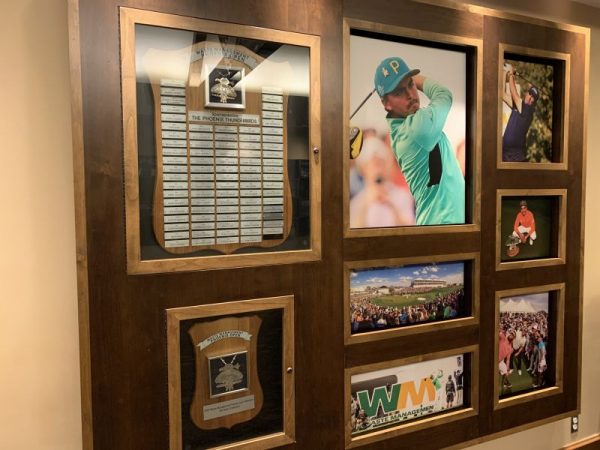
The clubhouse is grand and nearby to the Fairmont hotel, where most of the players stay during tournament week. In fact, the great little par-three fourth hole runs parallel to some of the Fairmont villas. The fifth teebox backs up to the Fairmont grounds and borders a cool walking path along the course. The hotel makes for a neat backdrop for many holes on the front nine.
The pro shop here is solid. It’s large and has all the major brands. I think that is a common theme in Scottsdale, though. The retail world is a big deal here and that extends beyond the pro shops. I was joined by a single for my round at TPC Scottsdale, a doctor from El Paso. He and his wife were in town just for the weekend as well. He told me they drive to Scottsdale once a year. “I play golf and my wife shops. We have to drive so she can fill the car with everything she buys,” he said. I found out later the shopping really was world-class. But I played a bit quicker after that, not knowing where my wife was and how much money she was spending.
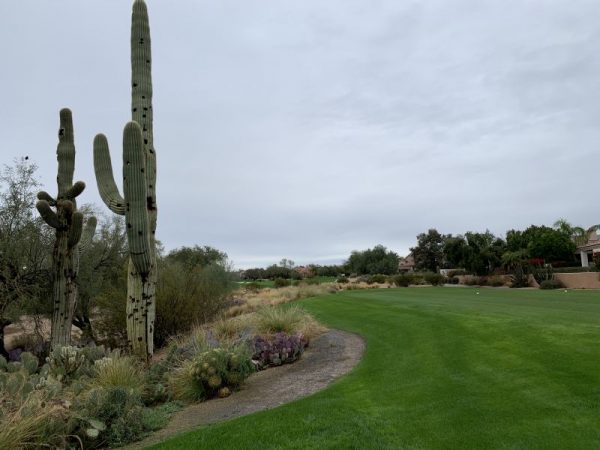
TPC Stadium #1 Tee
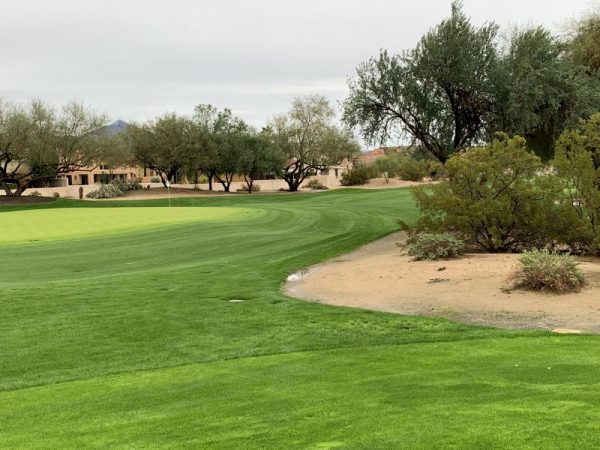

The Stadium Course was in perfect shape. The track is a Tom Wieskopf and Jay Morrish-designed, 7,266-yard par 71 that was built in 1987 as a site for the then Phoenix Open. It was easily the best conditioned of the three courses I played in Scottsdale. Winter is high traffic season for Arizona, as most travelers fly in from the north to escape the cold weather back home. Temperatures each morning were in the 40s, but it warmed up to a comfortable high in the 60s after lunch each day, usually with clear skies. My round at TPC was cloudy, but we avoided rain from earlier in the week. The course was lush and the greens were as good as any I’ve ever played anywhere. The ball was rolling so pure on them. I’m willing to bet they keep them that perfect year-round.
TPC Scottsdale also has a second course, The Champions Course, that was built in 2007 and it offers a more inexpensive alternative with similarly stellar conditions. Both sites offer dynamic pricing, with green fees fluctuating throughout the month, week and even time of day. But in December, tee times for the Stadium Course can run you anywhere from $94.00 to $250.00 depending on when you want to go out. Prices for the Champions Course seem to hover around the $100.00 mark all day long.
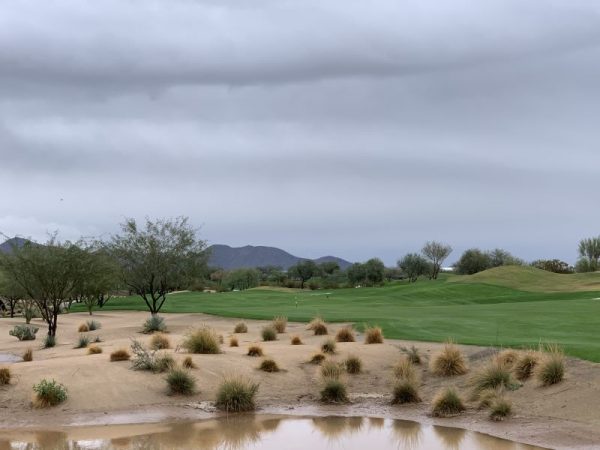
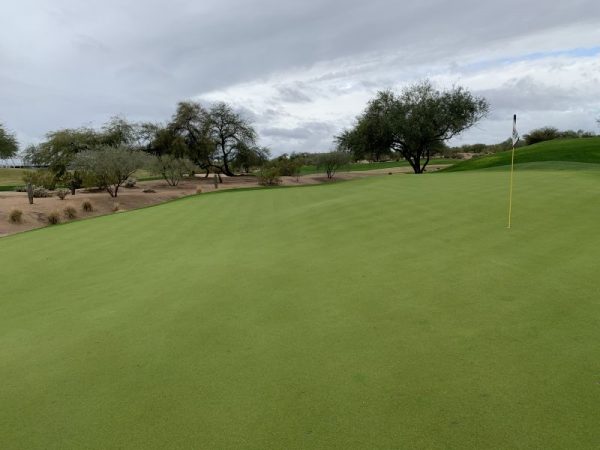
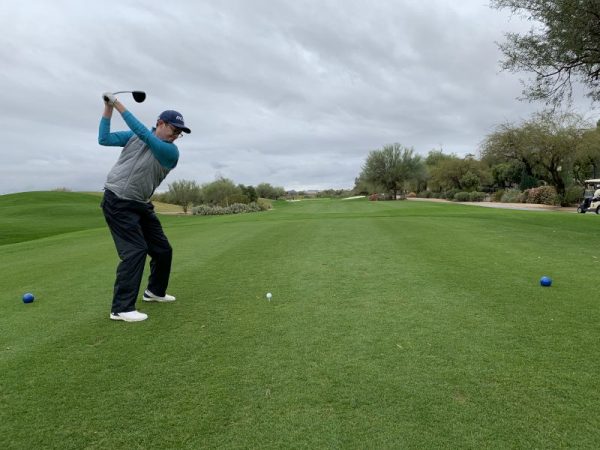
TPC Scottsdale was a subtle introduction to desert golf for me. While the fairways were definitely surrounded by desert plants and sandy, hardpan surfaces, the course still didn’t quite feel like a true desert course. There was certainly cactus everywhere but the course is also surrounded by residential adobe houses and, of course, the ever-present Fairmont Princess resort. It was classy desert golf. Nothing wrong with that at all, but you aren’t out in the middle of the Sonoran. There is still a constant presence of civilization and the plants that lined the fairway were spaced out enough to still play your next shot. Not a ton of lost balls on this course.
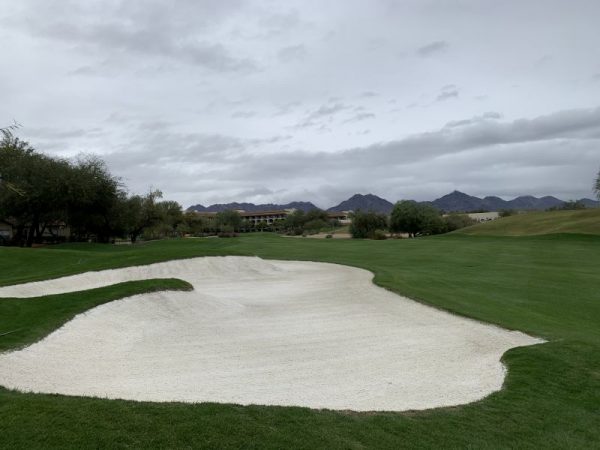
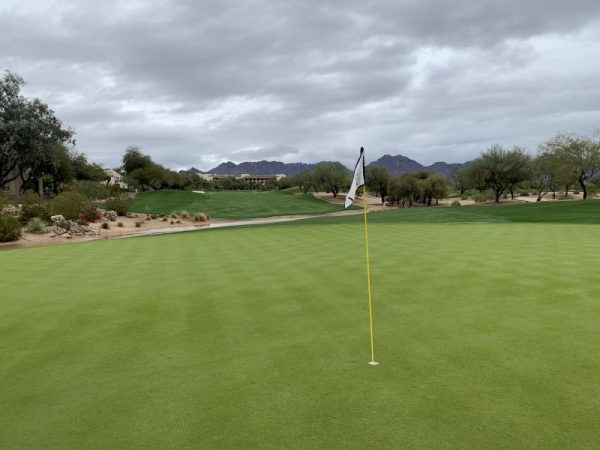
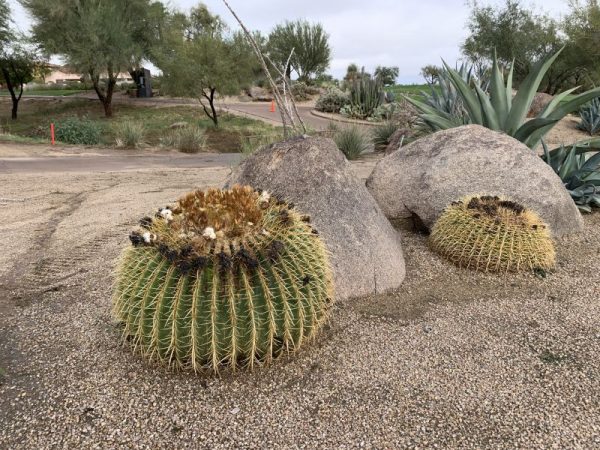
It takes over two months to assemble the stadium grandstands around the par-three 16th, and construction was well along the way in December. In fact, the bones of the stadium were large enough to see the structure from many points on the course. That gives a looming feeling of excitement throughout the entire round. I can only imagine how it must feel for the pros to know that a stadium of 20,000 screaming fans await you at the end of your round, spending all day in the same seat just to see you hit a 150-yard shot.
Fans form an early morning line at the entrance of the Waste Management Open and then run almost a full mile to the stadium to stake their claim on a seat. And if you get up during the day without someone holding your spot, you might lose it. It’s a rowdy crowd, too, as fans are encouraged to make some noise during the golf. There really isn’t another place like it on tour. Even in December, standing on the tee inside the empty structure, you could feel the pressure. It’s a really fun experience and worth the price of admission.
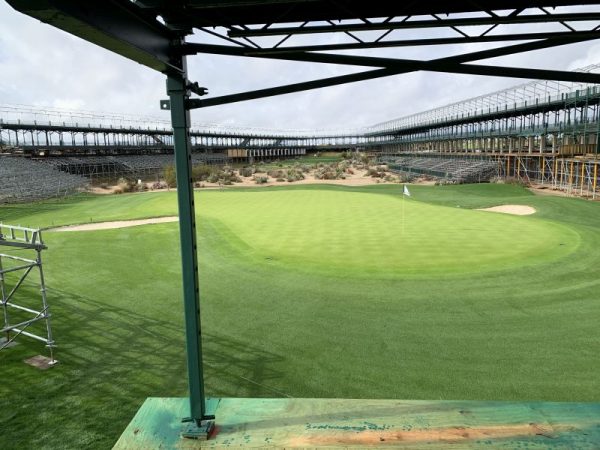
TPC 16 Green to Tee
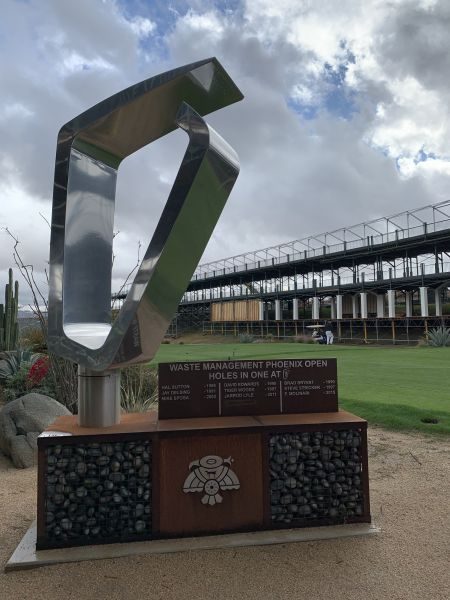

Like any good Weiskopf/Morrish design, the Stadium Course offers a drive-able par 4. The fact that it is the 17th hole here only adds to the end-of-round drama for the PGA Tour event. In 2001, Andrew Magee made a miraculous hole in one on this hole, the first-ever ace on a par 4 in PGA Tour history.
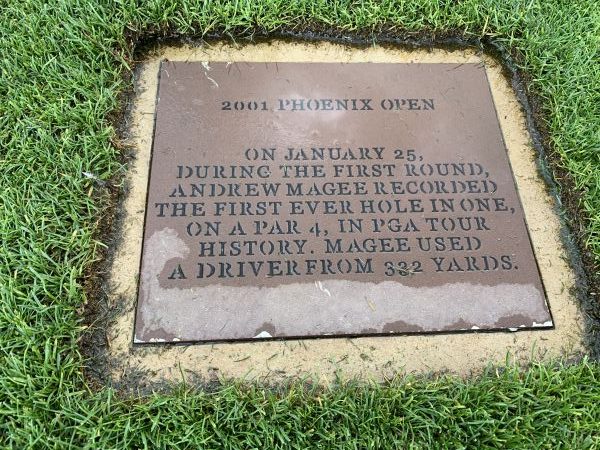
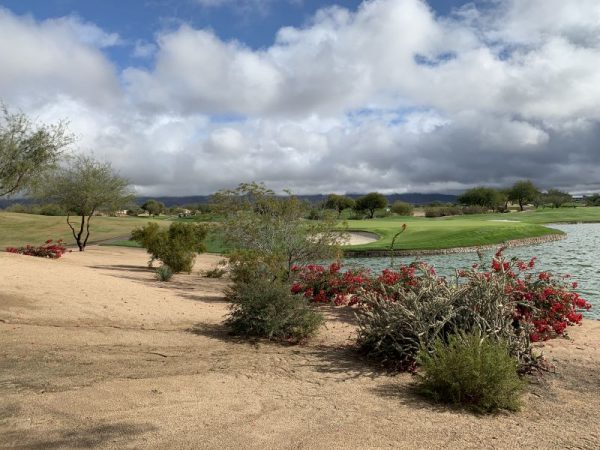
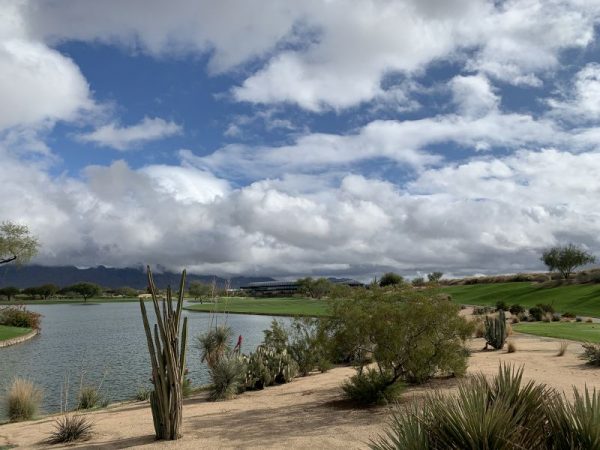
Overall, TPC Scottsdale Stadium Course is a solid but not overly spectacular layout. What makes the course special is the first-class conditioning on the fairways and greens, the history of the tour event and the obvious thrill of playing the Stadium Course. The finishing four holes make the course worth the trip, with 16 and 17 being the absolute highlights of the round. Even hole 18 provides a beautiful finish back towards the clubhouse. If you can play this course anytime between December and February, you’ll get the added treat of weaving through the grandstands and seeing how the course will look for the professionals. That is an underrated experience.

Me and my buddy Jeff
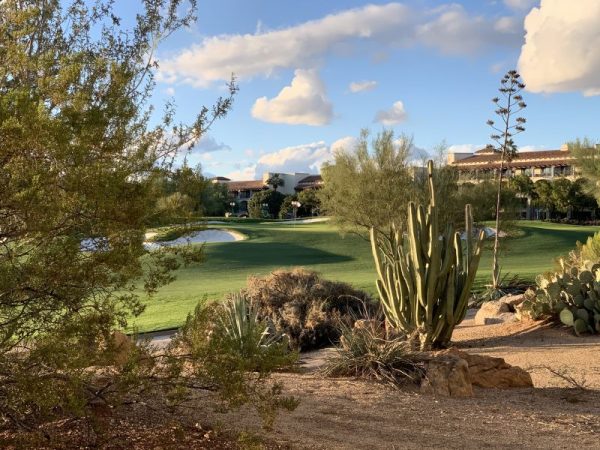
View of TPC Stadium #4 Green from our hotel room
I ended the round with a meal on site at Toro, the clubhouse restaurant and rum bar. They are known for their sushi but also offer a solid burger and a stunning view overlooking the 18th green. I noticed that the nearly full restaurant was patronized by mostly non-golfers, so this must be a real deal lunch option for the community of Scottsdale. I thought it was a great spot and the atmosphere was good fun with golf course vibes.
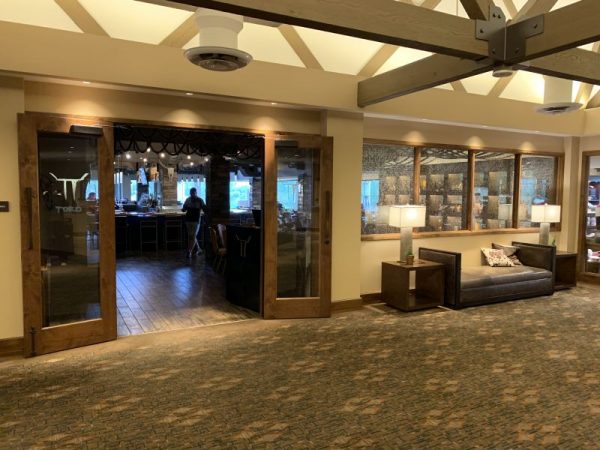
Toro Restaurant
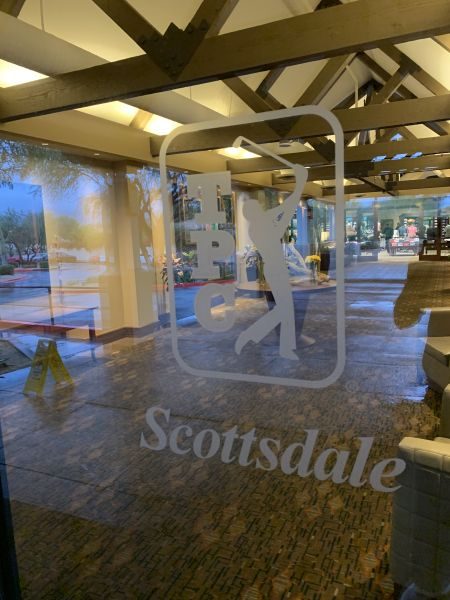
Back at the Fairmont, the family had our first night at Christmas at the Princess. I know this is a golf article, but I’m telling you guys….this is just another reason to bring the family to Scottsdale in November/December. The Fairmont is a HUGE property with 750 guest rooms and several restaurants on-site—but there isn’t a tree or building that isn’t completely covered in Christmas lights. They managed to over-decorate in a classy manner but I’m pretty sure the scene would still make Clark Griswold proud. I’m a big fan of overdoing it at Christmas, so this was right up my alley.

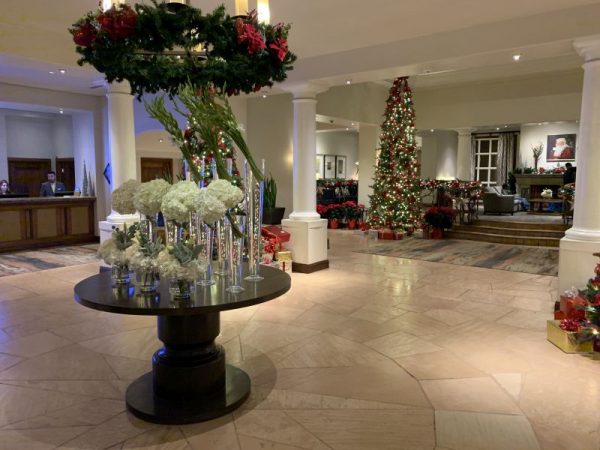
Fairmont Princess Main Lobby
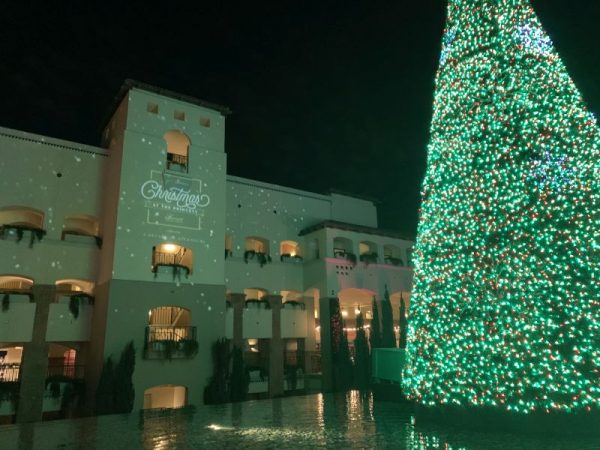

Mr. Christmas
Christmas at the Princess felt like a holiday-themed Disneyland. There were hot chocolate stands—you can order it “naughty” with alcohol or “nice” for the kids, Christmas characters walking around in costume for pictures, a ferris wheel and carousel in ‘Smoresland,’ a Christmas train ride around the property, an ice skating rink with fireside lounge chairs, and of course pictures with Santa. My son will be 18 months this Christmas, and he was in heaven with all the lights and characters. And quite honestly, my wife and I were in constant awe of this place as well. Everything is just so impressive. The Fairmont in Scottsdale is perfect for families but even more so this time of year. We saw families with kids of all ages, but there were also couples there for a holiday-themed date night. If you go in the winter, that doesn’t mean forget your swimsuit—the Fairmont has heated pools including an adults-only pool if that’s your style.

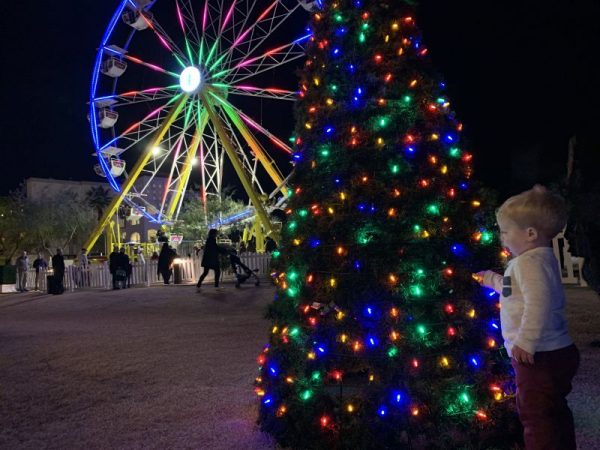

We had dinner at La Hacienda, there at the Fairmont, and it was excellent. You can’t go to Arizona and not partake in the margarita selection, right? Well…we did. Also, the Carnitas Hacienda is apparently the signature dish and it was legit. So much flavor. Our first night’s restaurant couldn’t have been better. It was exactly what I had in mind when I thought about a hardy meal after a long day of chilly Arizona golf. I highly recommend.
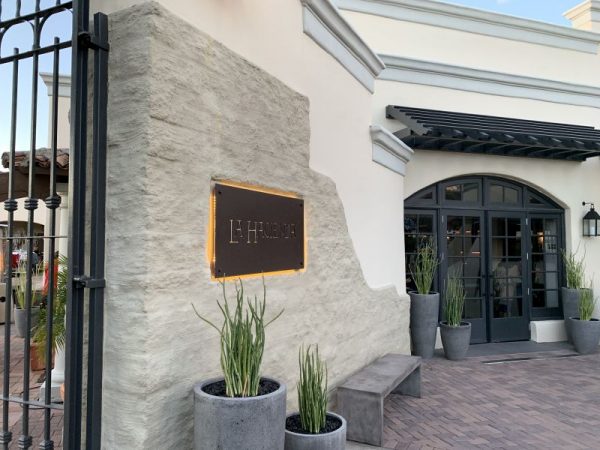
El Hacienda Restaurant

Lobster Taco Appetizers…sooooo good
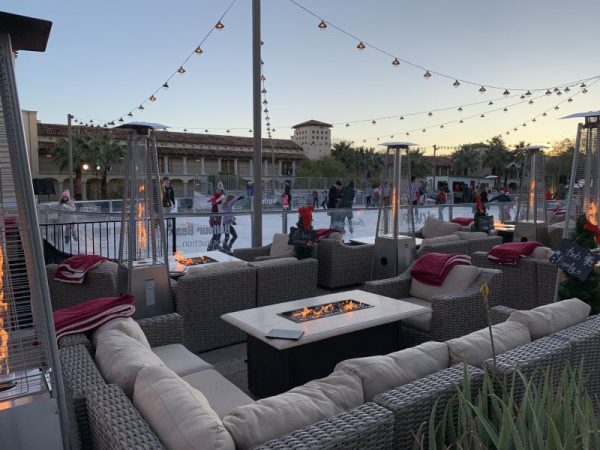
Desert Ice Skating…only at the Princess
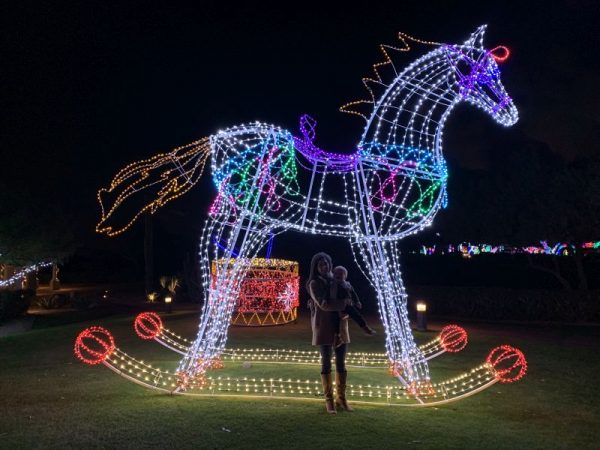

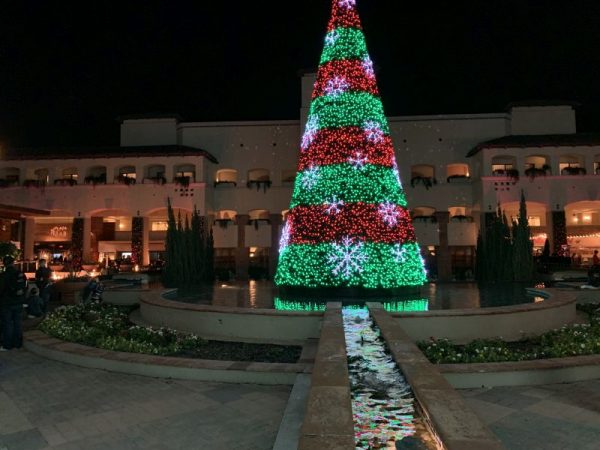
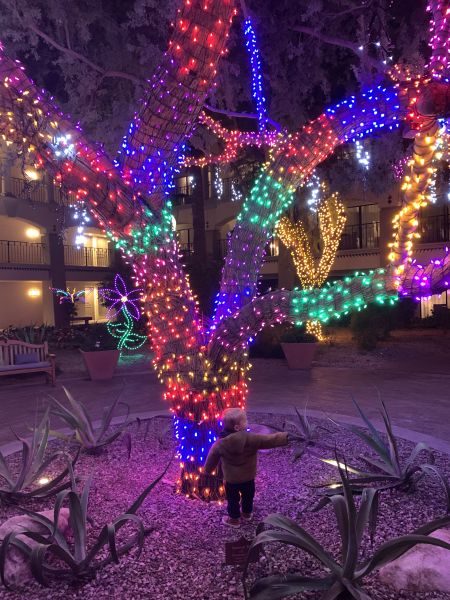
Will’s favorite tree
Day 2: Grayhawk Raptor Course
My second round was Grayhawk, host site for the upcoming 2020-2022 NCAA Championships. Grayhawk Golf Club is also famous for being Phil Mickelson’s home away from home. Mickelson was one of the club’s original ambassadors, and he has sported the club’s logo on his bag for a while now. The restaurant on site is actually named Phil’s Grill after Lefty, and it is where I enjoyed my post-round meal. Solid spot for a beer overlooking the Raptor course and practice facility.
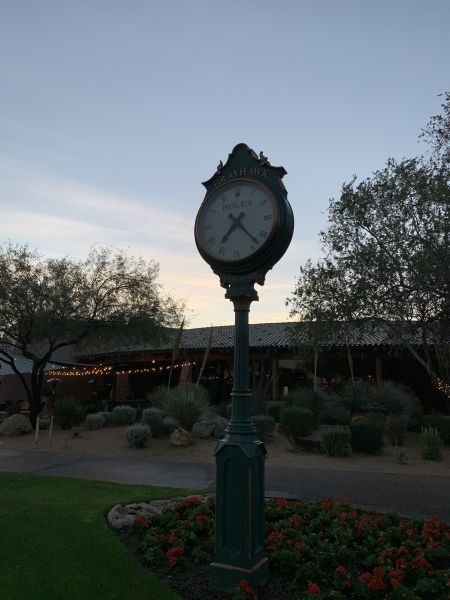
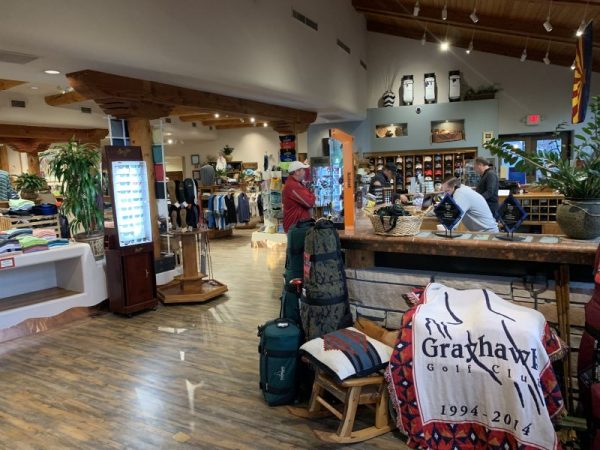
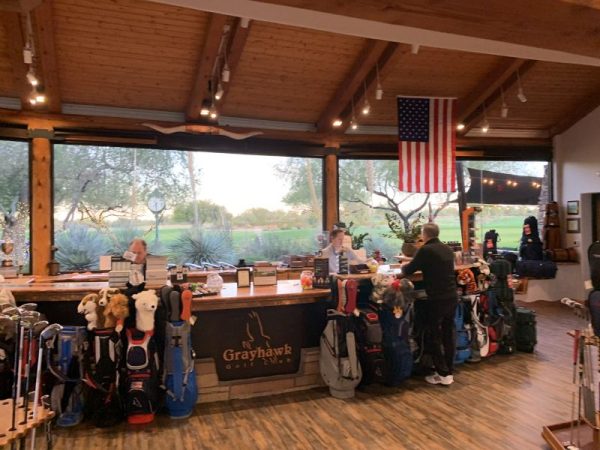
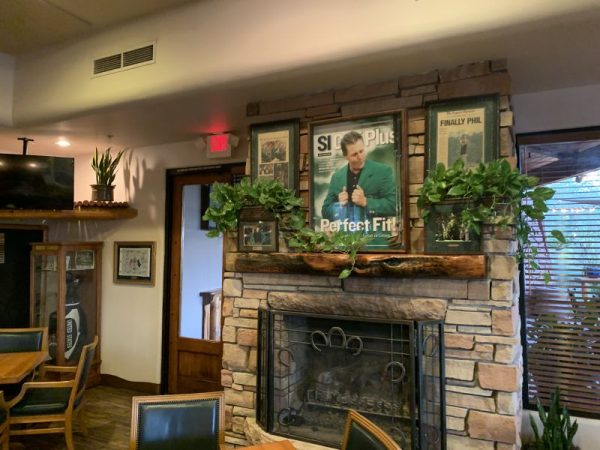
Phil’s Grill Restaurant at Grayhawk

Grayhawk is home to two separate but truly equal golf courses: the Raptor and the Talon. I only had the opportunity to play the Raptor, but I did take a cart ride around the Talon and can attest that both courses house some truly unique golf holes. Grayhawk was established in 1994 but the club already has a ‘special’ kind of atmosphere for such a young place. The locker room is full of nameplates belonging to the best in the game and the amount of memorabilia, most of which belonging to Mickelson, make the club feel more established than it should in only 25 years of existence. The place feels historical. But the courses definitely back up the clubhouse swagger.
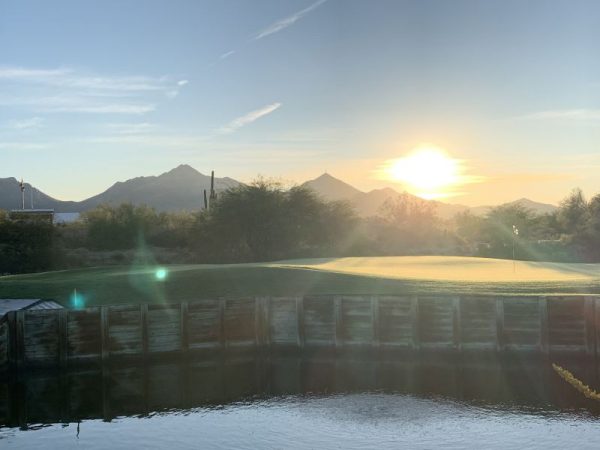
Grayhawk Talon Course
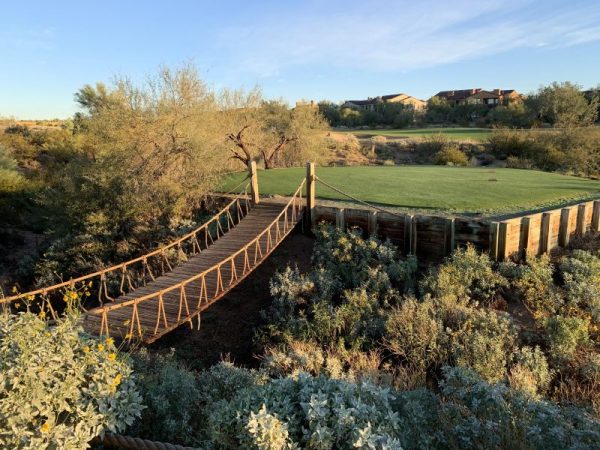
Grayhawk Talon Course
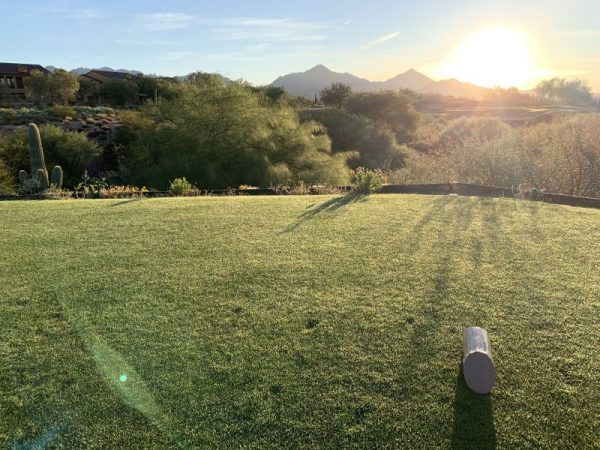
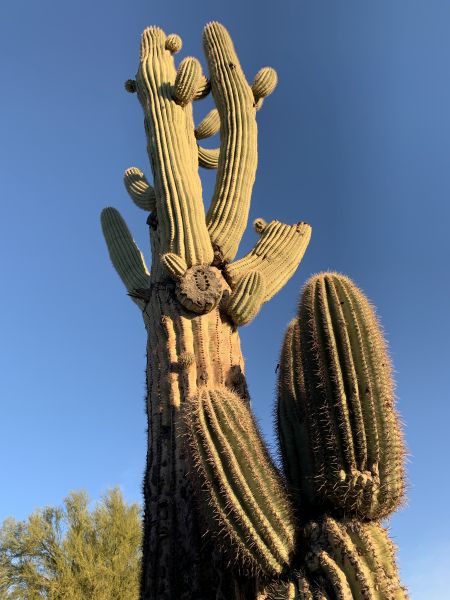
This is true desert golf. An errant tee shot here and you’re in the real junk…cactus and other natural plants that can impede your swing, swallow your ball and probably pierce your skin. I love it. The Raptor is a Tom Fazio design that stretches out to 7,090 yards and a par of 72. A bit further out of town than TPC Scottsdale but still in the city, the topography changes a bit to more rolling hills and wilder terrain. The desert tee shots can play tricks on your eyes, though. I’m not sure if it’s the McDowell Mountains in the distance or the natural swale of the landscape, but many of the tee shots looked like the landing areas were smaller than they actually were. When I would get to my second shot, I often realized that the fairway was much bigger than it appeared from the tee.
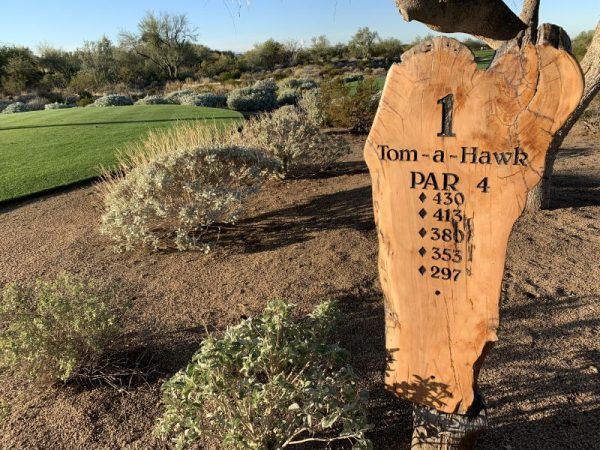

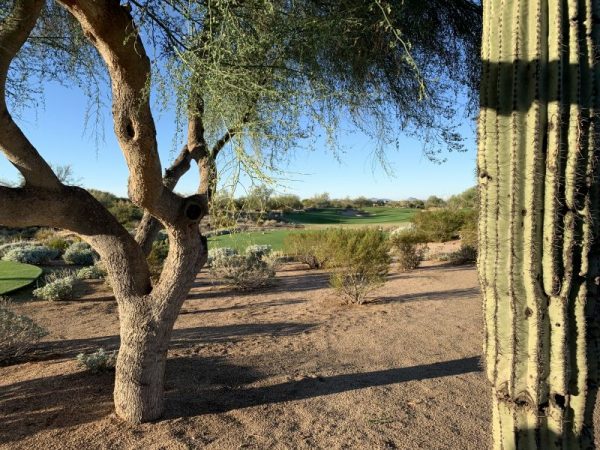
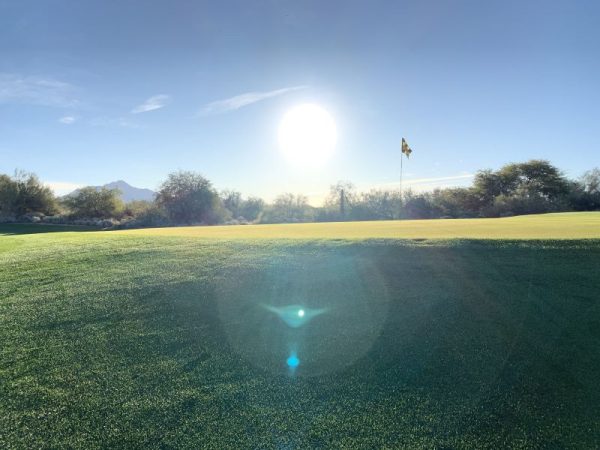
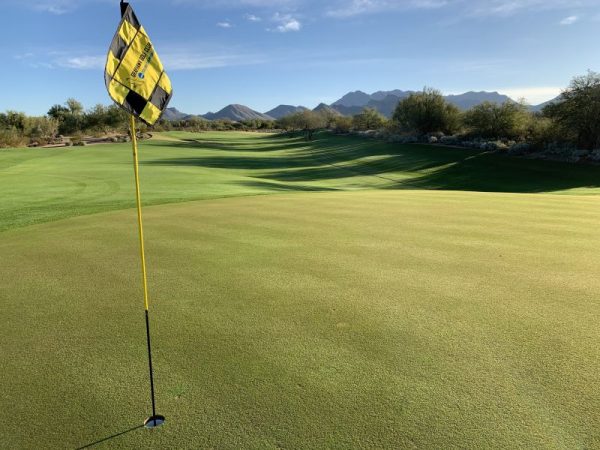
A weekend round at either the Raptor or the Talon could cost you north of $200, but what can you expect for Mickelson’s place. They do offer several different rates throughout the day and week, and a special 36-hole rate if you want to knock out both courses in one day. And it’s obviously cheaper on a weekday. For the money though, you are certain to get a quality round of golf. This course is just plain fun to play and is real deal desert golf. This is what I expected when I started planning an Arizona golf vacation.
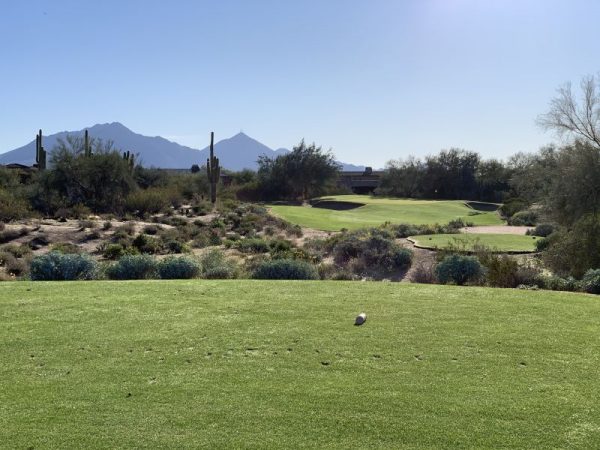
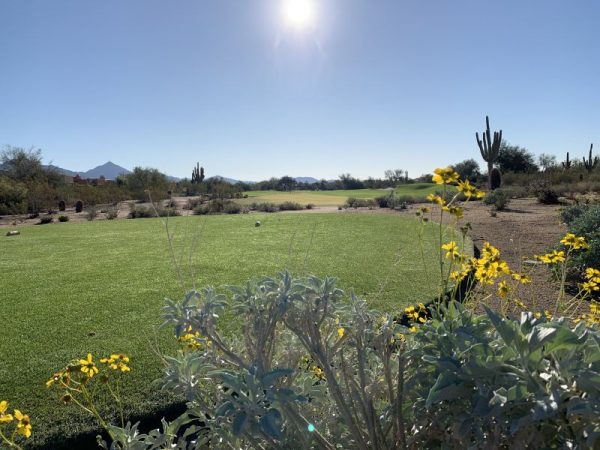
The par three 8th hole at Raptor is the best hole I played all weekend. It’s one of those rare holes that makes you say ‘oh wow’ when you step up to the tee. The green is guarded by a team of elevated bunkers, protecting most of the putting surface and only exposing its top right tier to the tee box. The flag is just tall enough to peak above the top of those bunkers, giving the brave something to shoot for.
The shot is a mid iron and a miss right will still hit the large green complex. What you can’t see from the tee box is that a miss left will usually use the contours of the hill to kick your ball right, also on to the green. Its deceptively easy. My kind of shot.
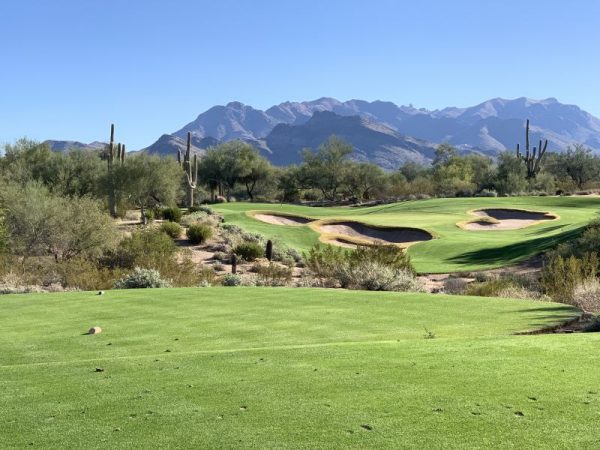
8th tee box at Grayhawk Raptor
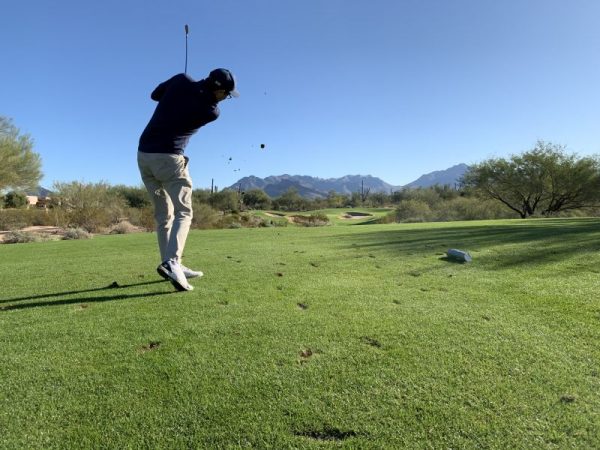

8th Green at Raptor looking back at tee
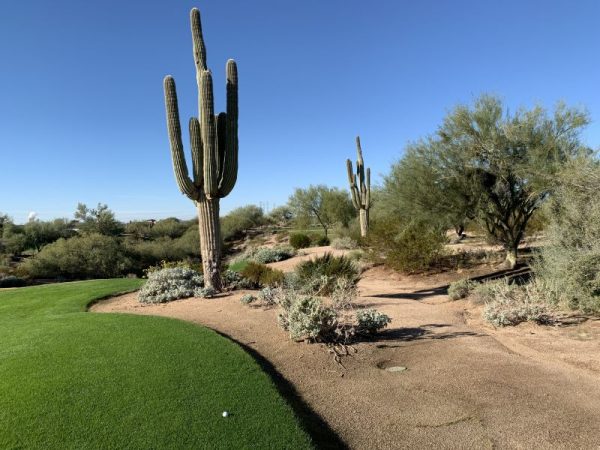
The course finishes strong with a get-able par 5 back towards the clubhouse. This hole will hopefully provide a ton of drama for college golf over the next three years at the NCAA Championships.
Ultimately, I walked away from Grayhawk thinking that if I lived in Scottsdale, this would probably be my hang. The clubhouse is legit with great food options…even an extra bar/restaurant down near the Talon driving range keeps you satisfied no matter where your game takes you. They pipe music on speakers at the range while you warm up, too. Like I said…it’s a cool place to hang out. And the courses are what I was looking for in a desert track. Not perfectly manicured. Rugged. Lush green fairways contrasted with true desert sand and foliage. It’s going to be a beautiful course to watch on television for the NCAA tournament.
Add all of that to the Phil Mickelson aura that surrounds the place, and you’ve got yourself a pretty damn cool spot.

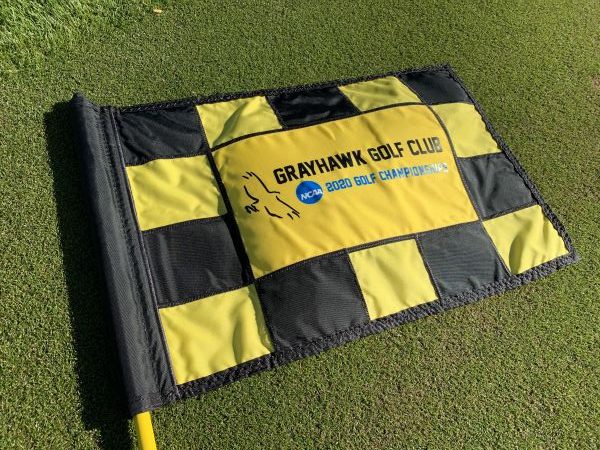
After the round, I met back up with the family for more time lounging around the Fairmont Princess. We ended up taking the Holiday Train ride around the property so the kiddo could look at all the Christmas lights. Then we settled in for an early dinner at Bourbon Steak, the premier dining option at the Princess.
No joke, this was the best steak I’ve ever eaten in my life. It was a simple 8 ounce filet with the restaurants three signature sauces on the side…but I didn’t need any of them. The meat was so tender I could honestly cut it with the side of my fork. And we had a cauliflower soup to start that was so good even my 18 month old son couldn’t get enough of it. I was tired from all the golf and my wife was tired from all the shopping. Yikes.
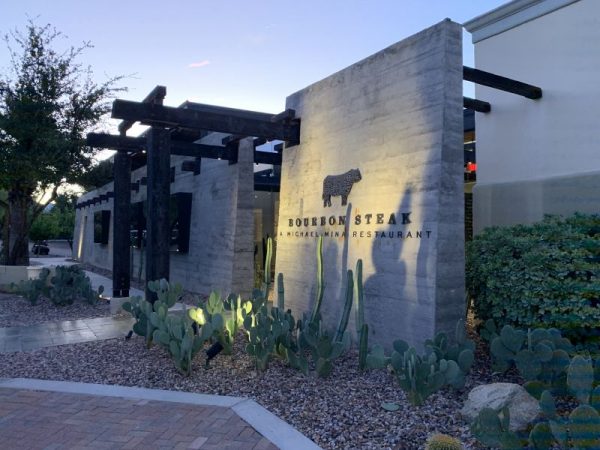

Cauliflower Soup…a hit with babies
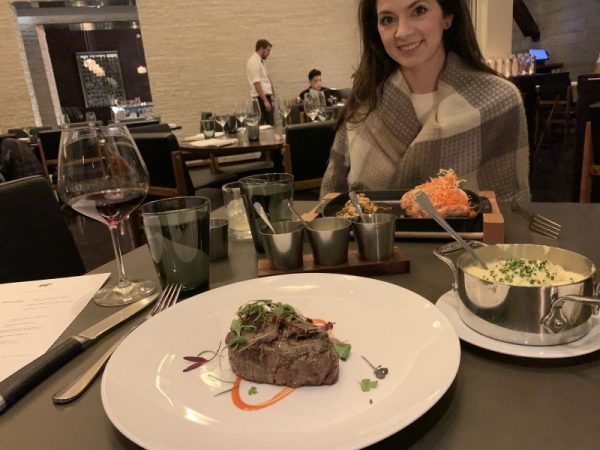
Day 3: We-Ko-Pa Saguaro Course
My final day began with a visit to the Well & Being Spa at the Fairmont Princess for some assisted golf stretching. This was a new experience for me but I gotta say…I kind of dig it. It was a mix between a yoga session and a massage, with a focus on golf swing flexibility. By the time I got to the course, I didn’t feel like I needed to warm up at all. Strange, but I think it might be a valuable thing to do before a round if you have the time. If nothing else, I learned a few stretches that I will absolutely utilize pre-round from now on.
My last round of the weekend was early morning at We-Ko-Pa Golf Club. I was playing the Saguaro course, a Coore/Crenshaw-designed track and one of two 18 hole courses on property. And I may have saved the best for last.
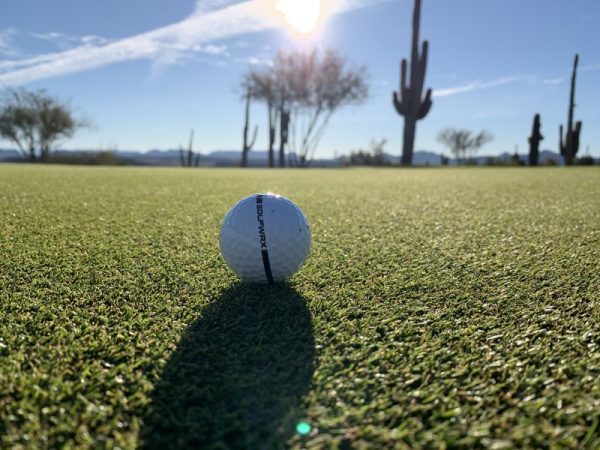
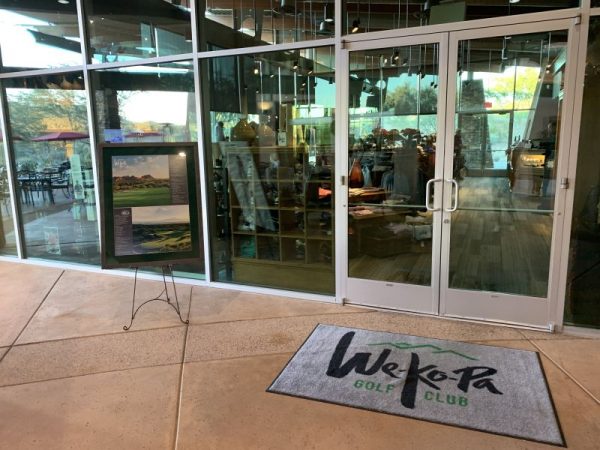
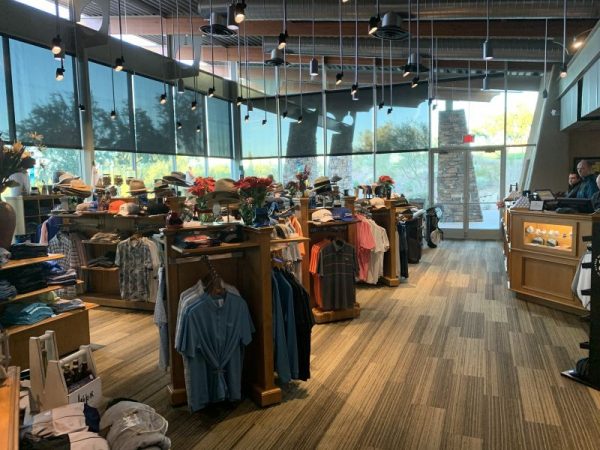
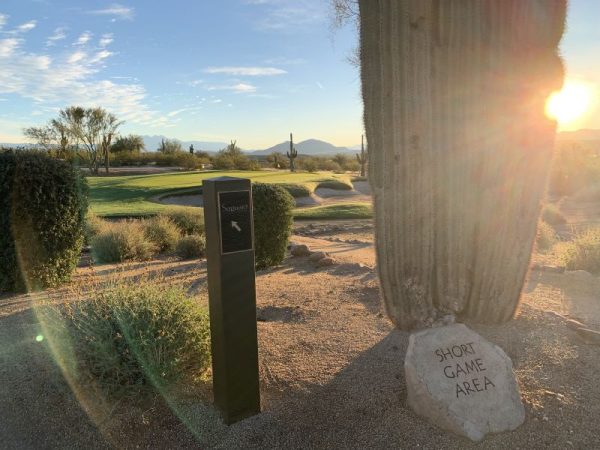
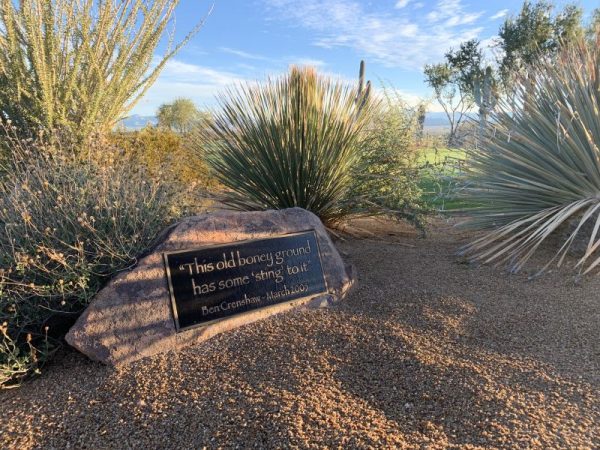
We-Ko-Pa Saguaro is just my kind of golf. If you’ve read any of my previous experience articles, you know that I am a HUGE fan of Coore/Crenshaw layouts. I think they’ve just got it figured out and this course is no different. If you take away the desert landscape, which here is much more untamed than at Grayhawk and TPC, the course just feels like a CC design. Fairway elevation changes, deceptive breaks and green contours, and seamless transitions from green to tee box routing.
Add that to the fact that the golf club is about 30 minutes outside of town, up in the Fort McDowell Yavapai Nation. So the landscape is open and the mountains just feel closer. The course doesn’t have any houses on it at all, which is unusual for Arizona golf. So this is a truly more natural experience. The Sonoran Desert is certainly vibrant here. The trouble right and left of these fairways is real-deal desert. Not a lot of relief to be found.
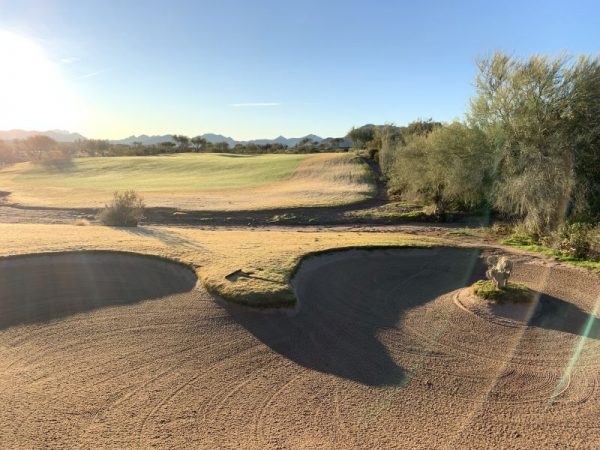
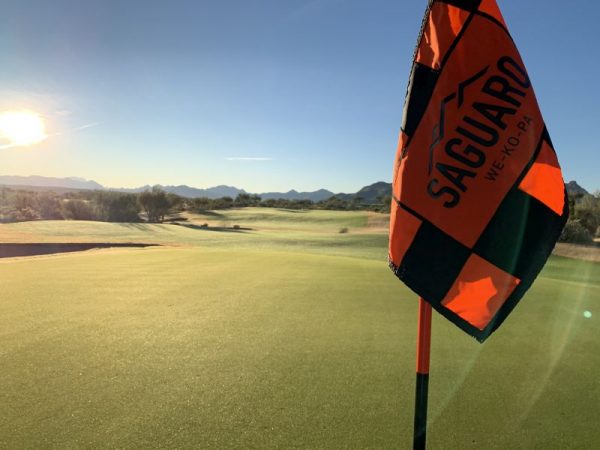
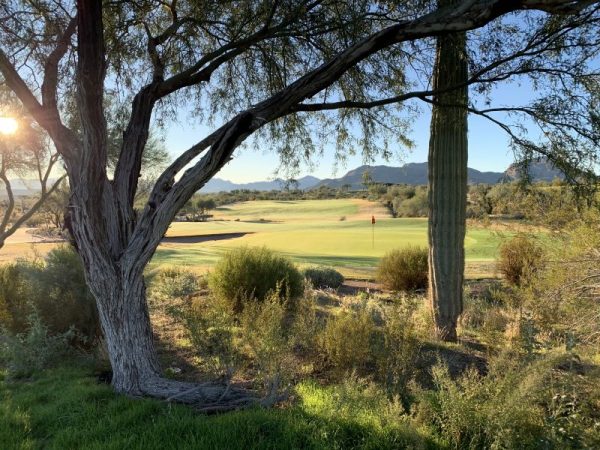
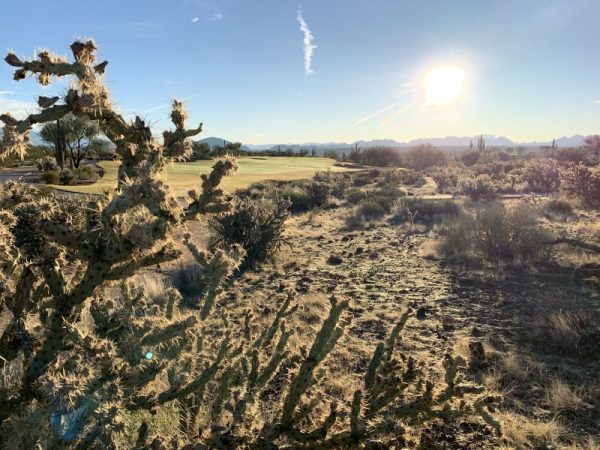
The Coore/Crenshaw strategic characteristics are still present in the design. Much like Bandon Trails, Sand Valley and Streamsong Red, there is nothing hidden from the golfer. The choices are all right in front of you. Fairway bunkers sit conveniently in middle fairway landing zones. Greens have visible false fronts and tabletop sides. You can see the options and it’s up to you to execute the shot. So simple and yet so many designs today feature blind shots and punitive hidden hazards. You won’t be frustrated by that here at Saguaro. This golf is meant to be thought about and enjoyed.
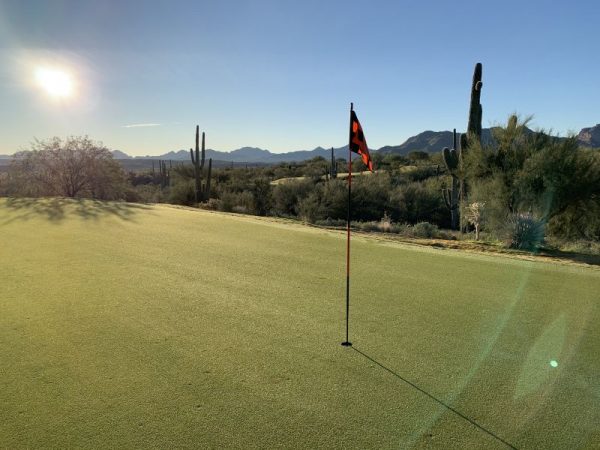
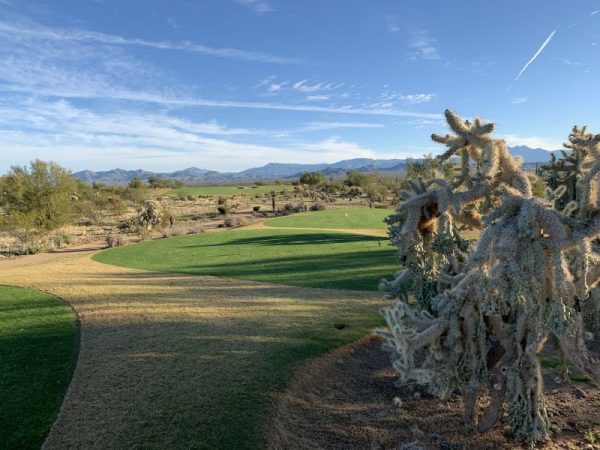
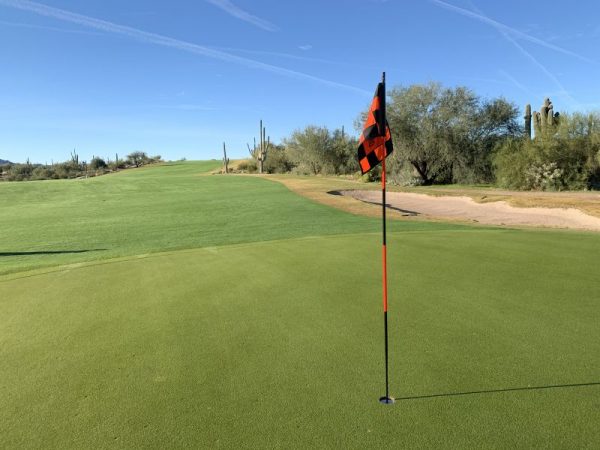
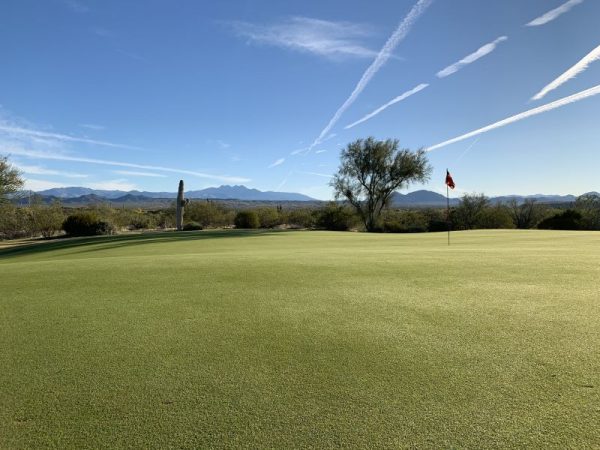
The greens are fair and run smooth. There aren’t many flat putts out here, but that feels like it’s because the course is at the foothills of the nearby mountain range. Saguaro feels natural…like the course has been there for ages and has always just been a part of the desert landscape. And the course is incredibly walkable, if that is your thing. I decided to hoof it for this round and I feel like I really got a taste of the desert landscape that way. Saguaro plays to 6,966 yards from the tips and is a par 71.
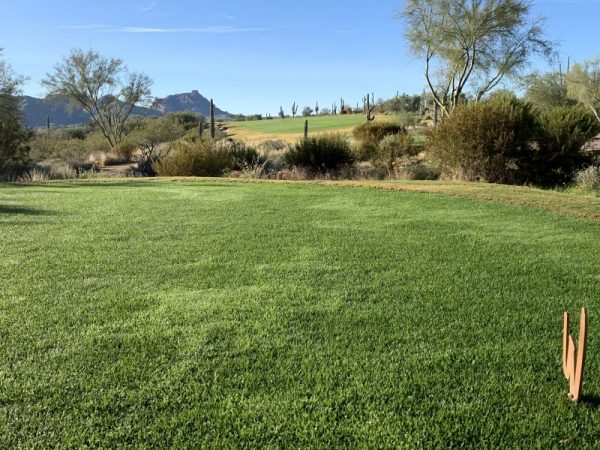
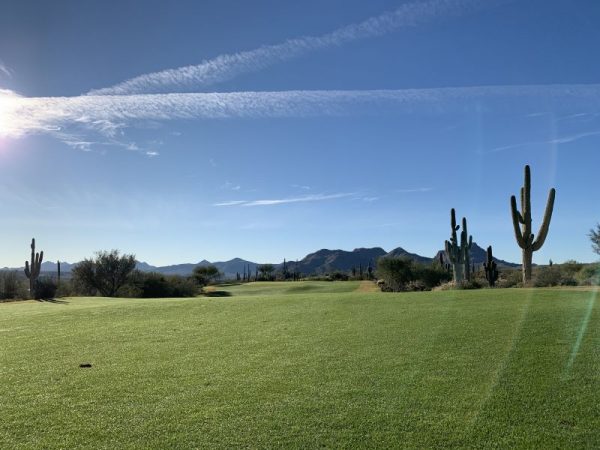
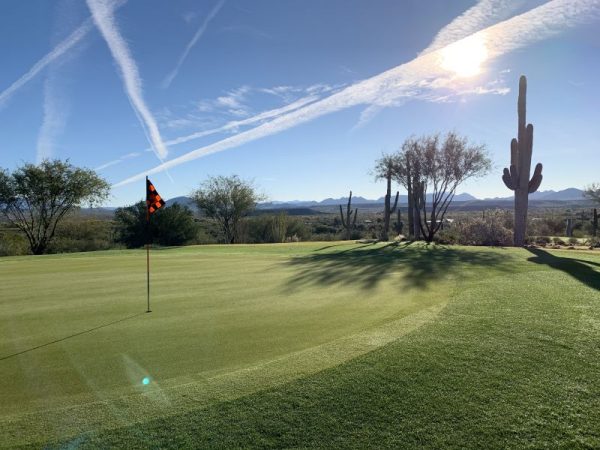
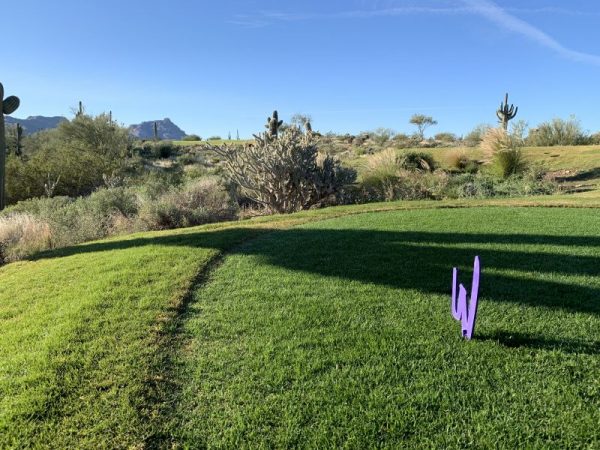
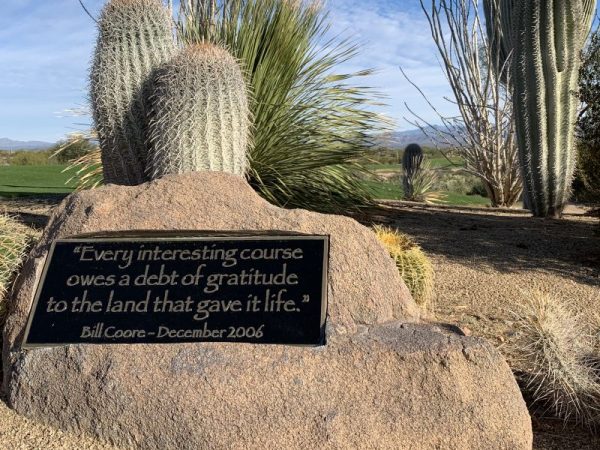
Green fees can reach $200 in the high season here. But summer and shoulder rates are much lower, which is true of all Scottsdale golf. But please do yourself a favor and don’t miss out on We-Ko-Pa. It’s a bit outside of town, but it was my favorite round of the trip. It probably helps that the weather was perfect, but I feel like that happens more often than not in Arizona.
We-Ko-Pa is a part of a resort and casino, so they offer several different stay-and0play options. It’s not a bad option if you’re looking to gamble and stay a bit outside of town.
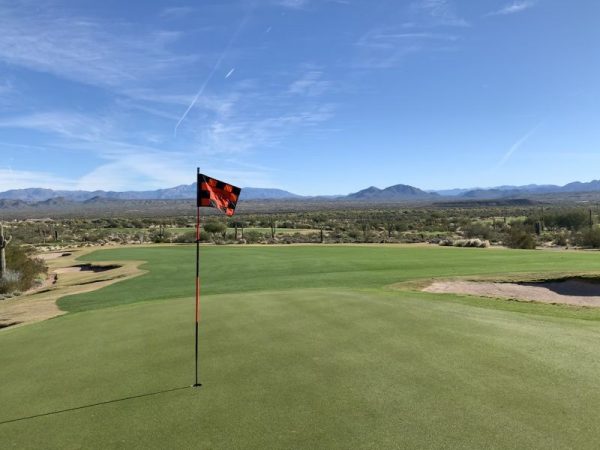
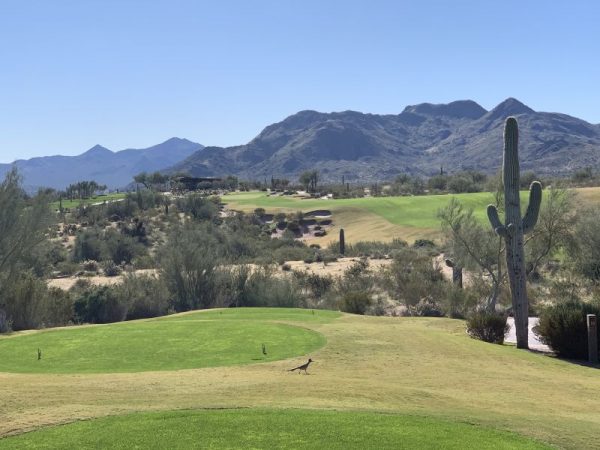
18 Tee at We-Ko-Pa Saguaro
To end the round, I was surprised by my wife and baby boy on the 18th fairway. The young man already has some golfing skills and loves nothing more than a golf cart ride. It was such a blast to see him out on We-Ko-Pa, looking at the giant cactus and desert mountains. We might be looking at a future Arizona State golf team member here.
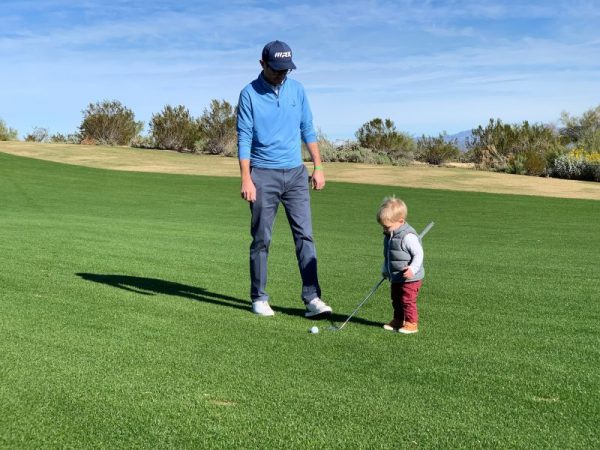

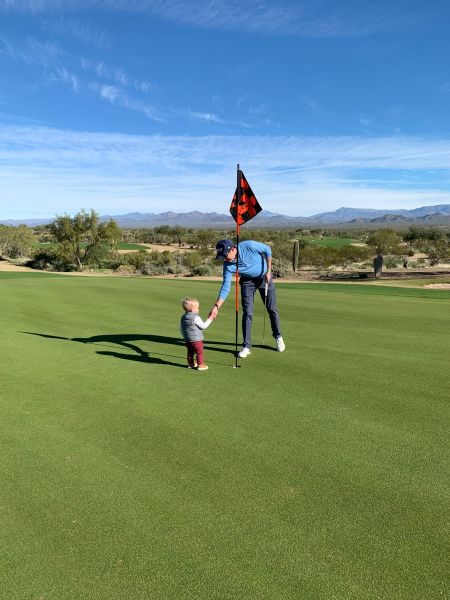
18 Green Handshake
Finally, we headed into downtown Scottsdale. The Kierland shopping center was fancy and well decorated, with more Christmas lights on every palm tree. And of course, a shopping mall Santa for photos. It also had every store you’ve ever heard of; it was definitely the hub for Scottsdale shopping. It felt fancy and upscale, but there wasn’t anything too high browed that would turn you away if you showed up in sweaty golf clothes with your Christmas shopping, margarita filled wife. Ask me how I know. We had our last dinner of the trip at The Mission—a trendy two-story Latin themed spot. We had a really good meal here and that may start to sound like a broken record at this point. But Scottsdale appears to have the food and beverage game figured out. I can only imagine the amazing dining options we missed, but I feel like we enjoyed some great dinner spots. I would recommend them all.

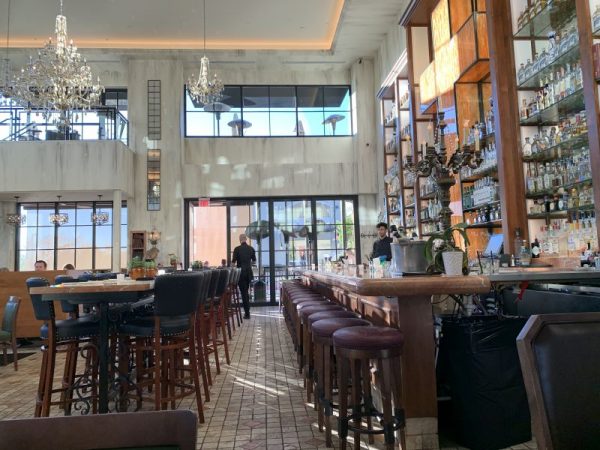
So, to summarize…
Like a great golf course, Scottsdale gives you options. It would take a full calendar year to play all the great golf in the area, and the food options are even more plentiful. Everyone I met that lived here seemed genuinely happy and proud of their community. It seems like a great place to call home and now I can attest that it is a phenomenal place to visit with your family. Especially around the holidays. Merry Christmas, readers!

If you want help planning your next golf experience or just have any questions about some of mine, reach out to me on Twitter or Instagram and shoot me a message. And feel free to check out my other golf experience articles. I look forward to hearing from you!
- LIKE144
- LEGIT83
- WOW31
- LOL1
- IDHT0
- FLOP4
- OB3
- SHANK3
19th Hole
The biggest golf resort you never knew (but should)
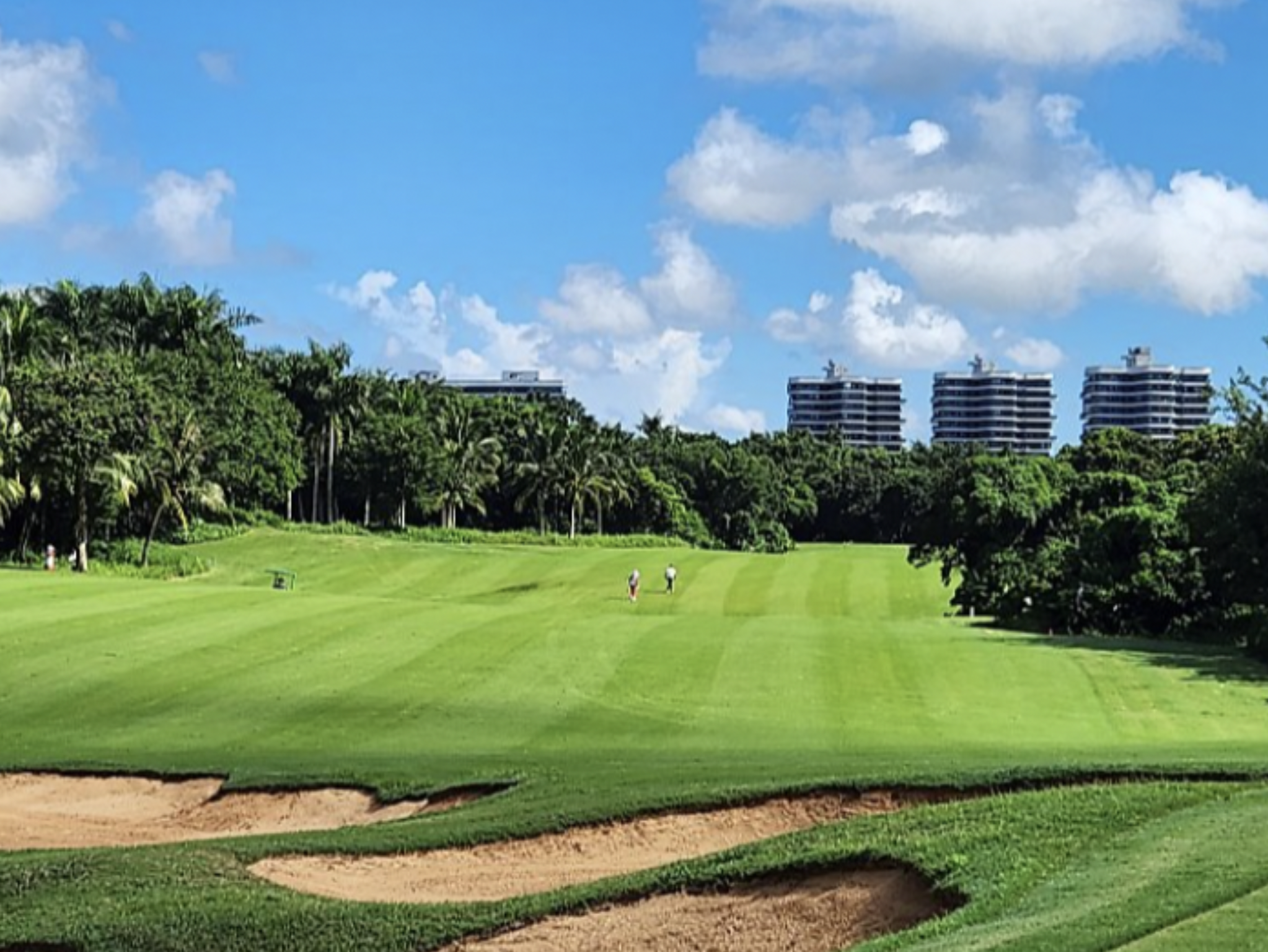
As a Korean-Canadian and an avid golfer for over 35 years, I am fortunate to have played on many beautiful golf courses in the West and the Far East. I still have a boatload of courses like Pebble Beach and St. Andrews on my bucket list, but I came to learn that Asia had plenty of such places to visit as well.
I have recently had the good fortune of playing the iconic Blackstone Golf Club at Mission Hills Resort in China, which is consistently ranked as one of the best courses in Asia. Blackstone is particularly famous for hosting the Tiger Woods vs. Rory McIlroy exhibition ‘The Match at Mission Hills’ in 2013. The event brought international attention to the sprawling luxury resort and boosted the level of interest in the game in the region.
Before delving into my amazing experience at Blackstone Golf Club, here is a little bit of information about the best golf resort you may never heard of.
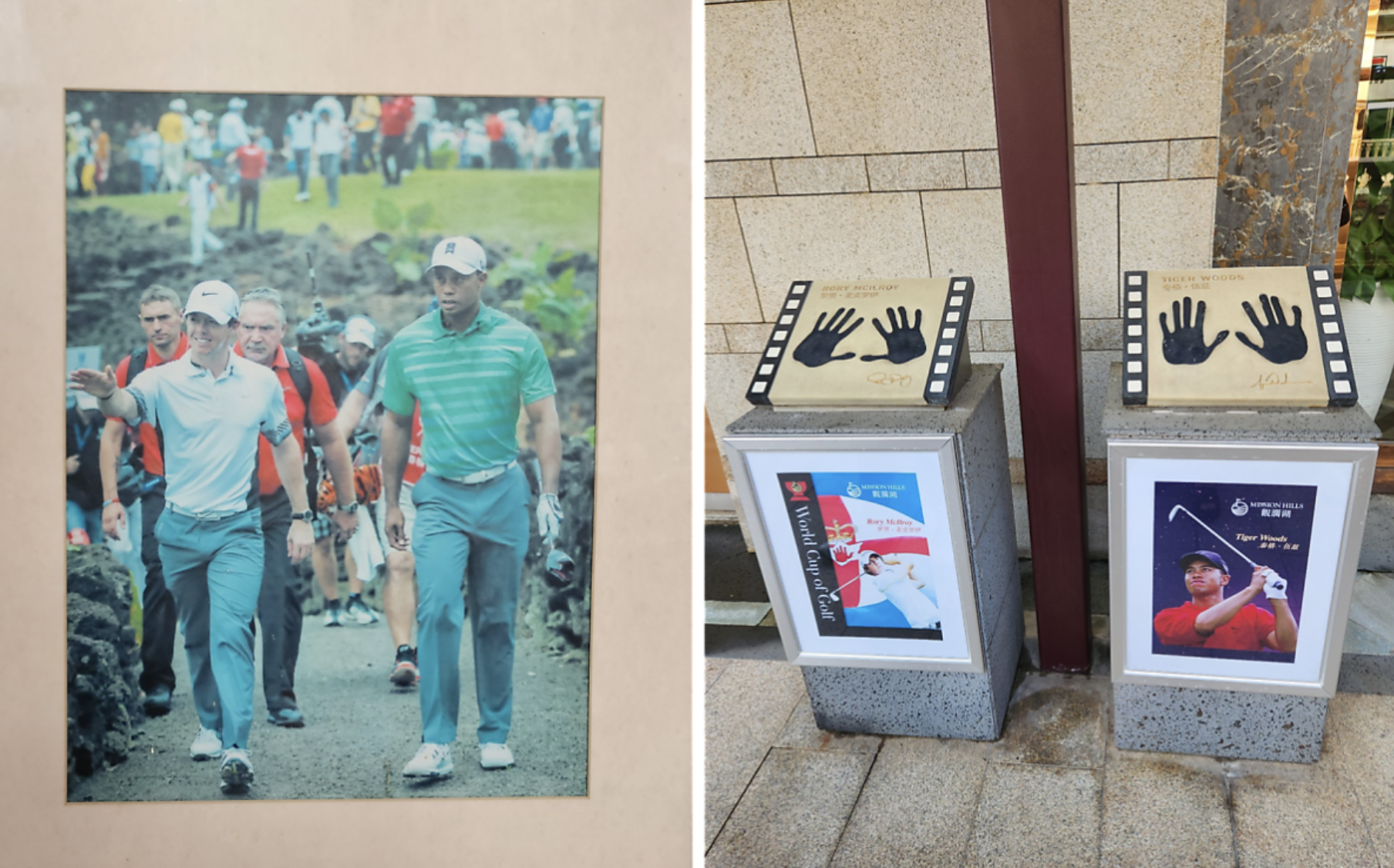
Tiger and Rory faced off at the very course I was at in 2013. Don’t worry, I won’t spoil it by telling you who won.
The Best Golf Resort in The World?
Mission Hills Golf and Resort is located in the southern part of China on Hainan Island, which is about the size of Maine. Often referred to as the Hawaii of China, its tropical location gives the island year-round sunshine with temperatures between 75~90°F in the winter and 60~75°F in the summer. Along with dozens of other notable golf resorts and courses on the Island, the resort is a popular destination for golfers from Asia, Europe, and as far away as Australia and New Zealand.
Mission Hills first opened its doors in early 2010 with the aim of becoming the best resort in the world. I’m not sure if they achieved their goal, but before you smirk at their ambitiousness, Mission Hills is currently listed in the Guinness Book of Records as the World’s largest golf resort with a total of 10 world-class golf courses. That is an astounding 180 championship-class golf holes in one resort! The courses are designed by the talented Schmidt-Curley Design team who are behind some of the best courses in Asia and around the world.
The Blackstone Golf Club is considered the “crown jewel” course at Mission Hills Resort and gets its name from the plethora of black lava rock that is found all over the course as part of its beautiful charm. But don’t be fooled by its rugged beauty, as the monster-long Blackstone has hosted several World Cup of Golf championships (guess who teamed up for the US to win in 2011?) and the annual World Ladies Championships. It also hosts the annual World Celebrity Pro-Am attended by an amazing A-list of screen stars, pro golfers, and elite athletes from around the world.
So yeah, the course is quite good.
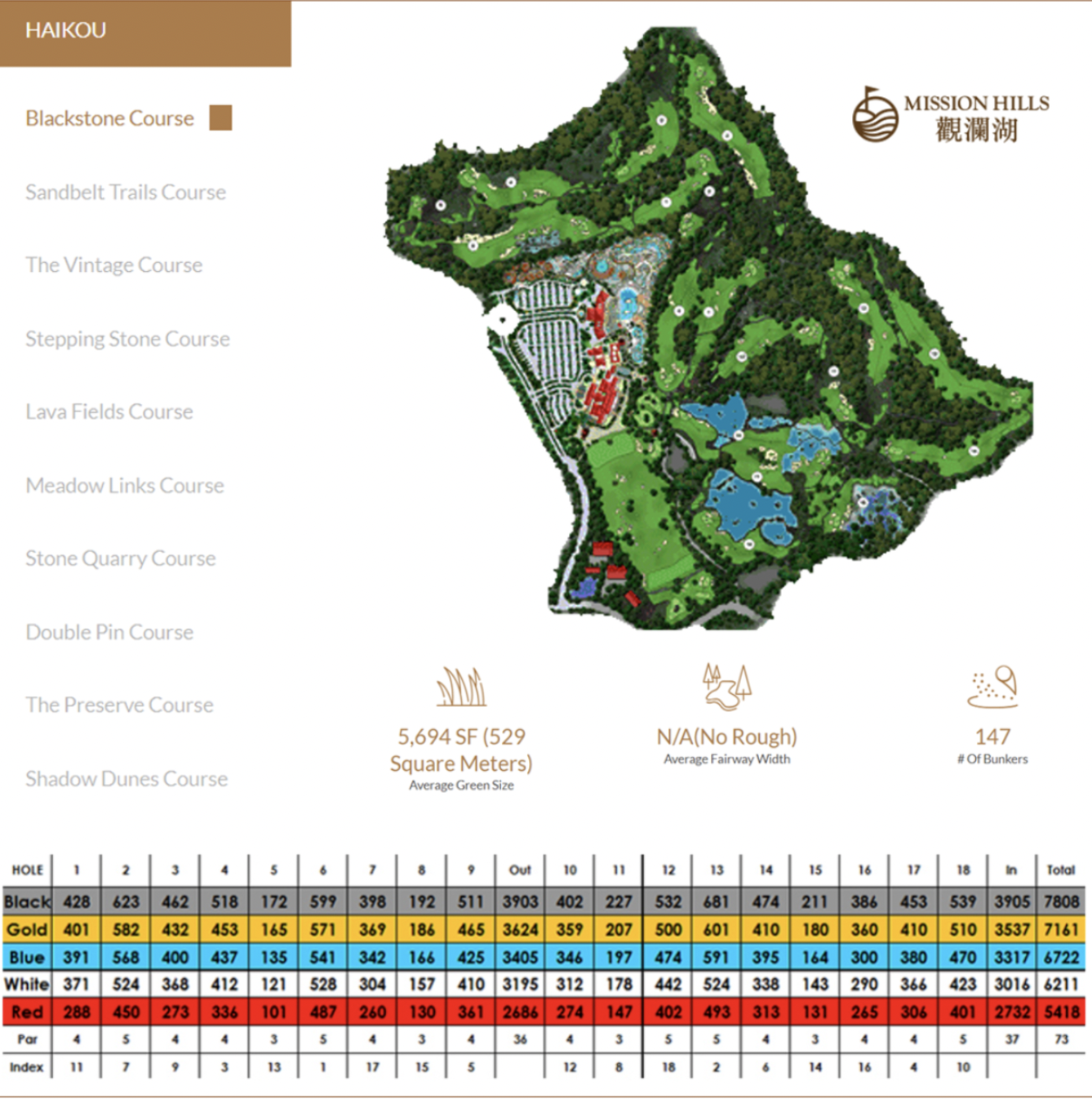
On top of that, the resort holds another world’s best distinction, with a total of 168 different hot springs and pools within the resort. Unfortunately, I was too immersed in playing golf to take advantage of a good hot soak, but it will be on the top of my list to do with my whole family next time.
Now, let’s take a close look at what the Blackstone course was all about, and keep in mind that the course descriptions and opinions are all my own from experience and perspective.
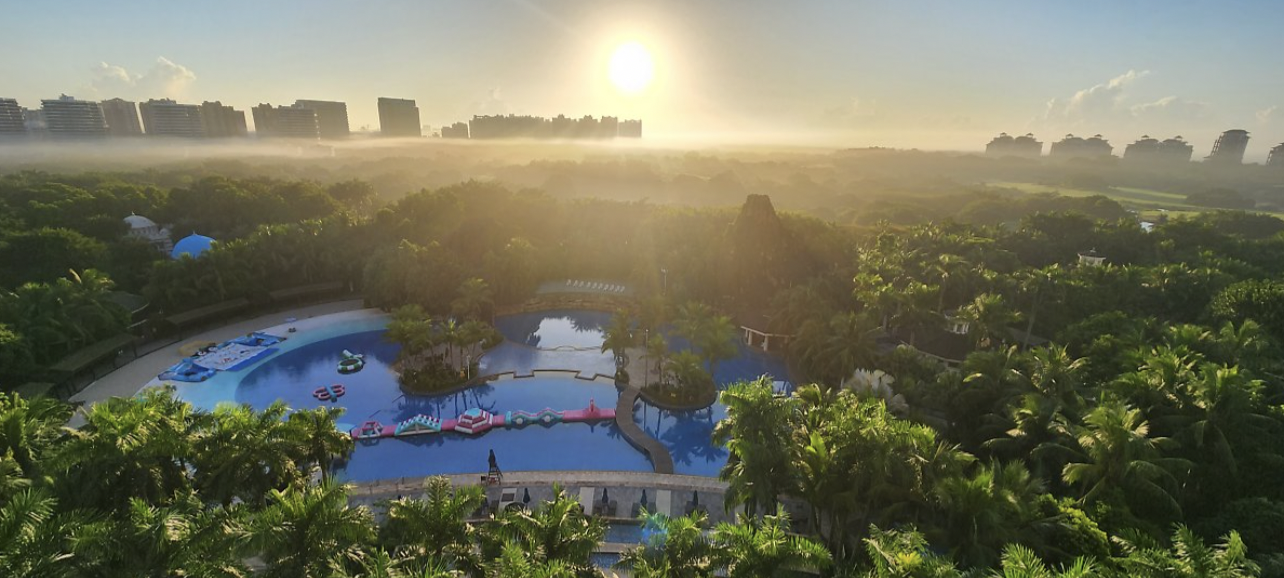
The early morning view outside the hotel room overlooking the course and resort is breathtaking
Greens
The green condition was quite superb, albeit a bit slow from Western standards. According to the caddie, the green speed was measured at about 2.9 meters, which translates to about 9.5 on the stimp meter. A speed of 7 is considered to be slow, and the average PGA Tour event is said to be about 12, so for us average folk the greens were rolling well.
The green size is quite large with nearly 5700 square feet average in size with less-than-subtle undulations and big rolling plateaus. The pins were placed slightly towards the front left of the green this day, and the approach shots were challenging for us amateurs to stuff close. The ball rolled straight and true to where it was aimed, and I only had myself to blame for missed short putts.
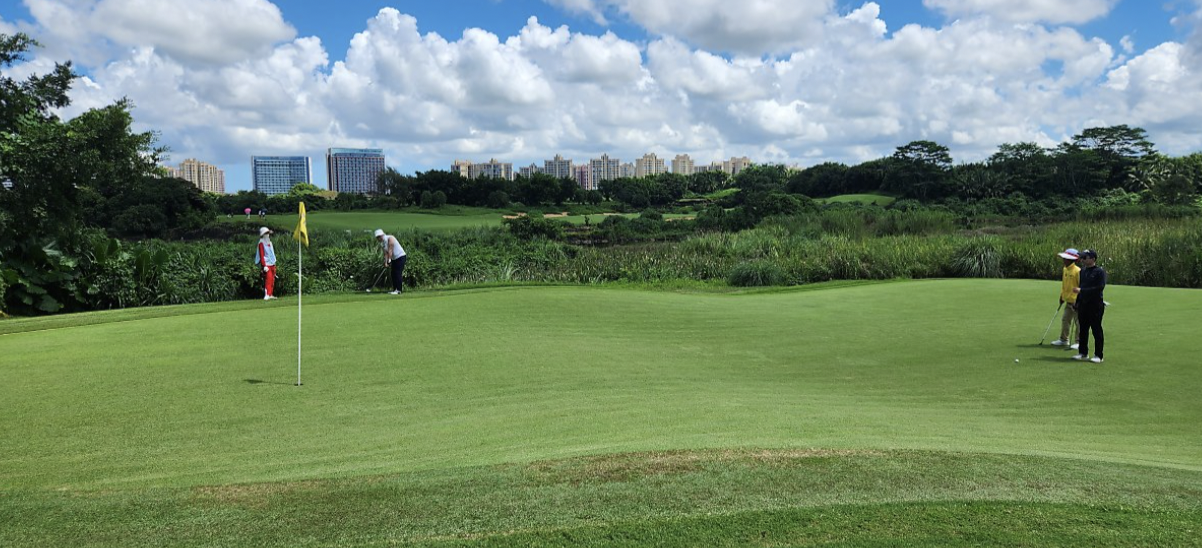
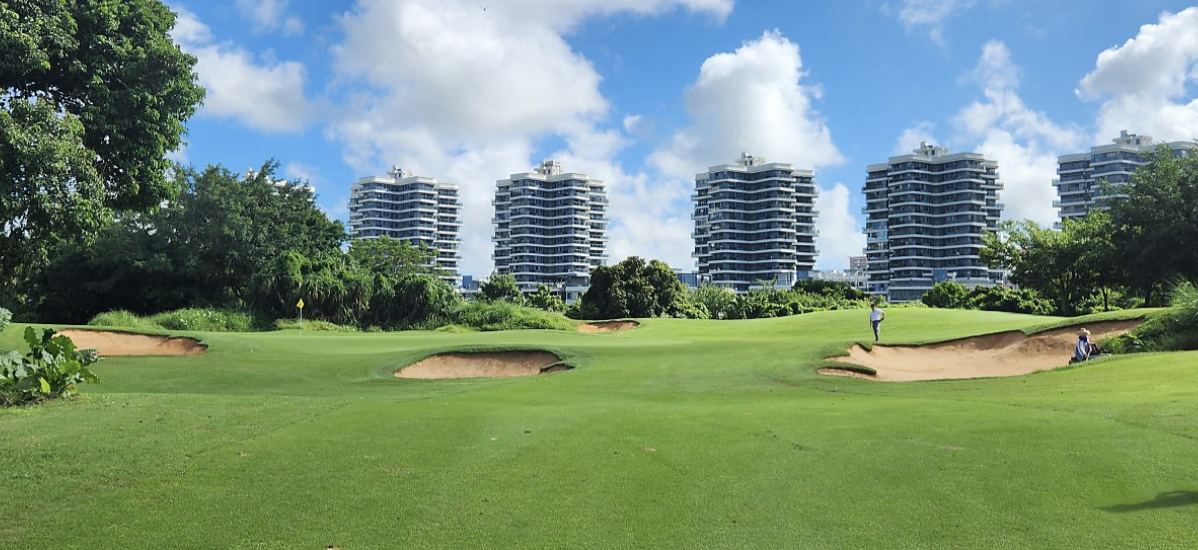
I don’t know if its an Asian thing, but we seem to have many courses with big greens and sometimes ridiculously big undulations and plateaus on them. We even have bunkers in the middle of the green, sometimes!
Fairways
Unlike many of the Korean courses I’m used to, the fairways are lush and readily yielded nice dollar-sized divots from well-struck iron shots into the greens. The course itself is huge and it was reflected in the long wide fairways stretching from tee to green.
Most of the fairways seemed to be free of readily noticeable trouble areas, meaning that what you see was what you got. However, upon close inspection, there were many subtle undulations which caused the stance to be slightly uneven at address. It wasn’t like St. Andrews level of fairway undulations, but it was there.
Also, the big prominent fairways bunkers often came into play and caused me to consciously aim away from them, which left longer approach shots into the green. We were somehow feeling confident this day and were playing from the blue tees. And for a guy who averages 240-yard drives on my best days, those small detours inevitably added 1-2 clubs more to the next shot.

Fairways were rolling nicely but were still a bit damp due to the sporadic short rain bursts.
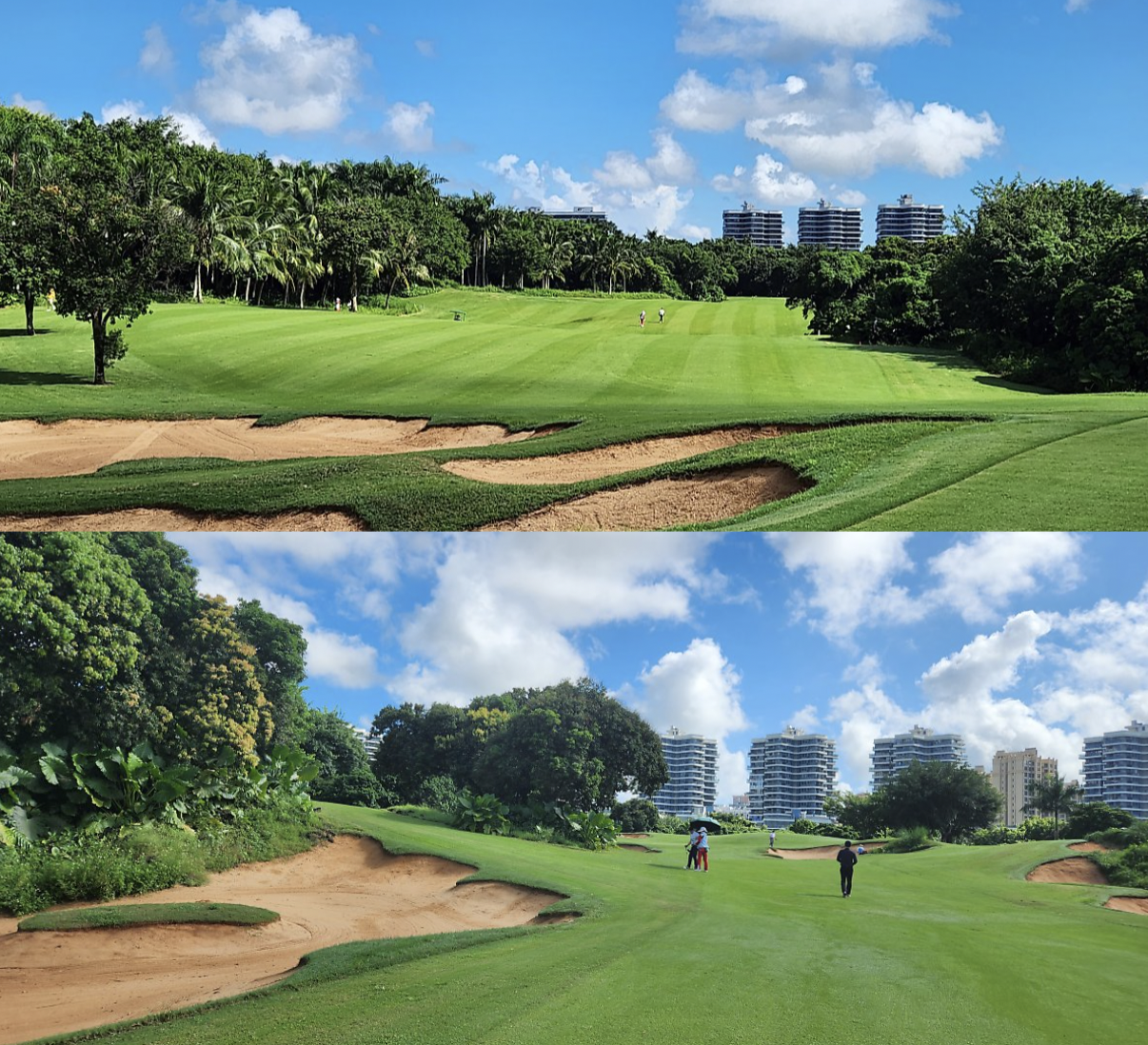
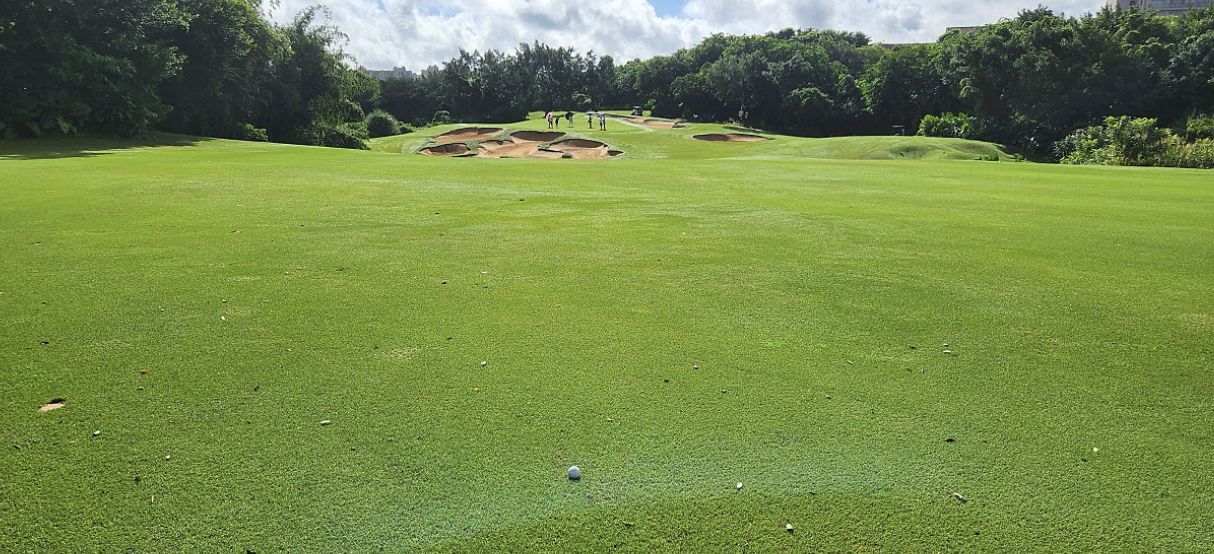
Most fairways were quite wide, though it didn’t keep our balls from escaping into the jungle.
Rough
Truth to tell, the rough wasn’t all that intimidating, as it was only modestly long, and the wide fairways pushed the rough back considerably. As it wasn’t tournament season and the course was set up to mostly cater to vacationers, it made sense not to make the rough too punishing.
Beyond the rough was mostly deep jungle-like vegetation, which made it next to impossible to hit the ball out of, let alone find it in the first place. Thanks to our amateur ball-striking abilities, however, we easily overpowered the hapless wide fairways to appease the jungle gods with our many golf balls.
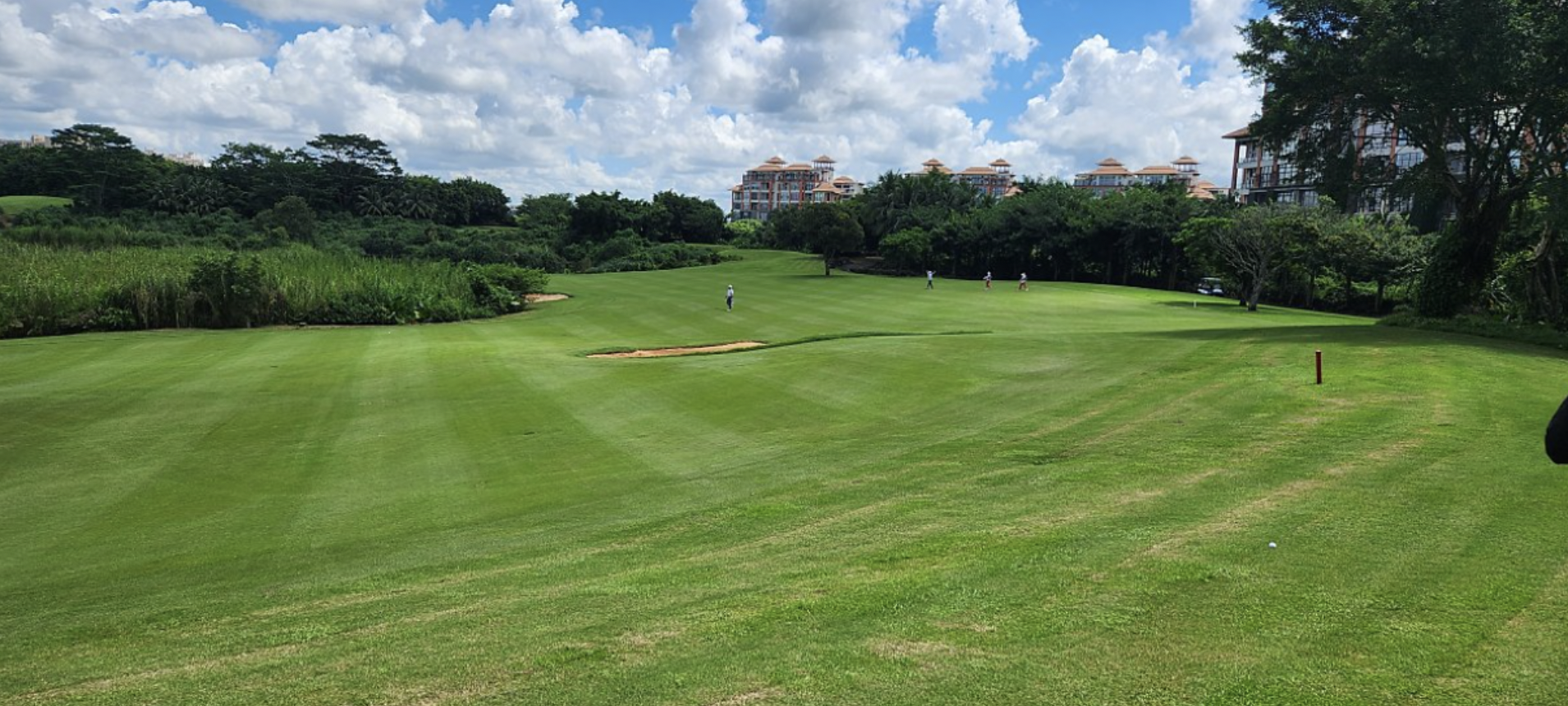
The rough is almost non-existent from tee to green, except for a little bit around the bunkers and extreme sides of the fairways. The course is very long, so I guess they want golfers to relax and not get high blood pressure?
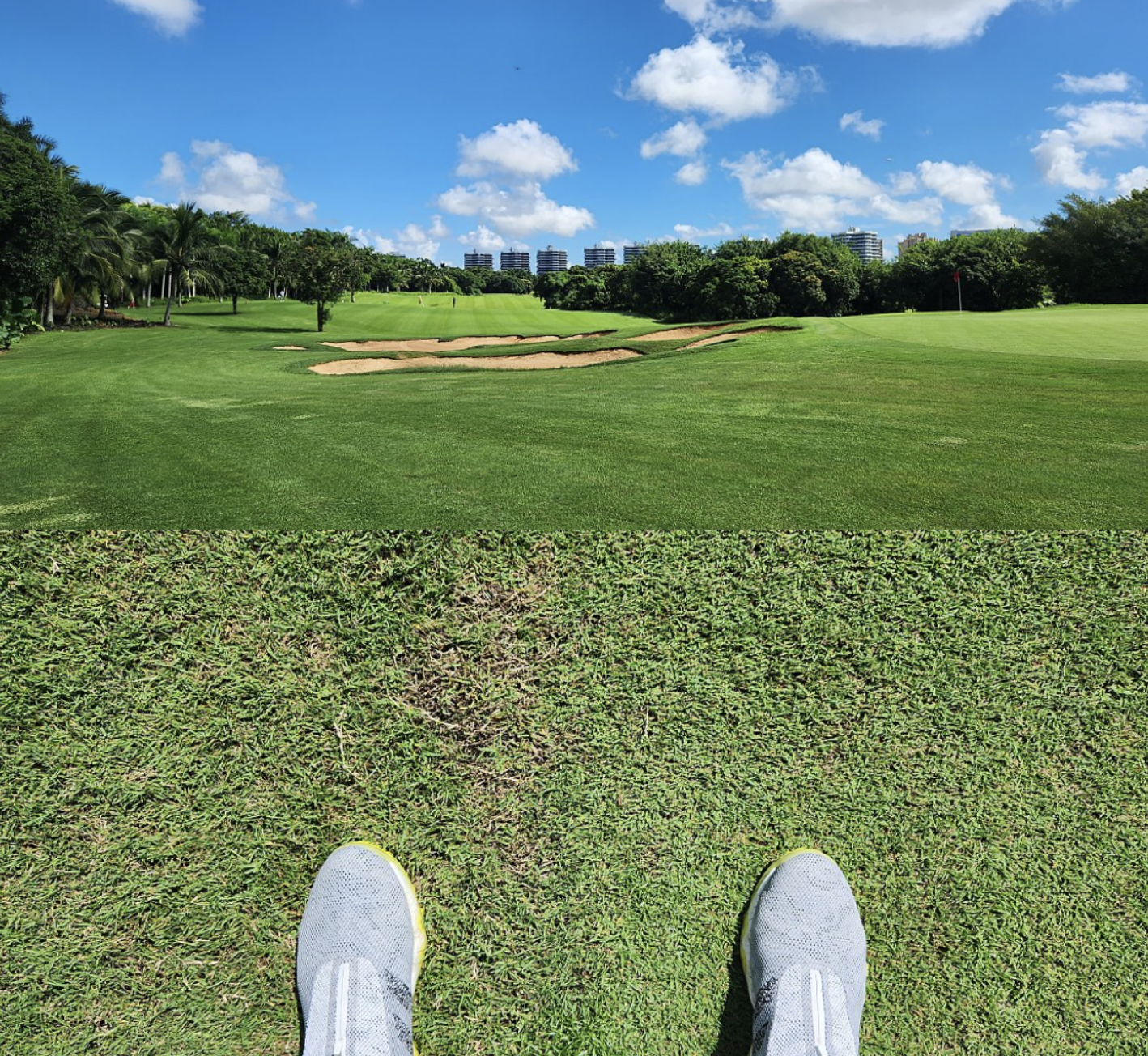
Fairway and 1st-cut rough
Bunkers
Blackstone had no shortage of fairway and greenside bunkers to daunt the average golfer. The many fairway bunkers were often quite large, and despite the mostly wide fairways, some were placed just at the right (?) places to catch drives that strayed left or right off the tee. Standing on the tees, the presence of so many bunkers was aesthetically pleasing yet intimidating at the same time.
The bunkers were meticulously raked and pristine, with the sand looking visually heavy but being very soft. Maintaining the bunkers to this level of readiness cannot be easy, as there are 10 courses at this resort! Even if there were just two bunkers per hole, that’s still 360 sand traps to rake and prep each day! Add to this the fairways and greens, not to mention the decorative foliage, the level of course maintenance at this level is quite mind-boggling.
I also don’t recall seeing any flat bunkers, as most seemed to have a healthy amount of incline at the front to make it harder to move the ball forward a long way. The greenside bunkers were also deeper and usually presented an upslope lie, and the shots had to have some climb to escape from them. If you have trouble hitting the ball straight, be sure to sharpen your bunker play when you visit Blackstone.
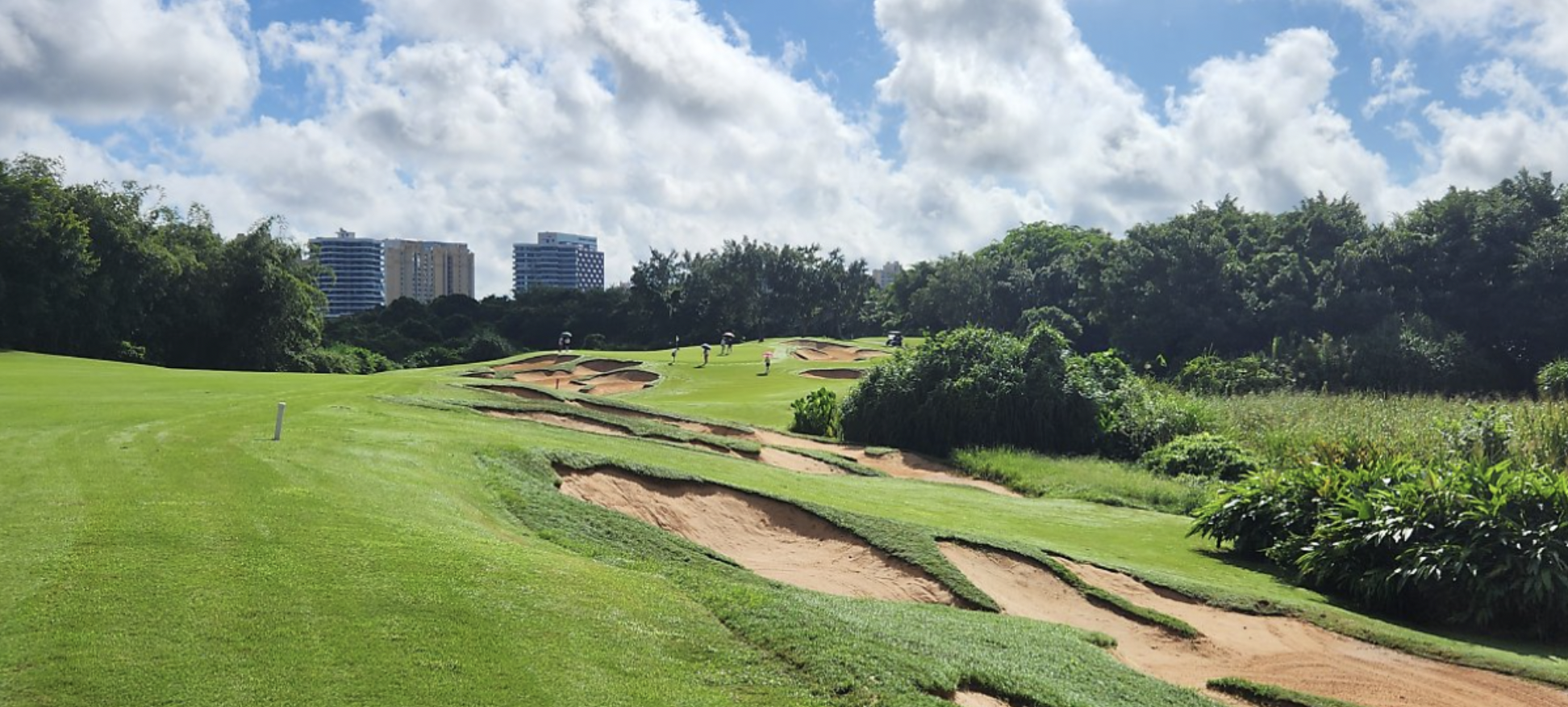
With the frightening number of bunkers at Blackstone, I only managed to get into two of them. I even managed to get up and down on one of them.
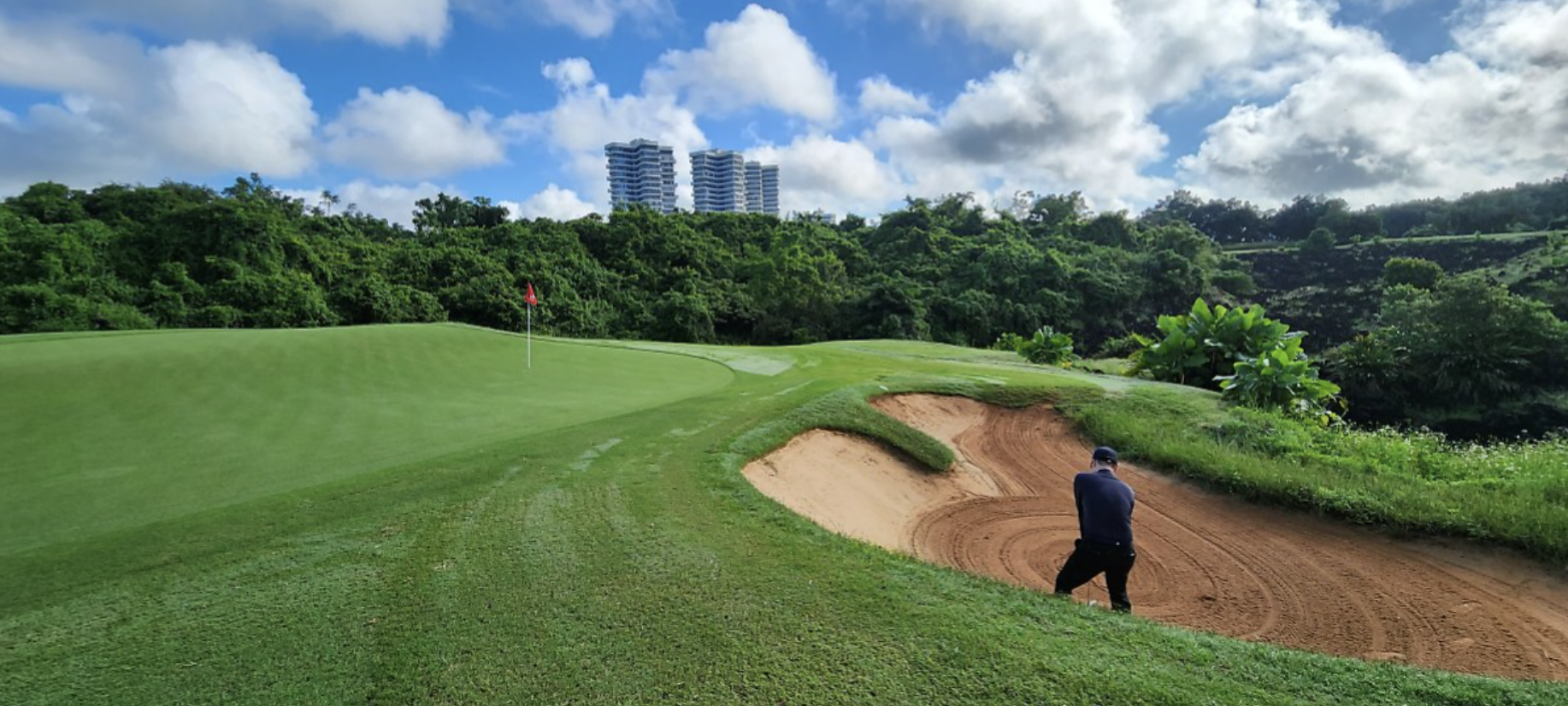
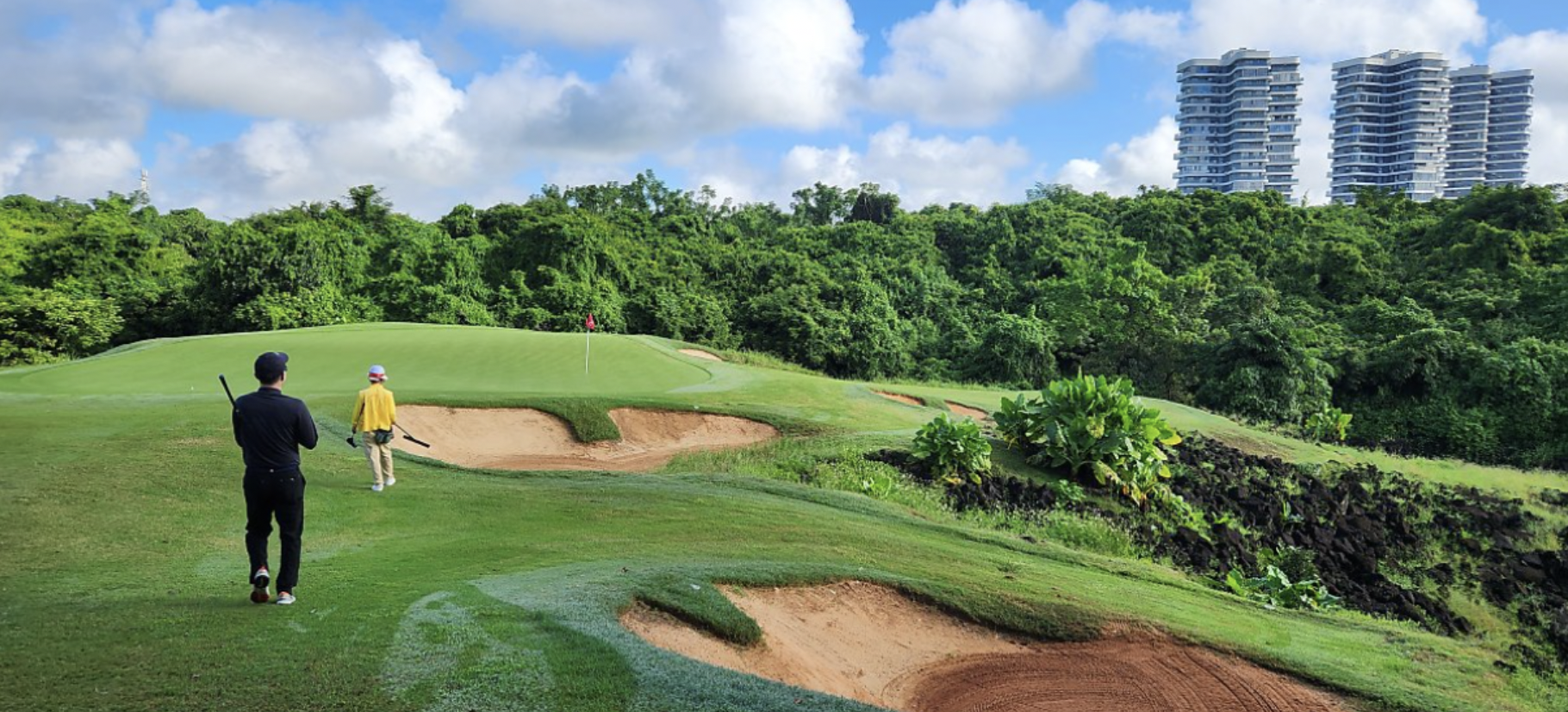
Bunkers and blackstones aplenty.
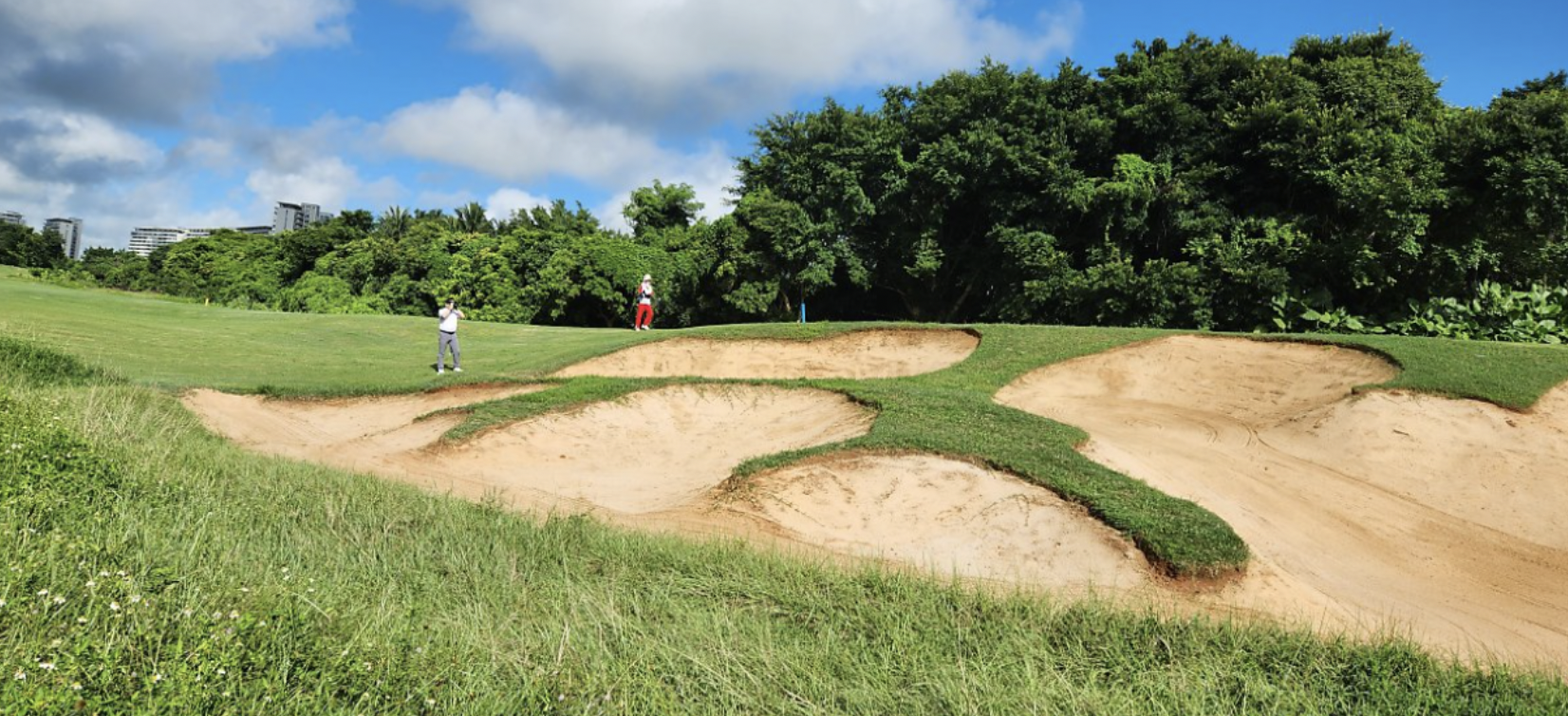
Despite being only the second time in a bunker, this one on the 18th cost me a devastating double bogey.
Tee To Green
Blackstone’s monstrous 7808 yards should satisfy most golfers’ urge to go all out on their shots. From the blues, it was still a challenging 6722 yards, and I don’t mind saying it felt longer than that all day.
Most of the pins can be seen from the tee box, and despite some slightly rolling fairways, Blackstone is a mostly-level parkland course without any significant drop or rise in elevation. Sprawling over a huge area of land, the holes do not double back in parallel but stretch forward through dense foliage, making for a scenic ride in the golf cart. One thing I also appreciated was the leisurely pace of play. The group ahead and behind were not visible for nearly the entire round, despite our less-than-quick pace of play.
From tee to green in its entirety, the course was in amazing shape and condition. The unexpected tropical golf experience was nothing short of amazing, and if I had to make a comparison to some of the other memorable tracks I’ve visited, the Hoakalei Country Club and Turtle Bay Resort (Palmer design) in Hawaii come to mind, along with Korea’s own Haesley Nine Bridge Club, which consistently ranks as one of the best courses in Asia.
The pictures below don’t do justice to the course, but I’m sure you’ll get the idea.
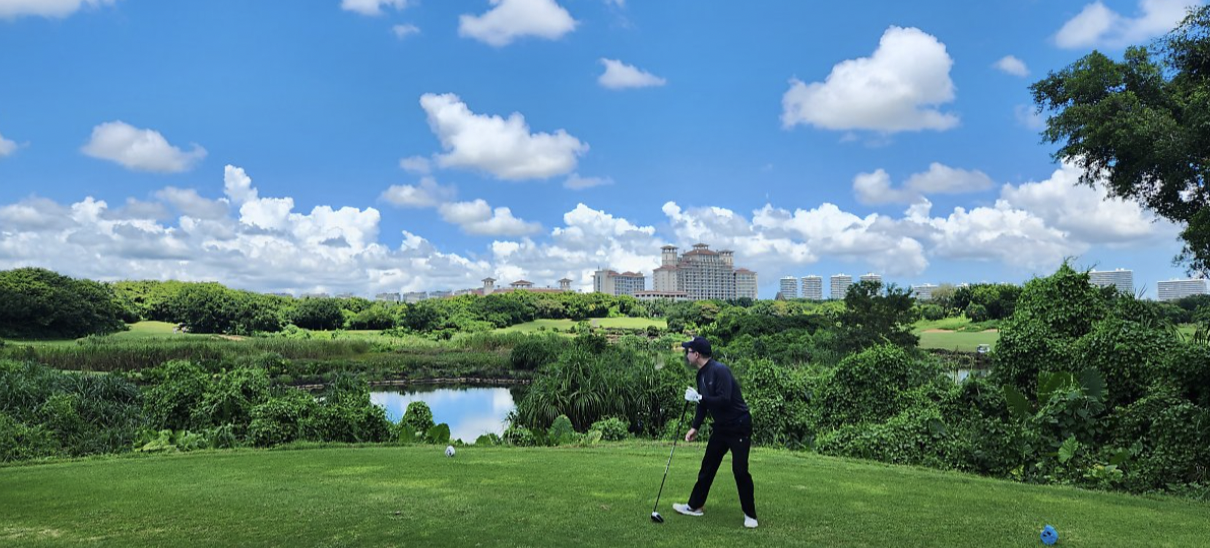
The sky was particularly blue and the course beautiful; so much so that my foursome didn’t seem to mind carding doubles and triples over and over again. What a joy.
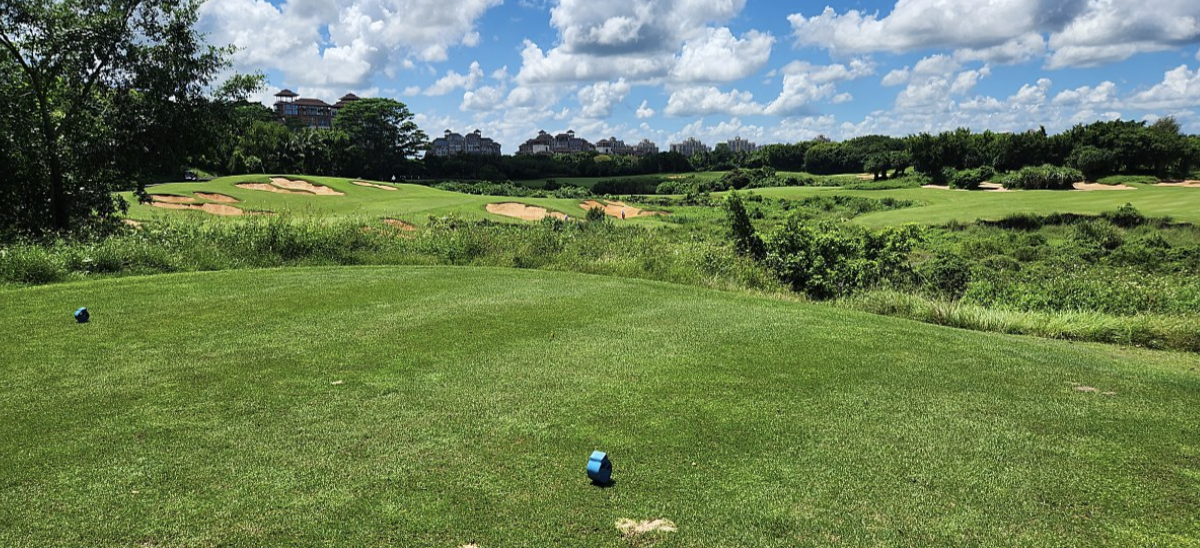
For us short-hitters, we had to aim for the middle of the many bunkers and hope for the best.
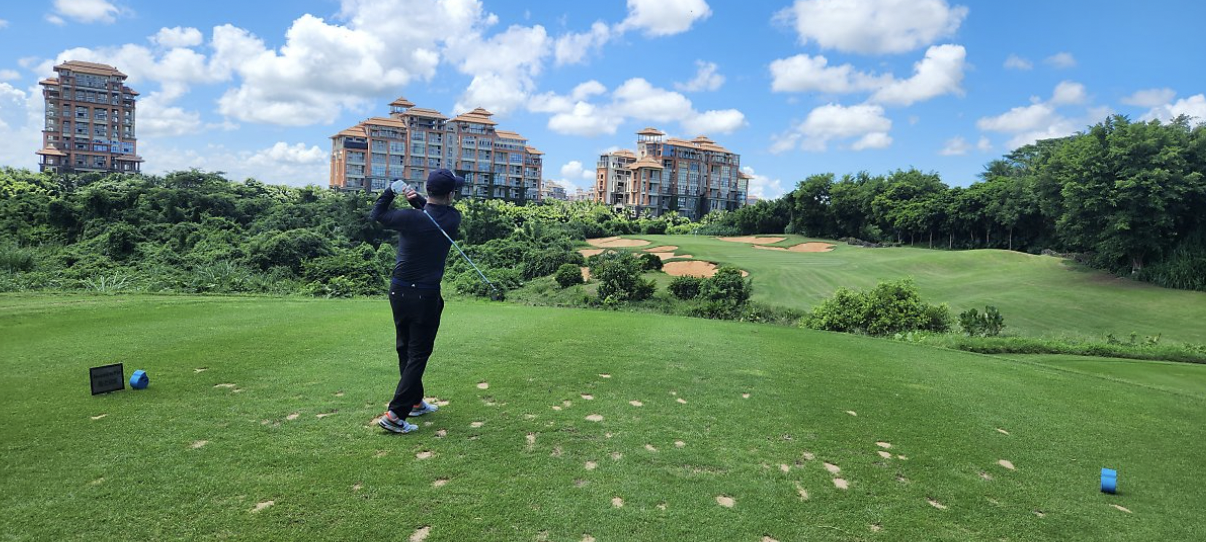
If I had a dollar for every time one of us wished we owned a penthouse in one of the many condos dotting the resort…
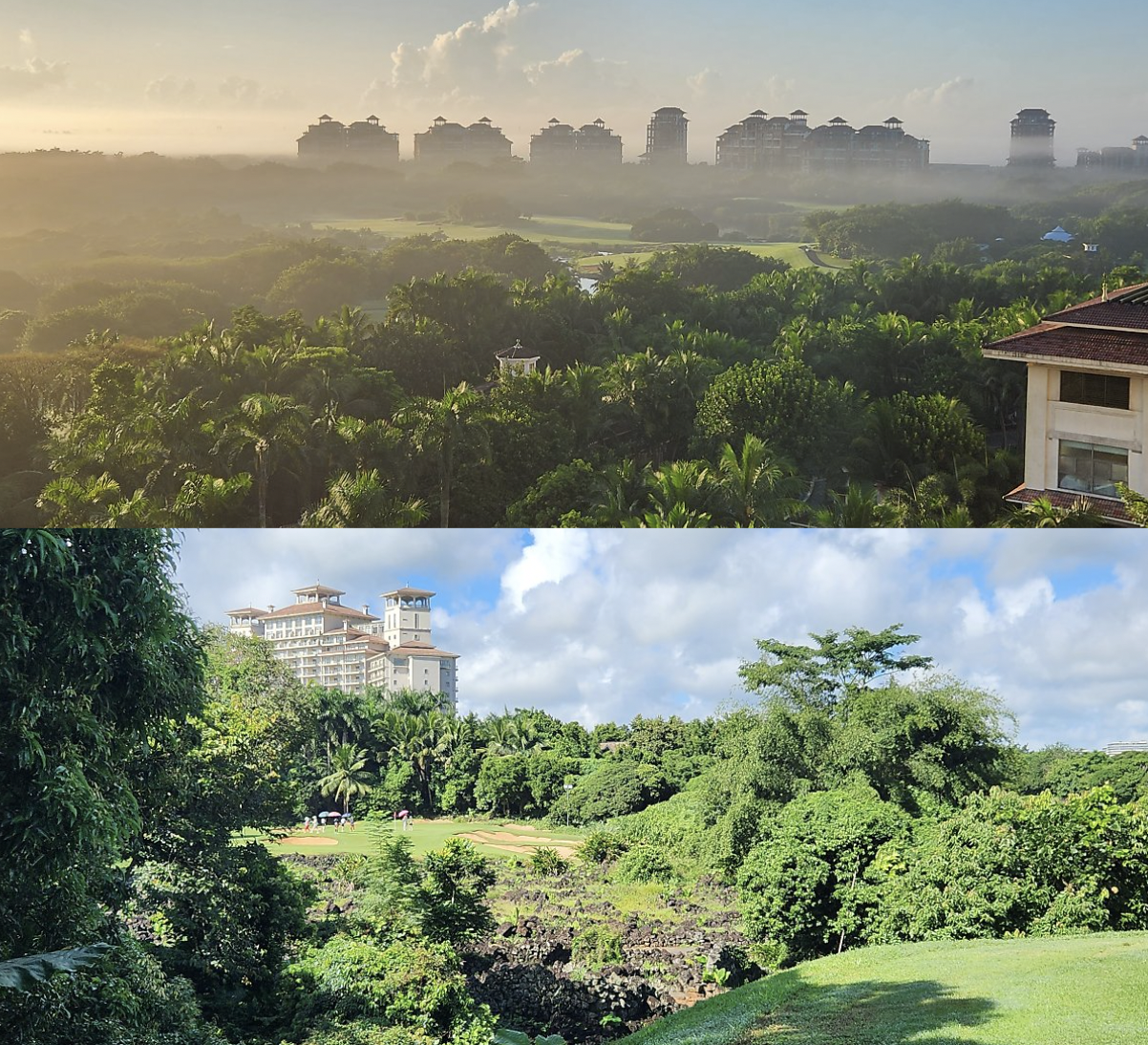
Many holes are carved right through a lush jungle with a huge modern condo looming in the background.
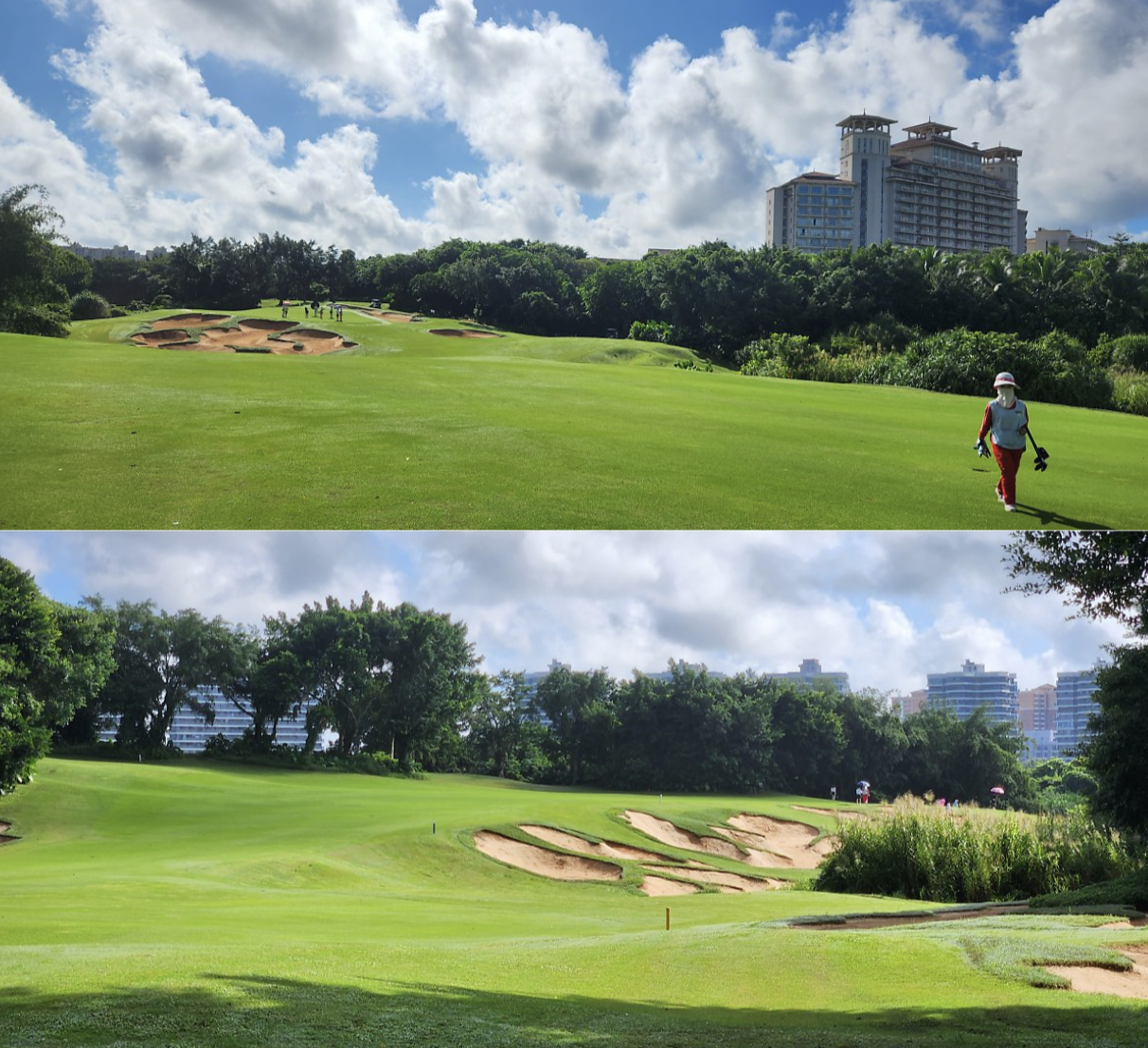
Cluster bunkers are to be avoided at all costs.
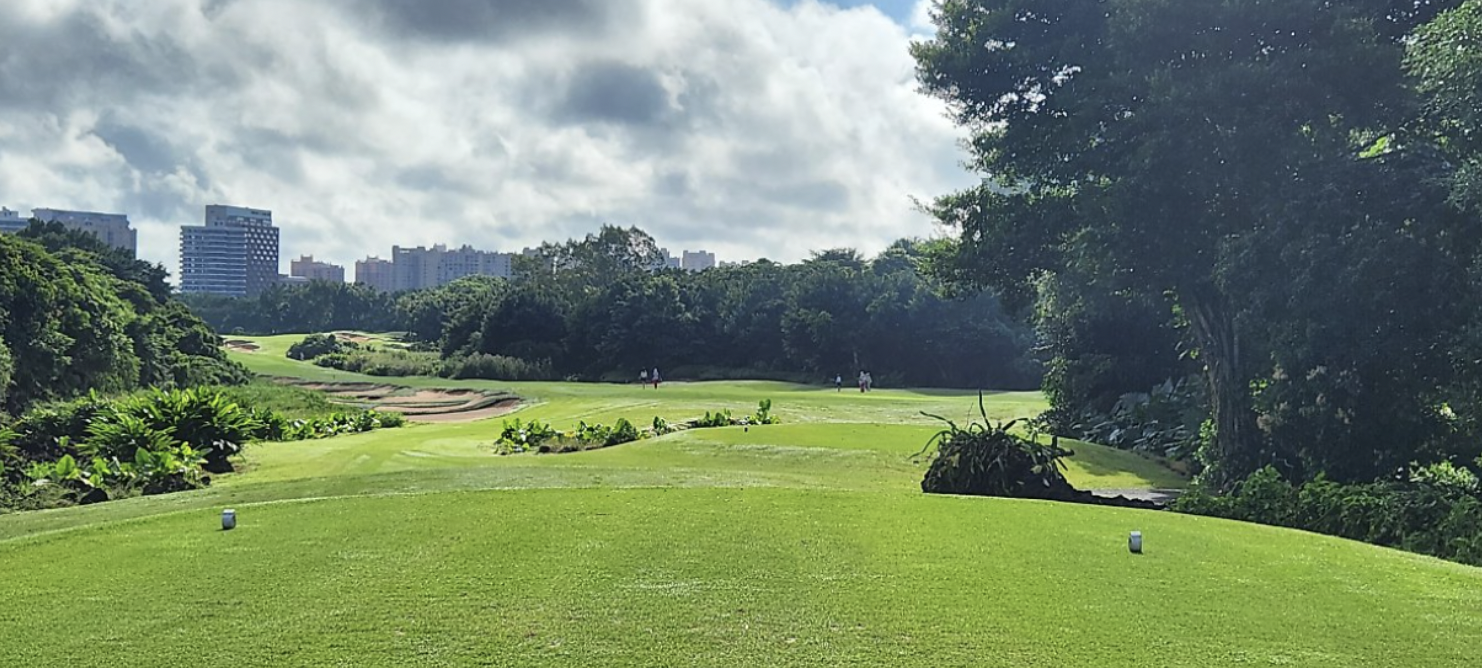
The view from the 1st hole tee at Blackstone.
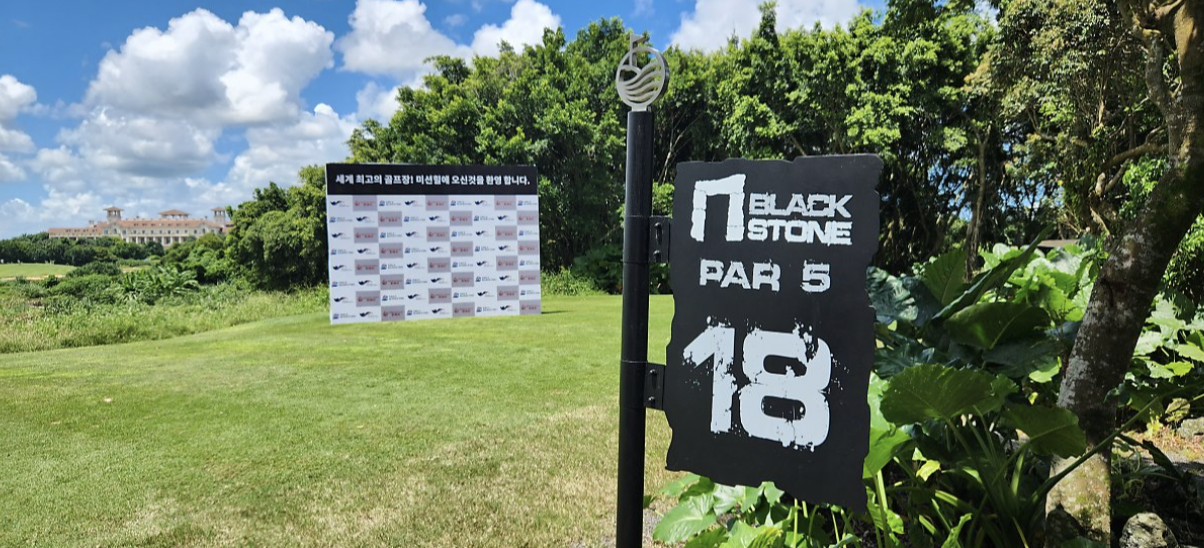
Looking like a pro in front of the picture board at the 18th tee… then promptly topping a drive 100 yards out. At least I looked good on camera.
Caddies & Carts
Unlike most courses in the West, golf clubs in Asia require each golfer to play with a mandatory caddie and golf cart. Also, if you each decide to have an additional caddie to help hold the umbrella, it can make for a sizeable group of 12 (greens keepers would be tossing in their beds in the west)! So how do the caddies move if you’re driving a power cart, you ask? They simply hop onboard the back of the buggy.
On this day, we ‘only’ had four caddies to attend our play, and they were fantastic. Despite my initial concerns, the language barrier was not an issue as they were conversant in all the needed terminology in English and Korean. This was a pleasant surprise, as I was able to ask more about the course to help my play, and there was always Google Translate.
The caddie fee was 500 yuan each, which is about $70 US. They were highly professional and quick on their feet, and I could tell that the resort had gone to good lengths in training the caddies (said to be 2000 in number!) to make the golfing experience enjoyable for their international guests.

Each foursome of caddies had a ‘master caddie’ that led the other three and acted to translate longer dialogues as needed. They had a good knowledge of the course and general breaks on greens. But don’t expect them to be like the actual caddies like for the pros. They are mostly for offering simple advice on reading greens, cleaning and handing over your clubs, and helping you to find your balls.
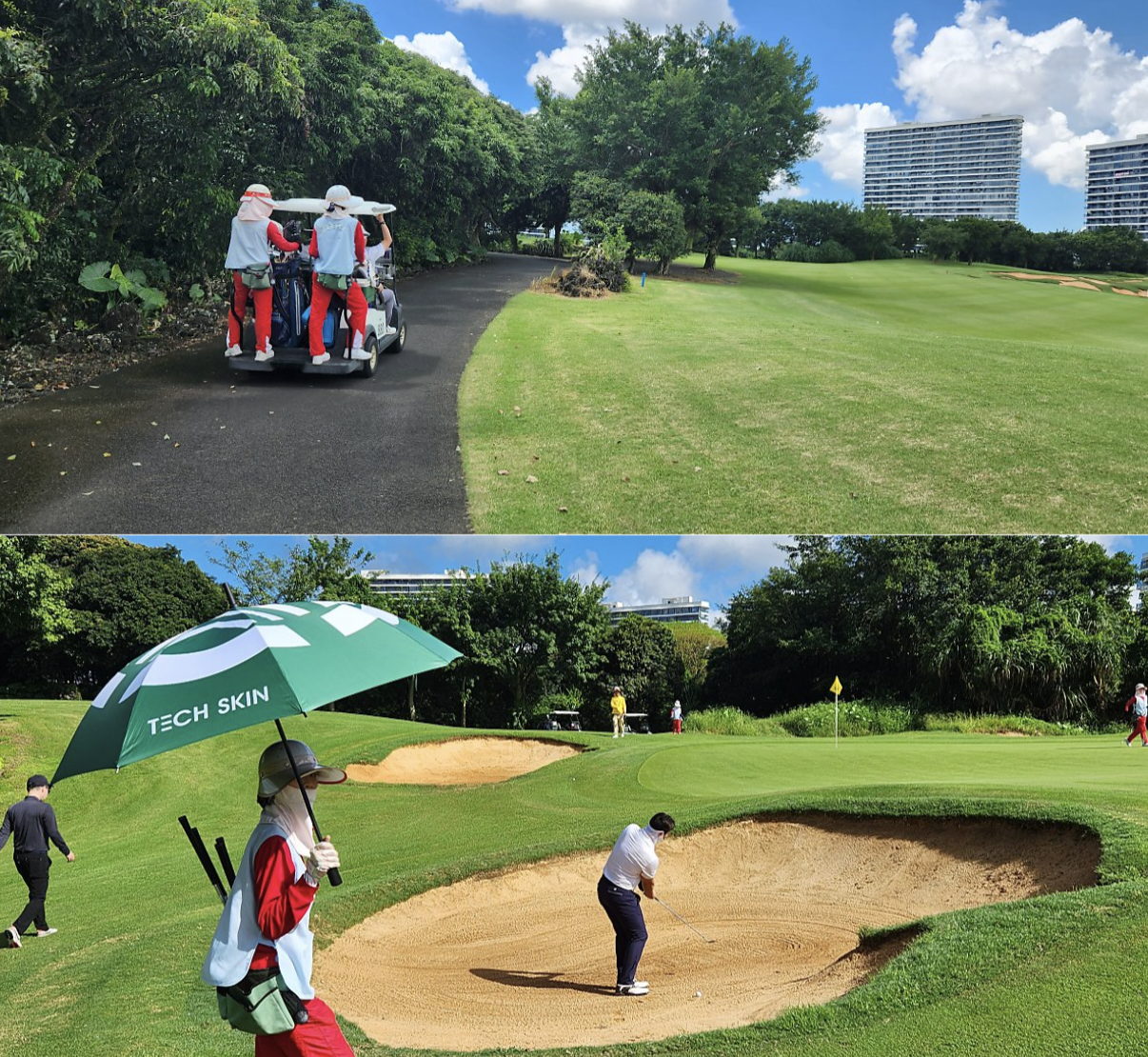
Not gonna lie… having a personal caddie wait on your every shot was nerve-wracking at first.
Resort & Facilities
Mission Hills Haikou has a 500-room hotel with several fine-dining restaurants and high-end boutiques within the main wing and the adjoining annex. They also have a shopping mall within the hotel featuring global brands like Taylormade, Adidas, and Skechers, along with a slew of high-end golf brands to luxury watches and whiskies.
The view from my room on the 9th floor was something to write home about, along with the impeccable services. Truth to tell, I had previously heard several horror stories of less-than-friendly services which led me to refrain from visiting China prior. That must’ve been a different country, as Mission Hills pulled out all the stops to impress and awe its visitors, and it certainly worked on me. We were treated like kings on and off the course, and the hotel personnel was on hand to assist us everywhere we went.
The entire resort complex was like a huge labyrinth of spas, pools, shops, and golf courses. They nearly had everything, including an incredible hotel buffet and several ethnic cuisines, a nightclub and karaoke, and an entire museum-like wing dedicated to the many celebrities and pro golfers that have played here. I could have stayed for hours simply looking at their vast collection of golf memorabilia. My golf buddy called it a golf heaven on earth, and I couldn’t agree more.
Again, the pics won’t be able to fully capture the experience, but they’ll give you an idea of the enormous size and quality of the place.
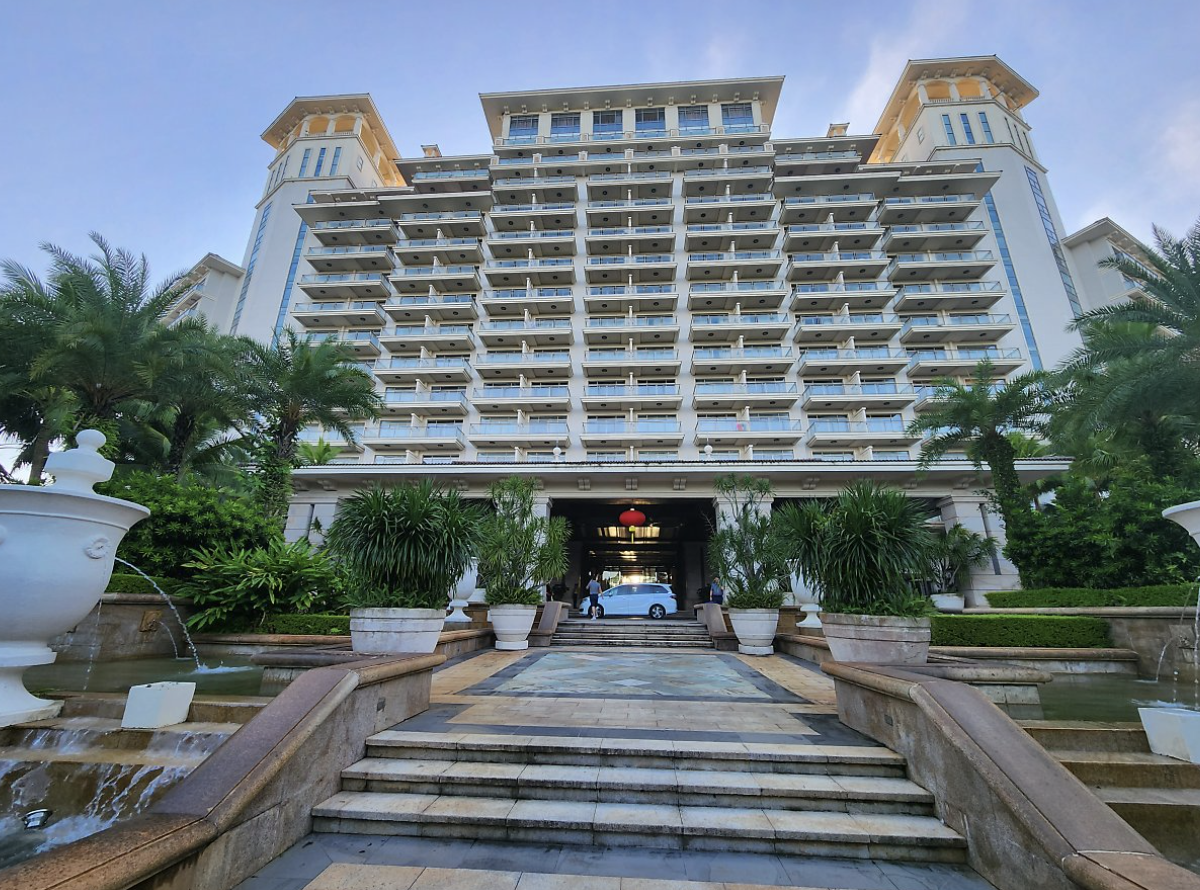
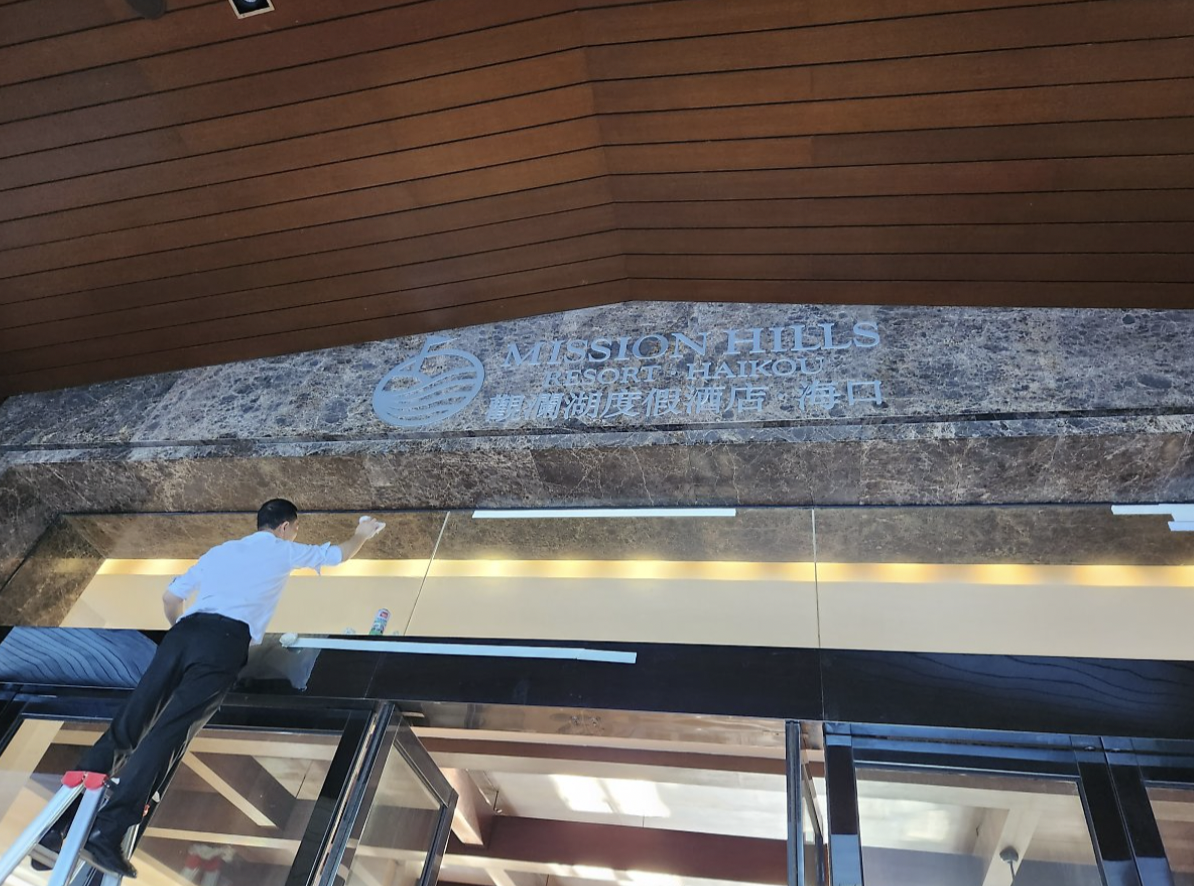
Spic and span to receive guests after a long hiatus during COVID-19, I bet.
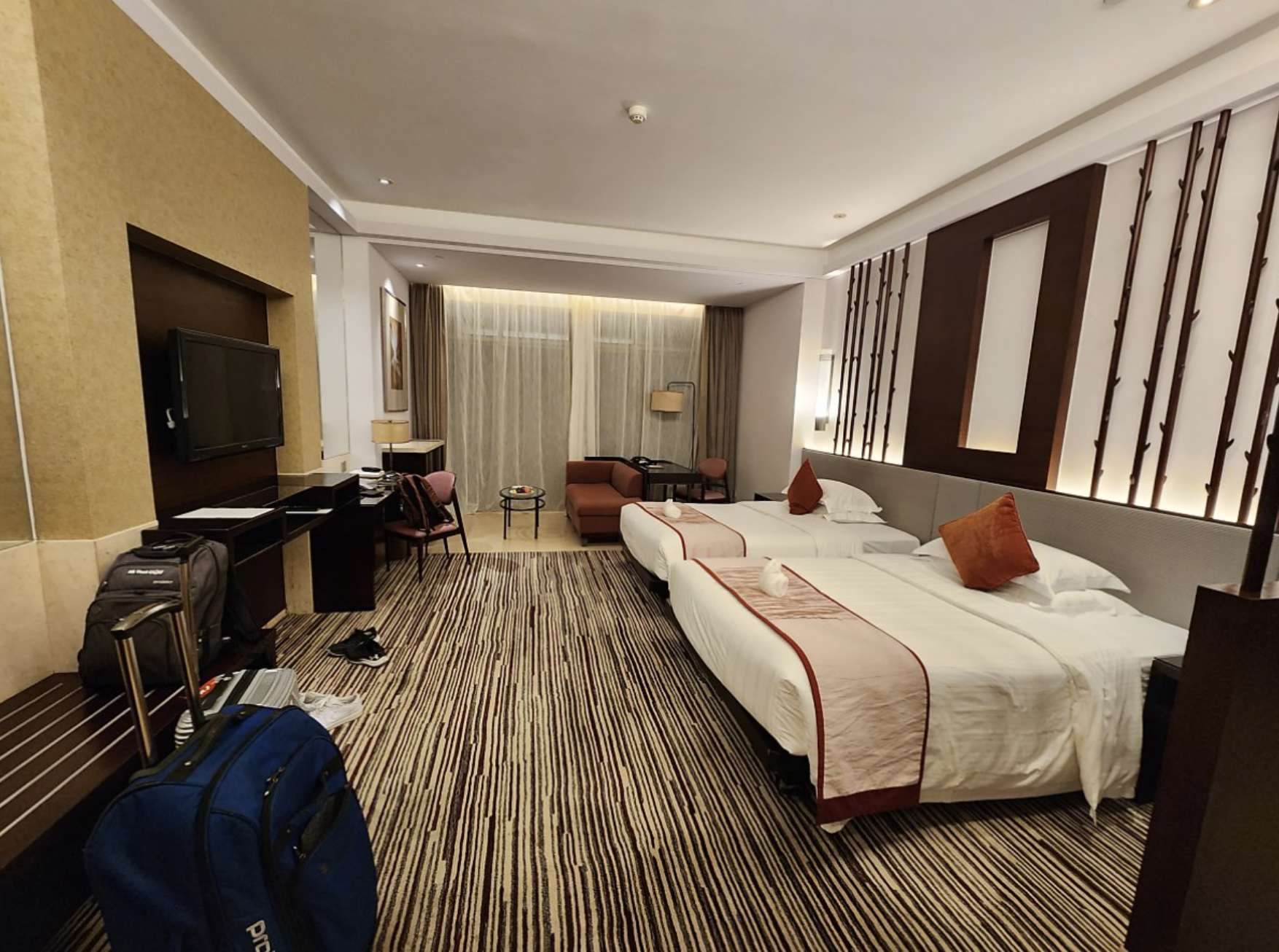
I stayed in a nice-sized suite on the 9th floor with a good view overlooking the resort and course.
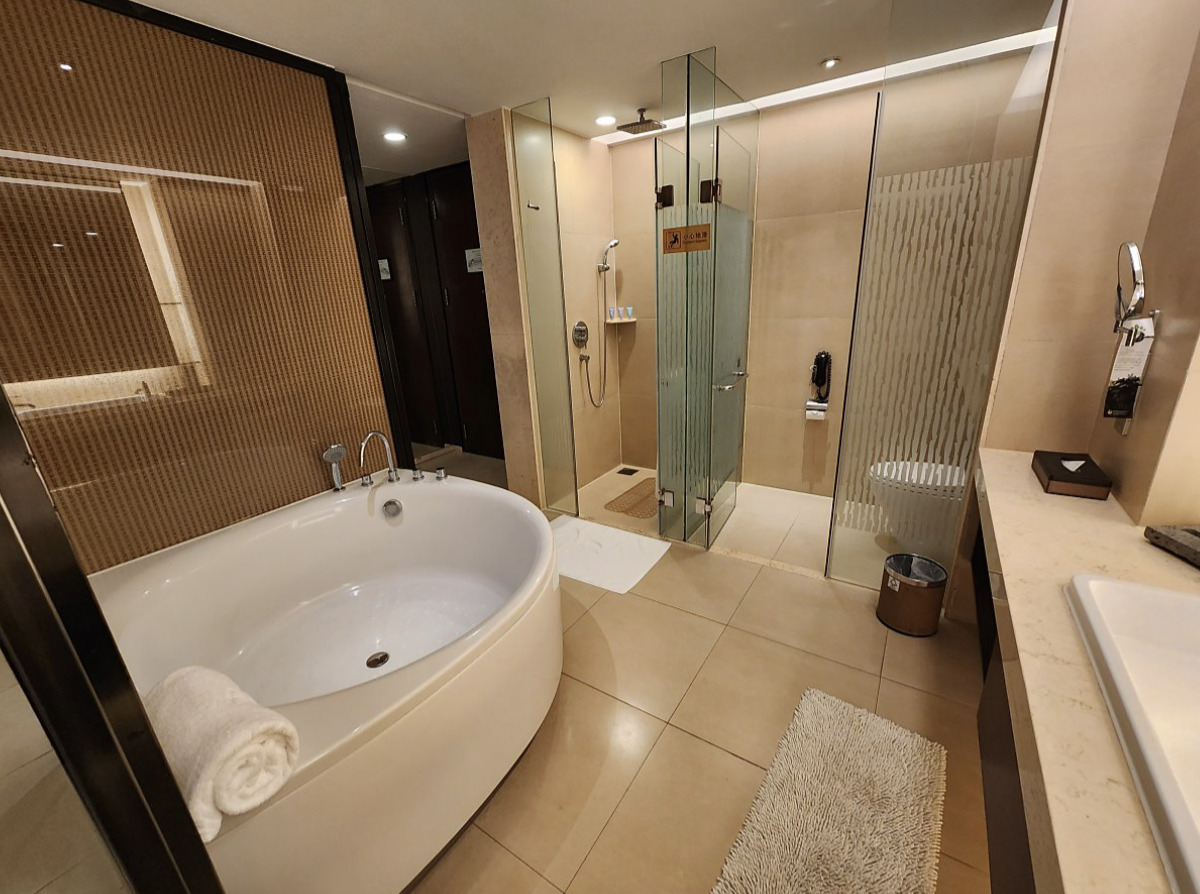
The tub is actually quite big and probably could fit three of me in it comfy.
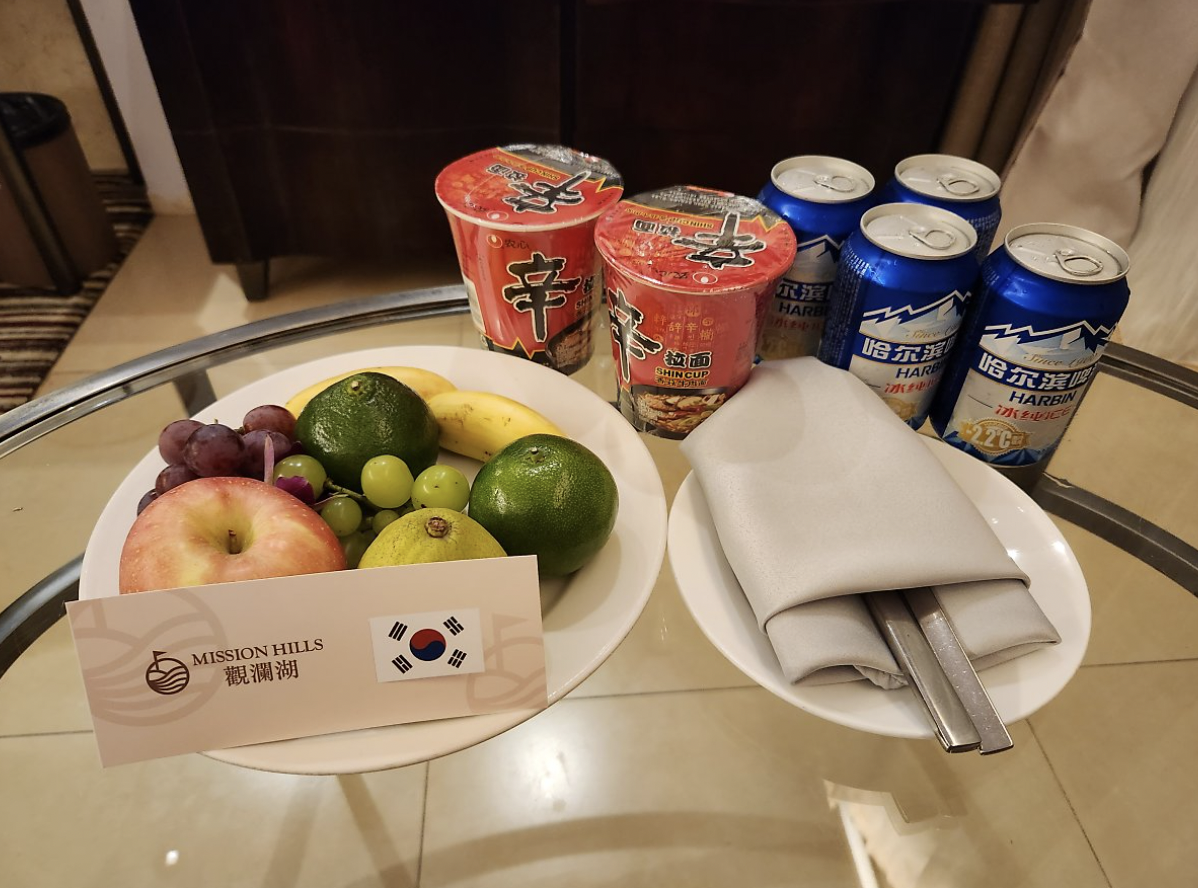
The hotel service had complimentary ramen and beers, along with the local fruit.
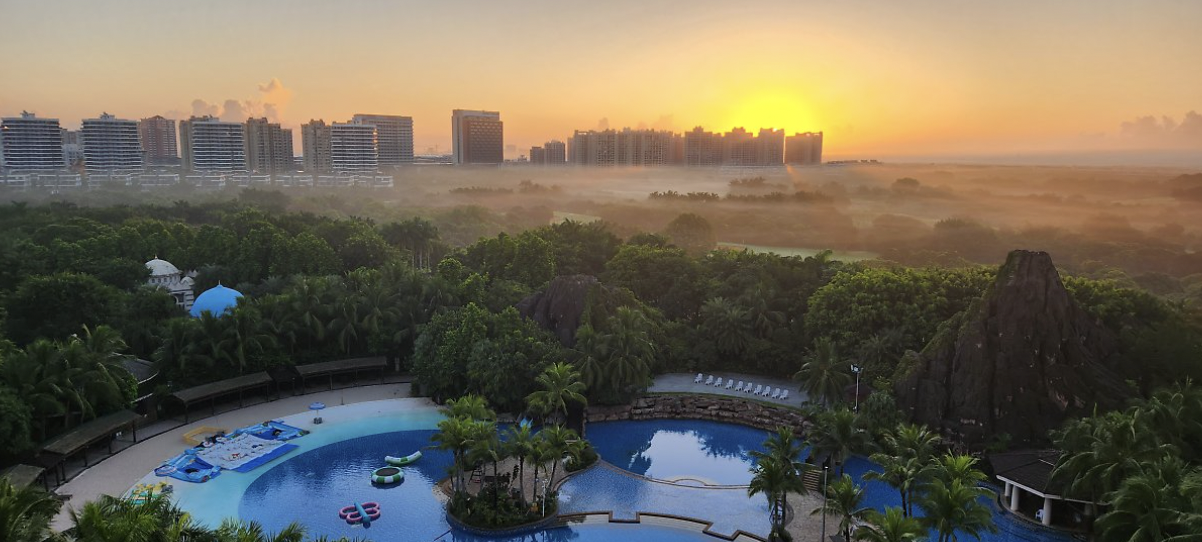
Early morning view out the window showed the course shrouded in ground fog.
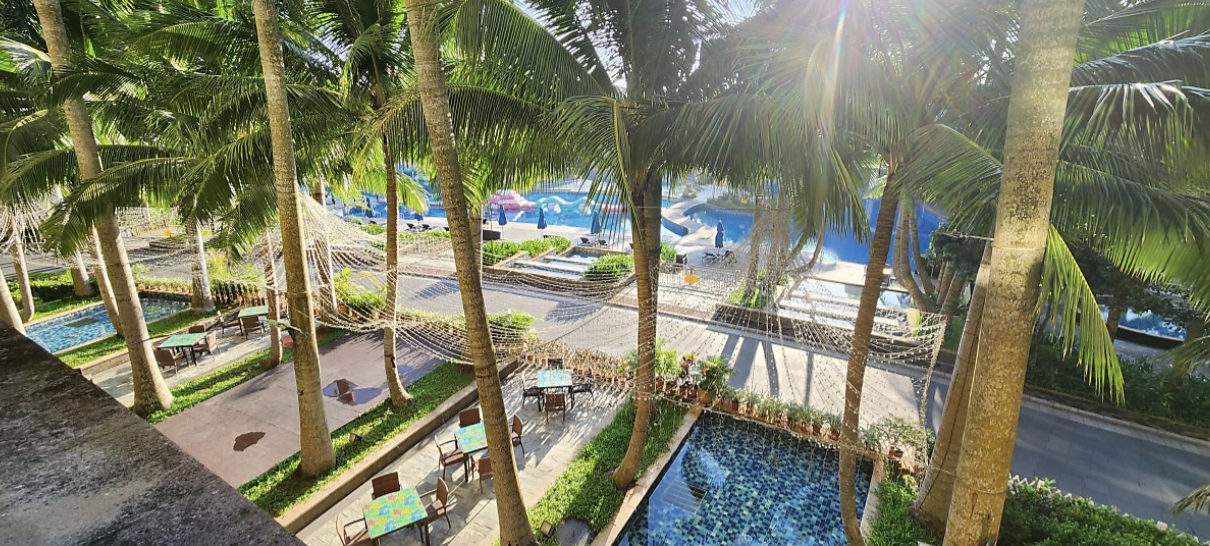
I wasn’t planning to do any swimming when I initially packed for the trip. Next time.
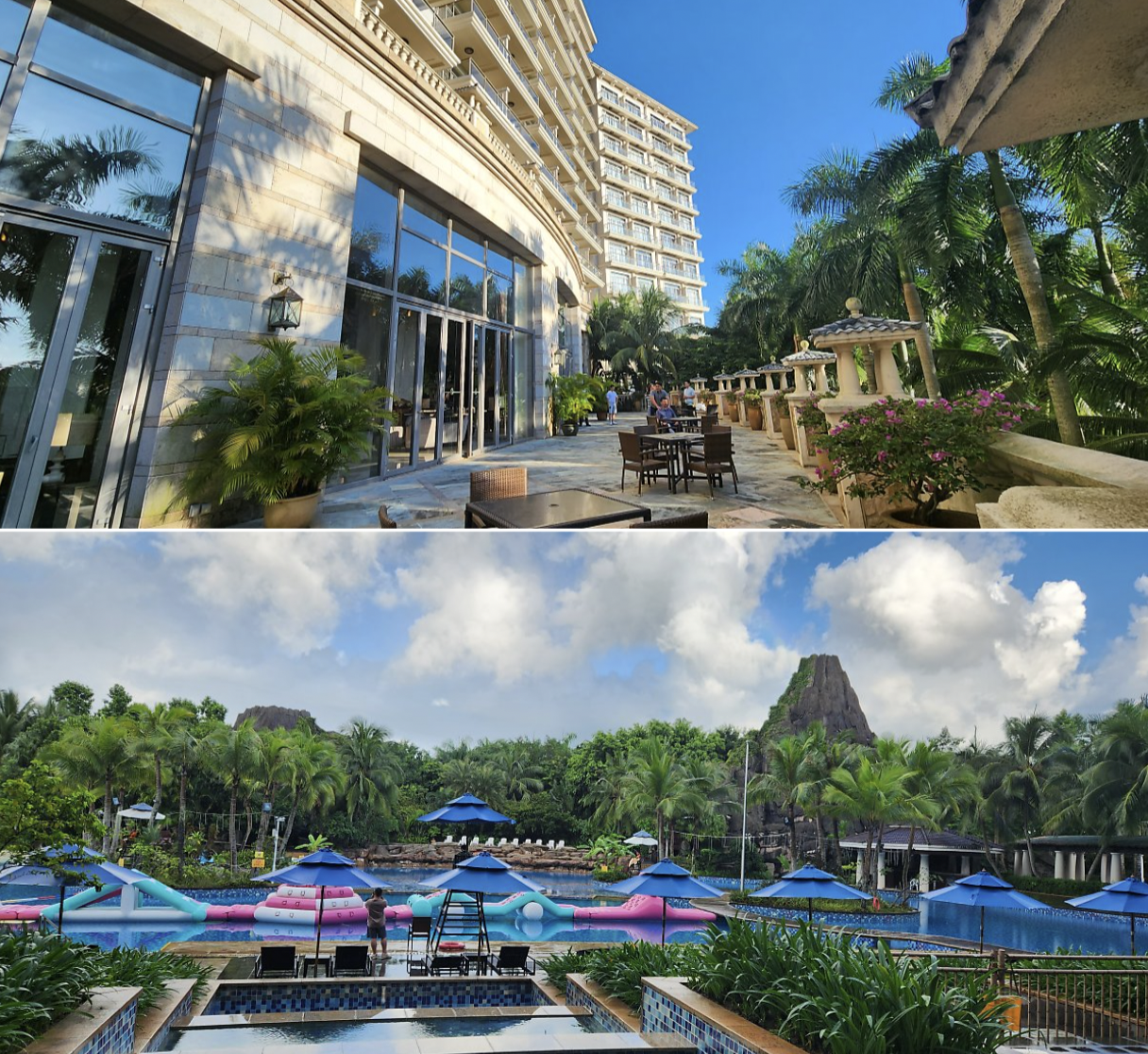
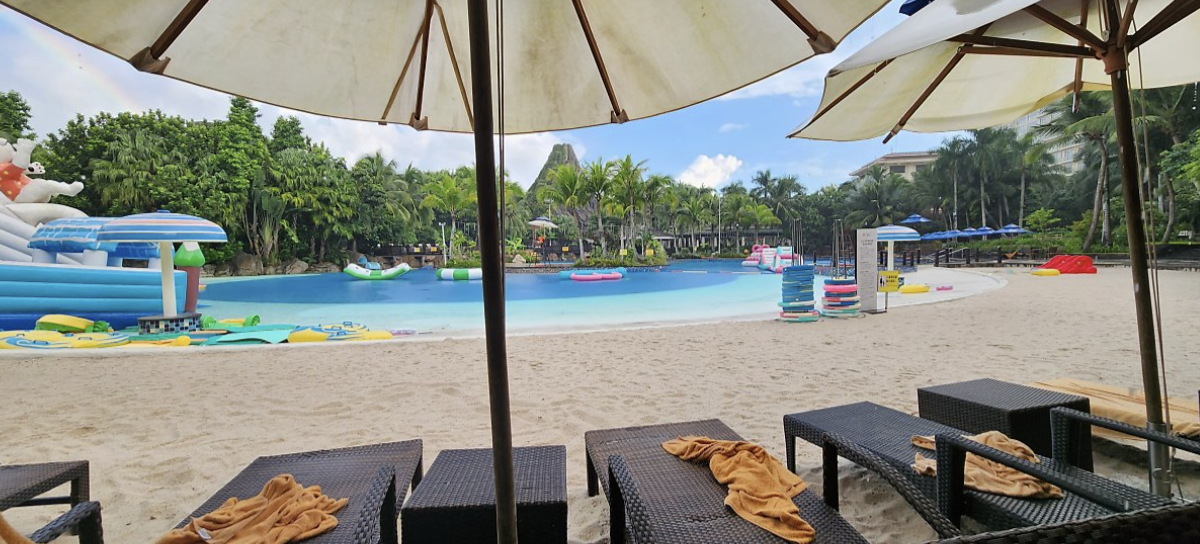
The pool behind the main hotel had sandy beaches!
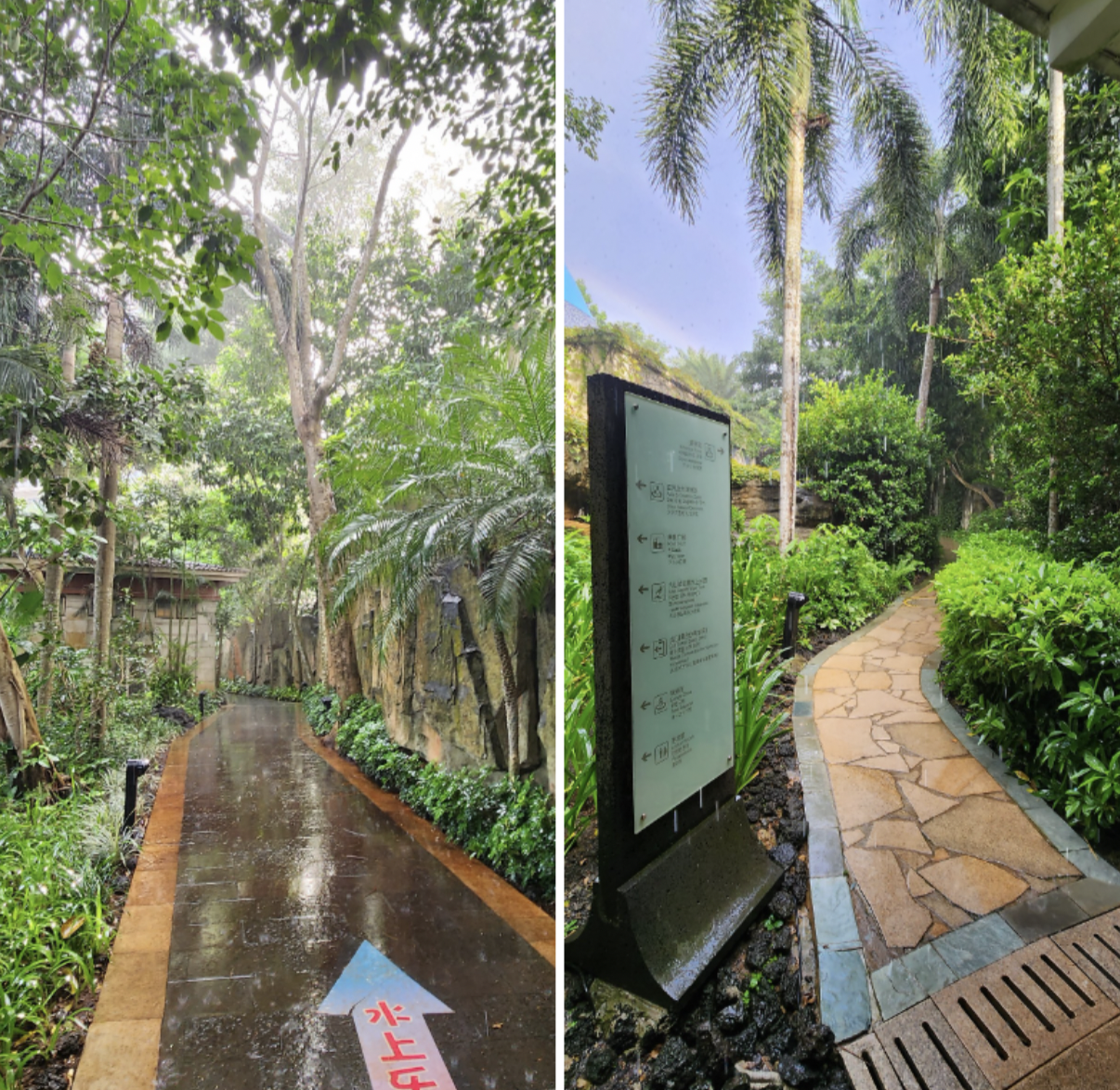
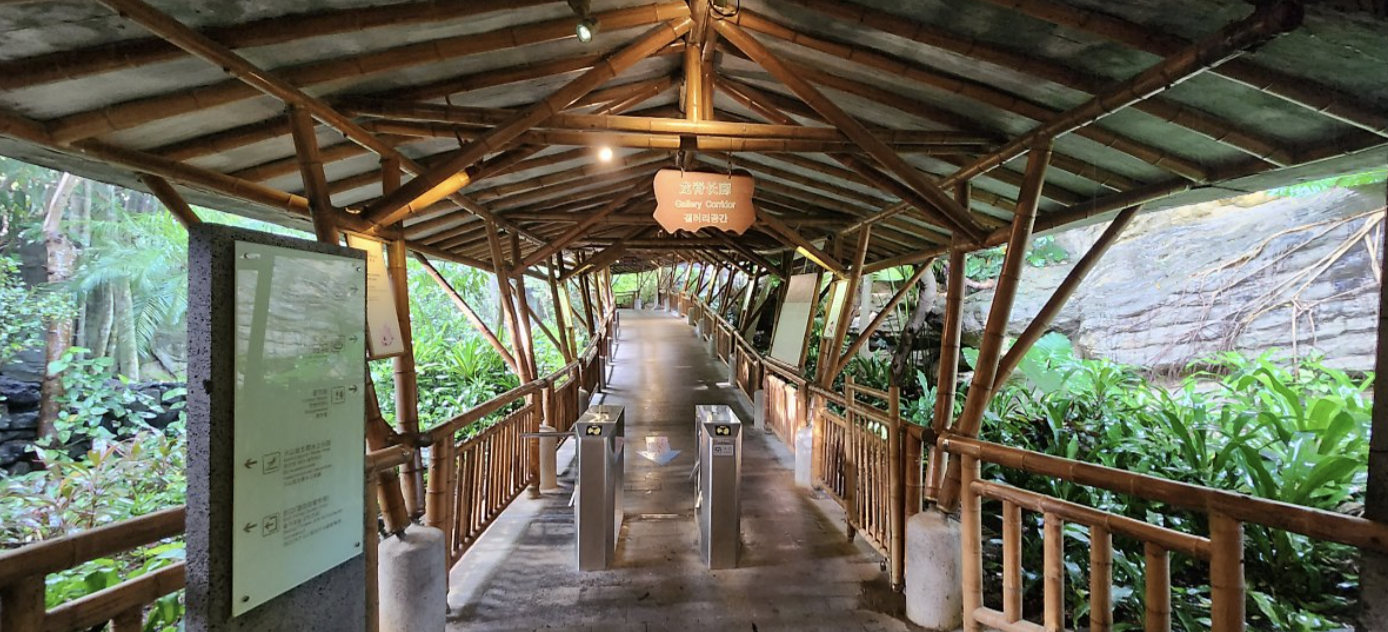
A huge maze of trails and covered walkways branching off to a vast number of pools, hot springs, and saunas.
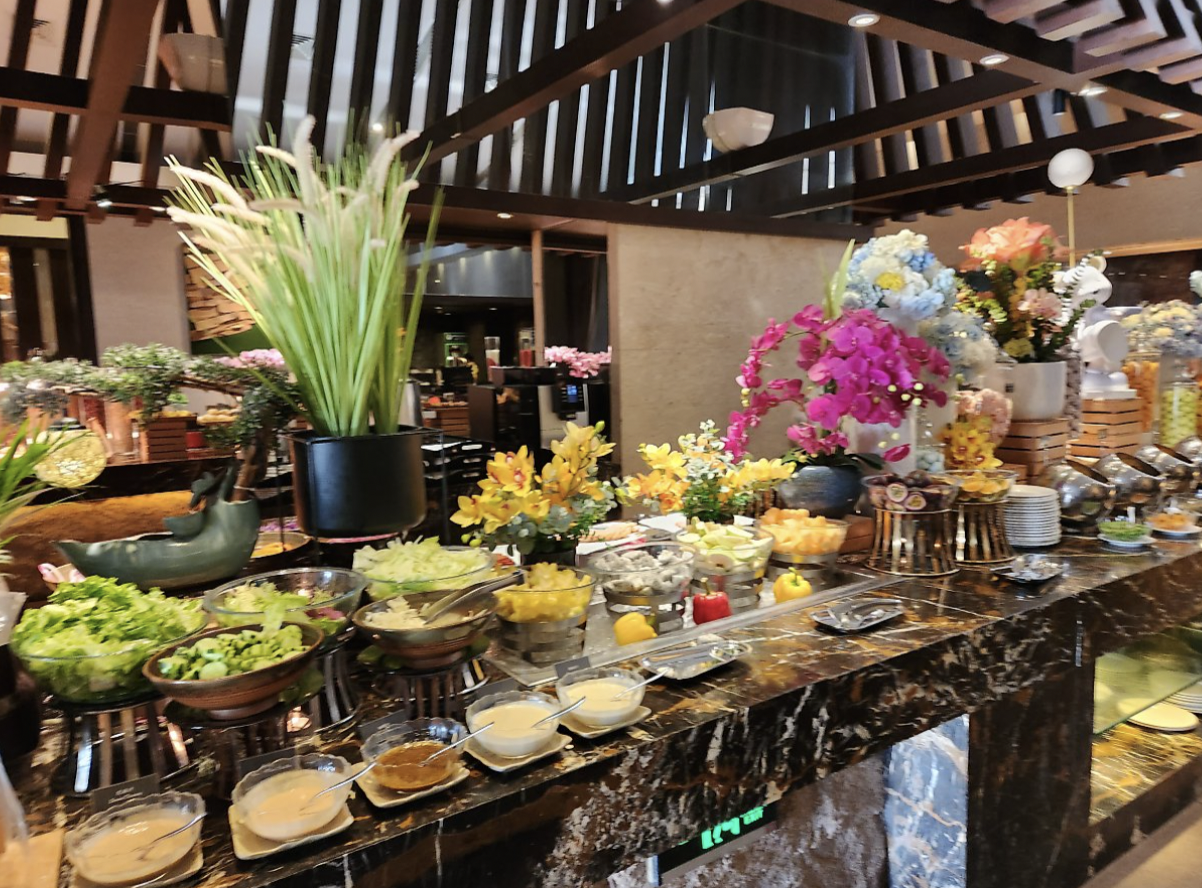
The morning buffet was one of the best I had in a while, with a full line up of both Asian and Western foods.
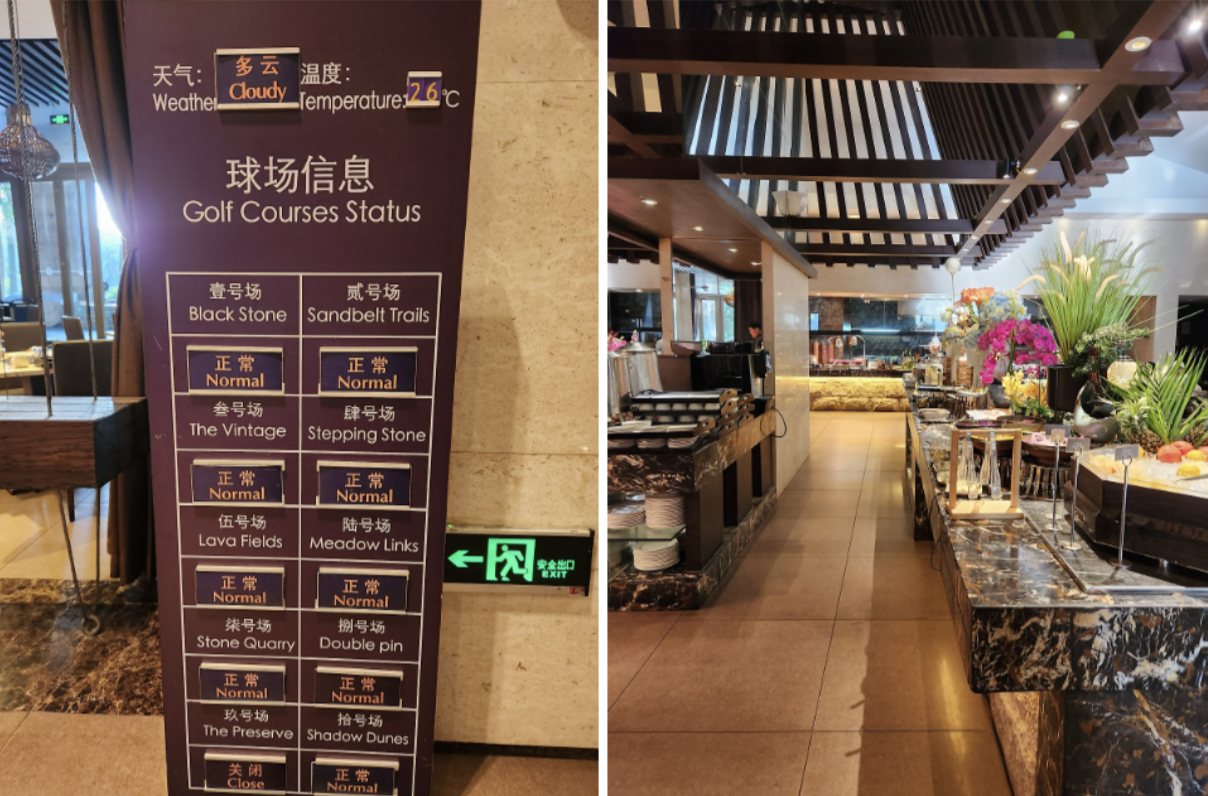
A sign at the entrance of the buffet showed the daily condition of the 10 golf courses.
Hotel Shops & Amenities
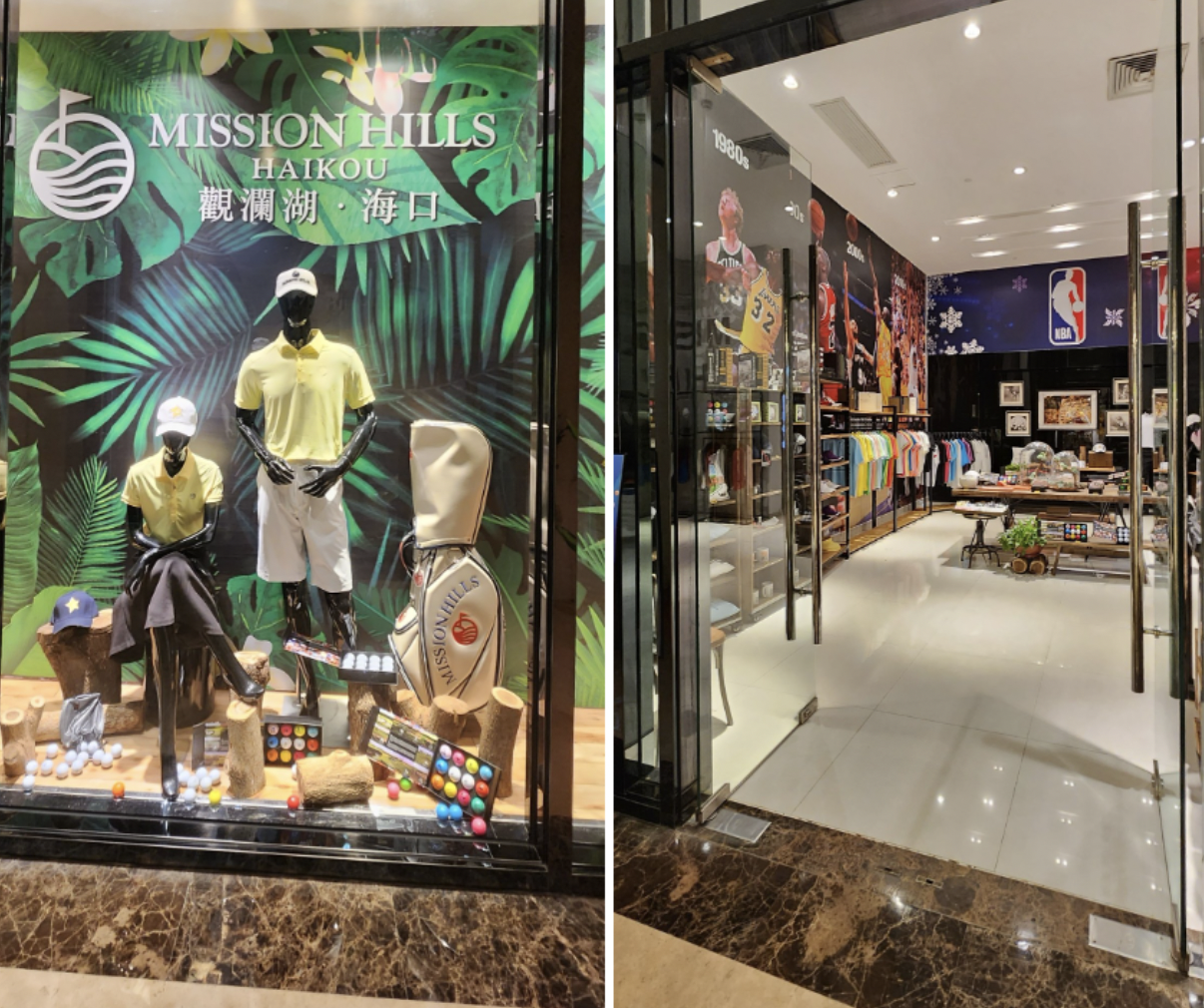
The shops inside the lobby were all high-end as well as ones I didn’t think to expect like the NBA-themed shop, Hennessy whiskey and Tabasco hot sauce shops!
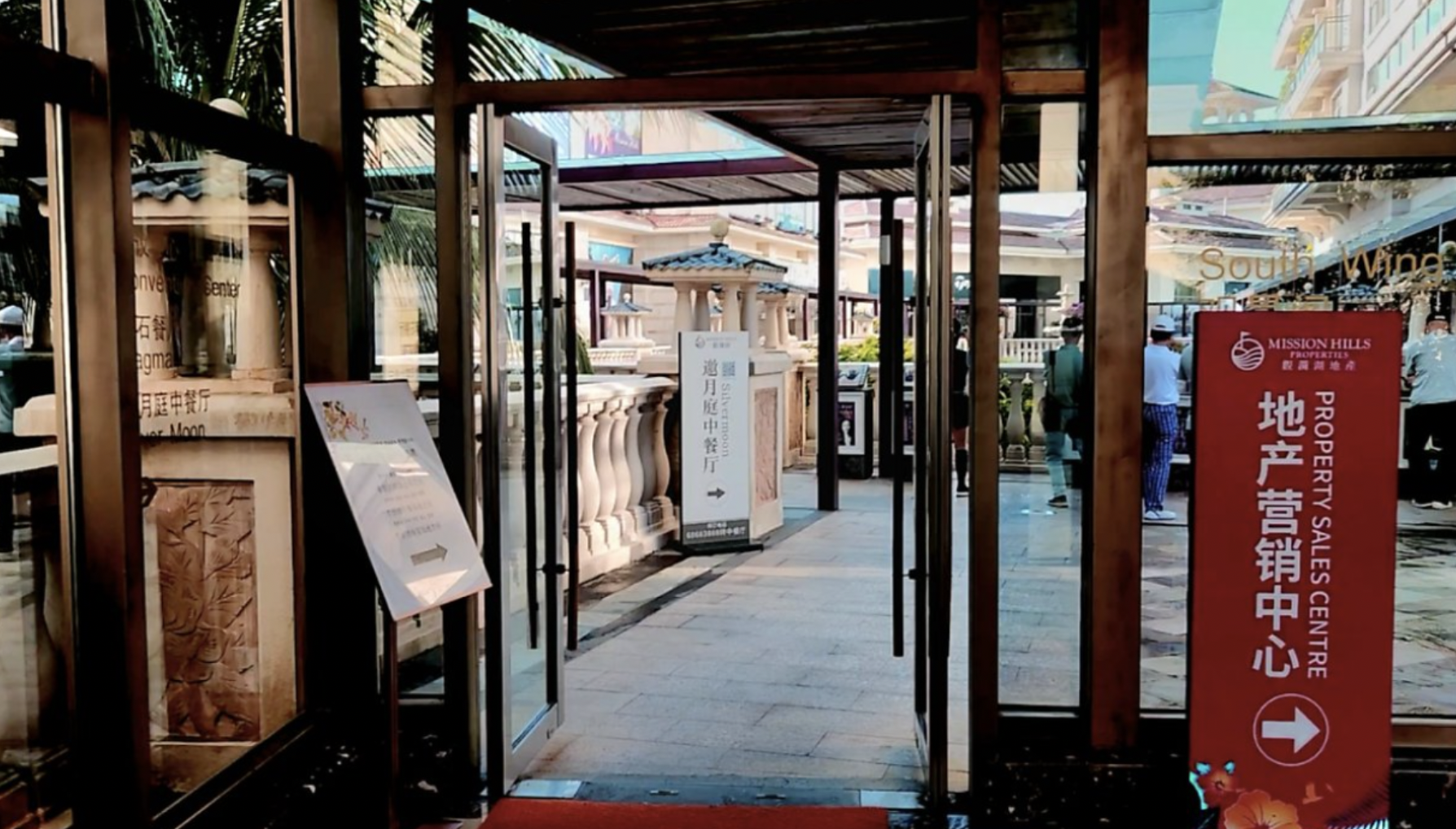
Then there were dozens more shops in a whole other building next to the hotel, lined with the palm prints of celebrities and stars. The sheer size and scale of Mission Hills was outrageous.
Trip Overview
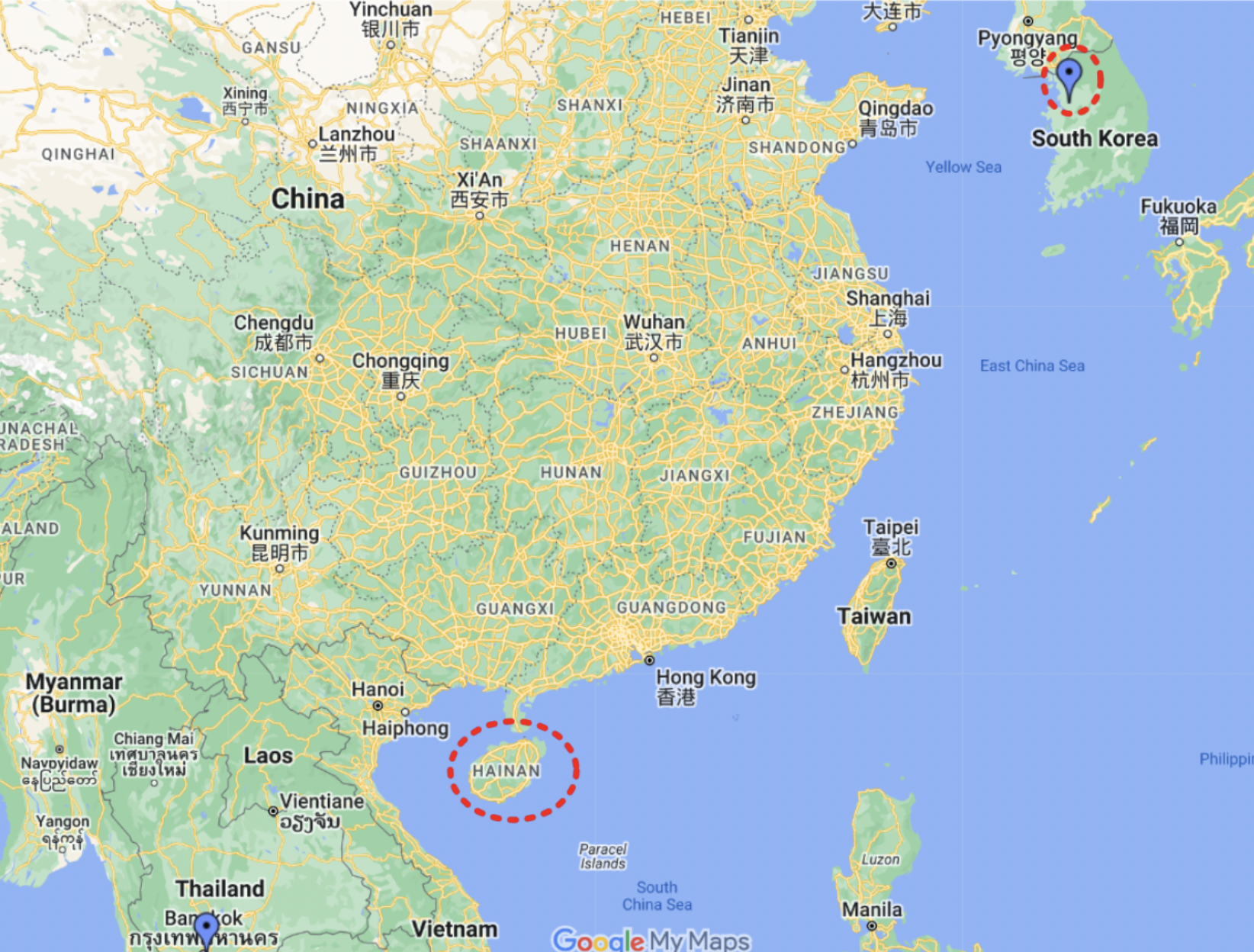
Hainan is a tropical Island in the South China Sea and can get quite hot and humid during the summer monsoon season. By plane, it took 4.5 hours from Korea to Hainan.

Interestingly, Hainan Island is designated as a tourist zone by the Chinese government and does not require a visa prior to arrival. It is issued when you arrive at the airport and go through customs.
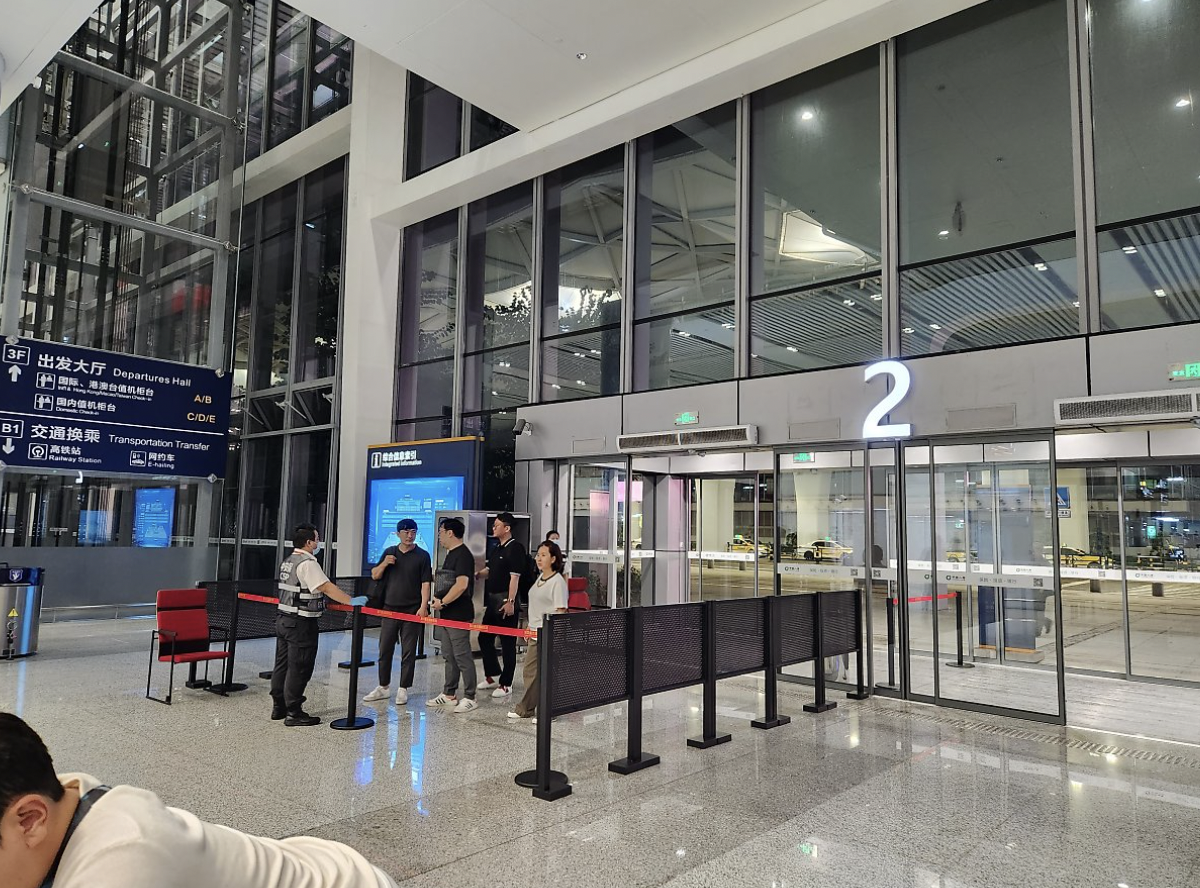
During the end of 2023 when the trip took place, COVID-19 restrictions were largely over and there were the simplest of checks (1-2 minutes) using a machine to detect any virus before entering and exiting the airport.
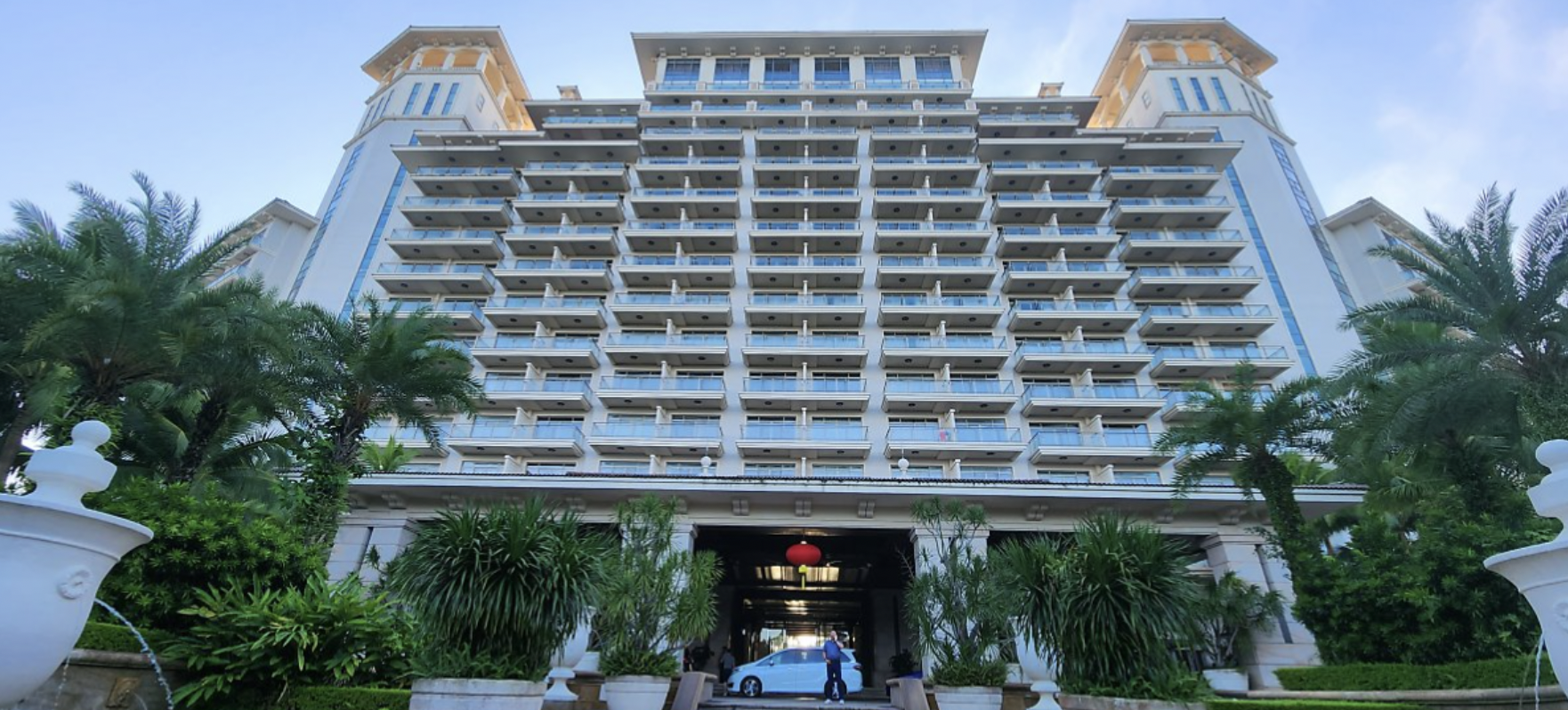
The resort itself was only about a 15-minute bus ride from the airport. For those who travel often to Asia, they’ll know that courses and resorts can be up to two hours from the airport.
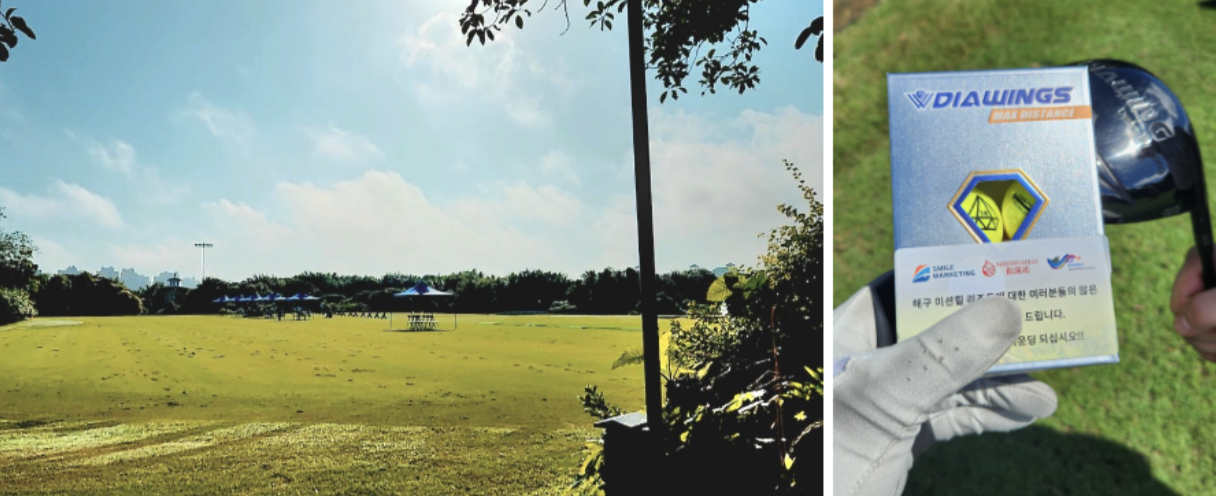
A brief warm-up on the range and armed with complimentary golf balls, we were off to the first tee.
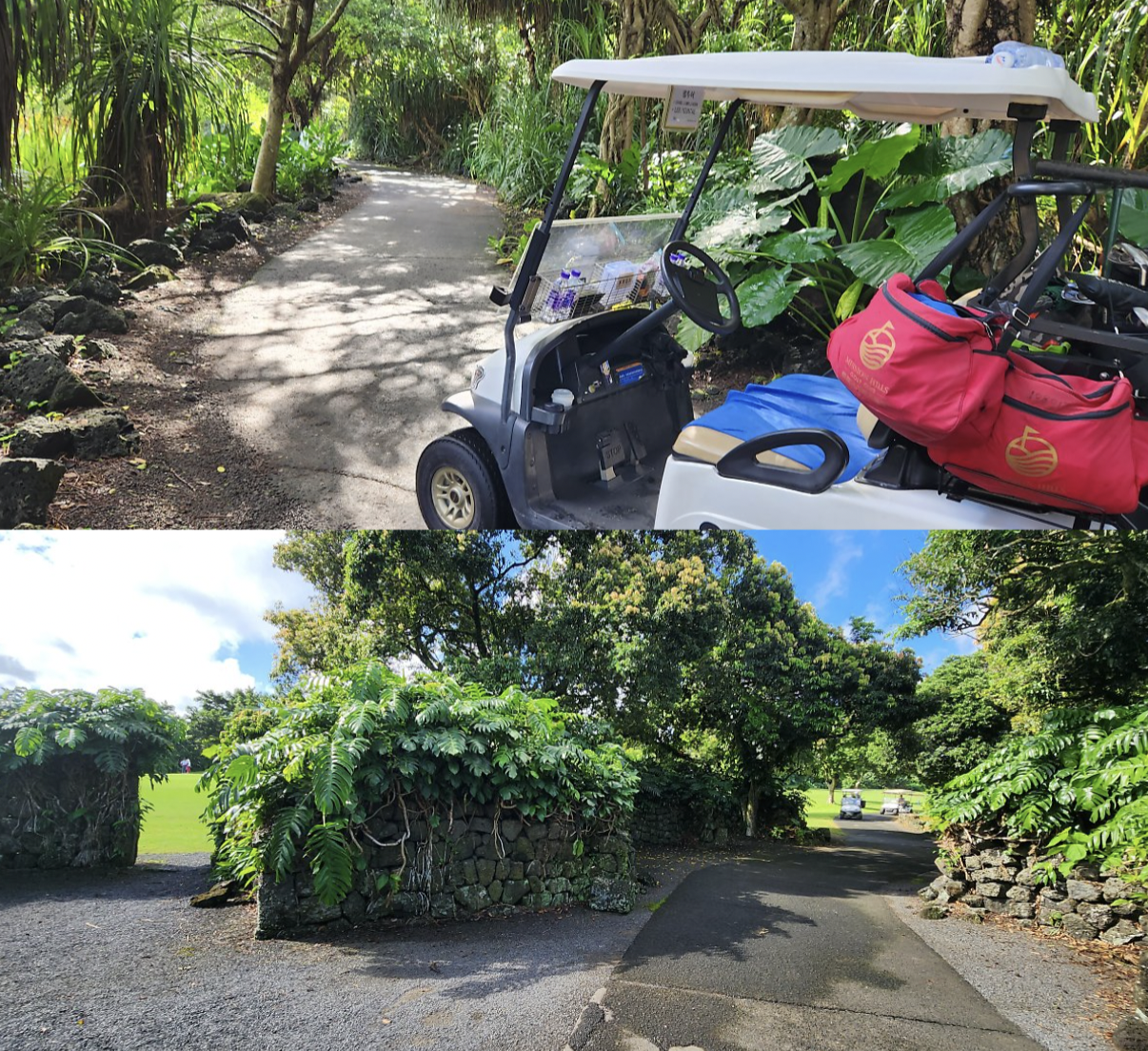
True to its name, the course had stone walls and fences made from the igneous black lava rock.
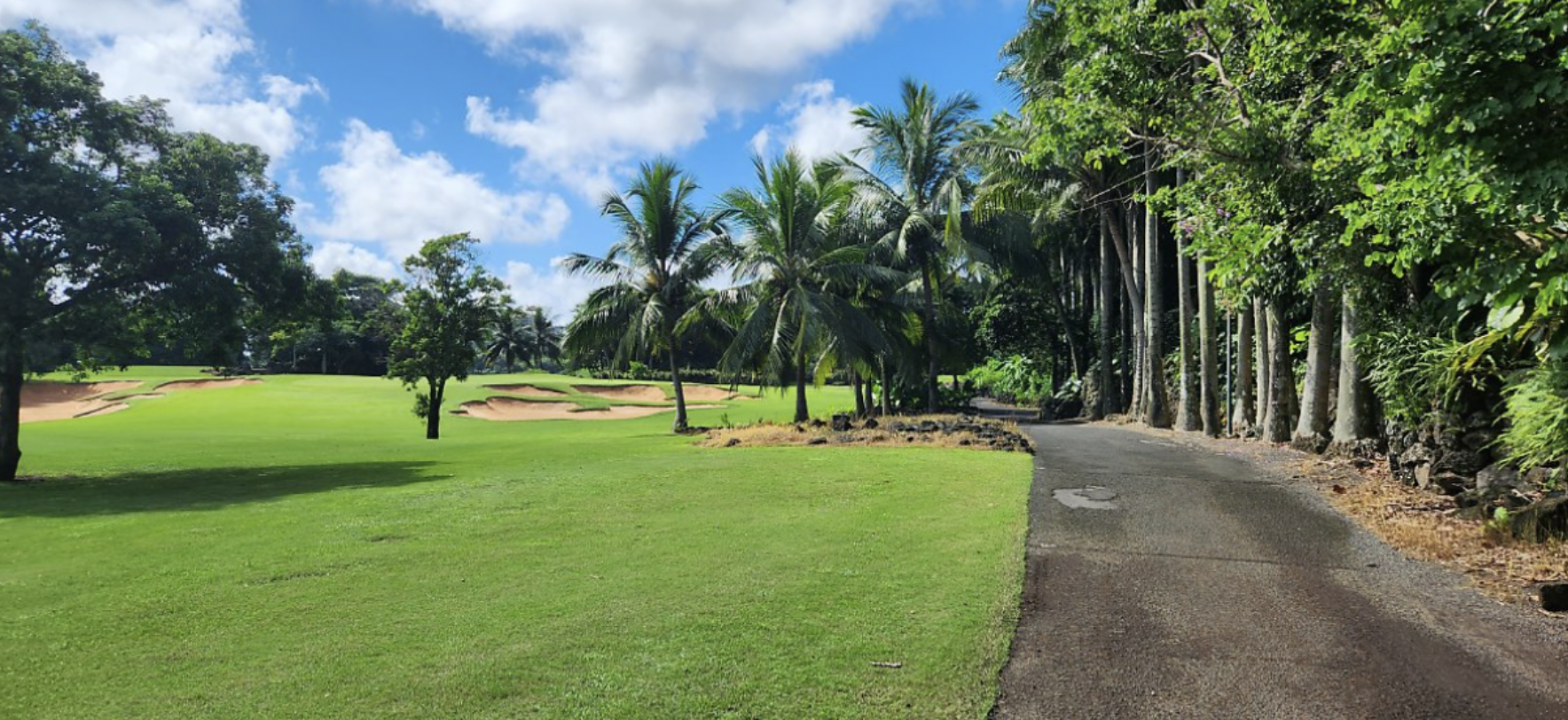
Except for the absence of the sound of waves, the ambiance reminded me of courses in Hawaii.
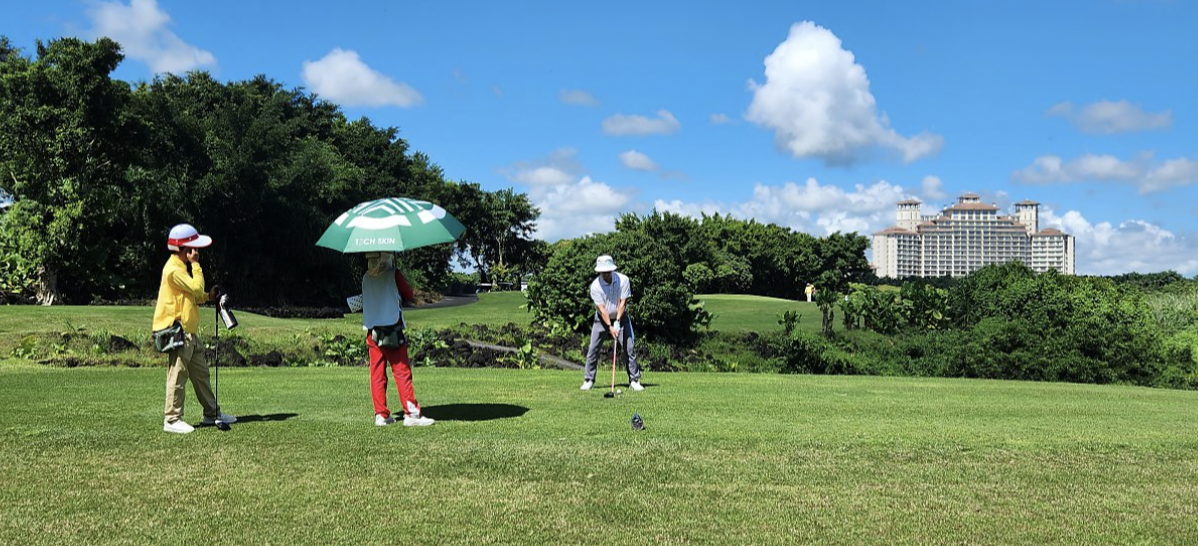
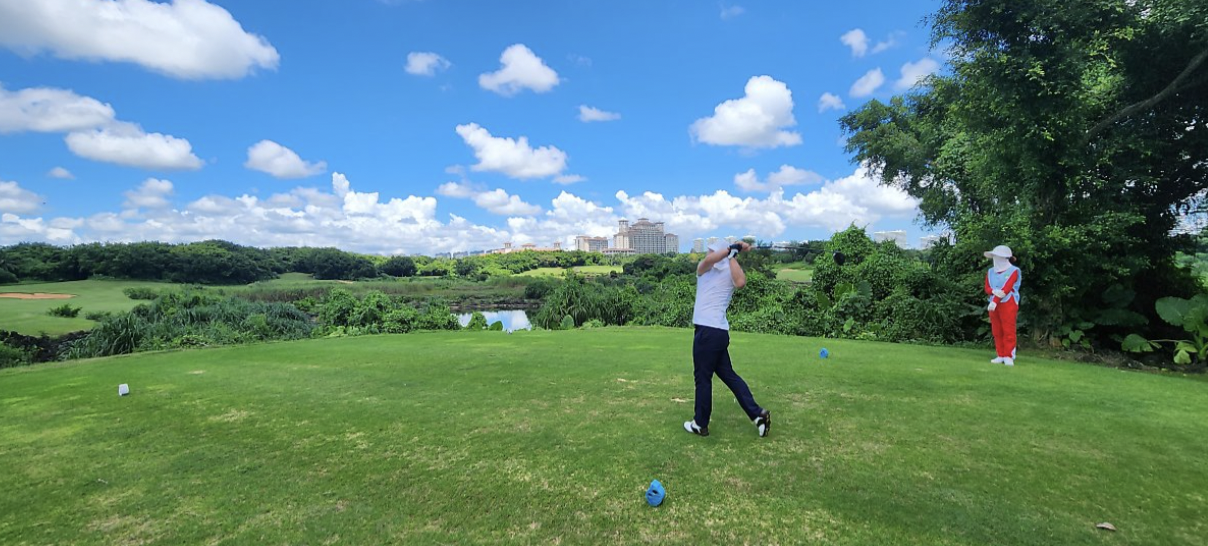
Loved the open skies and the awesome panoramic views!
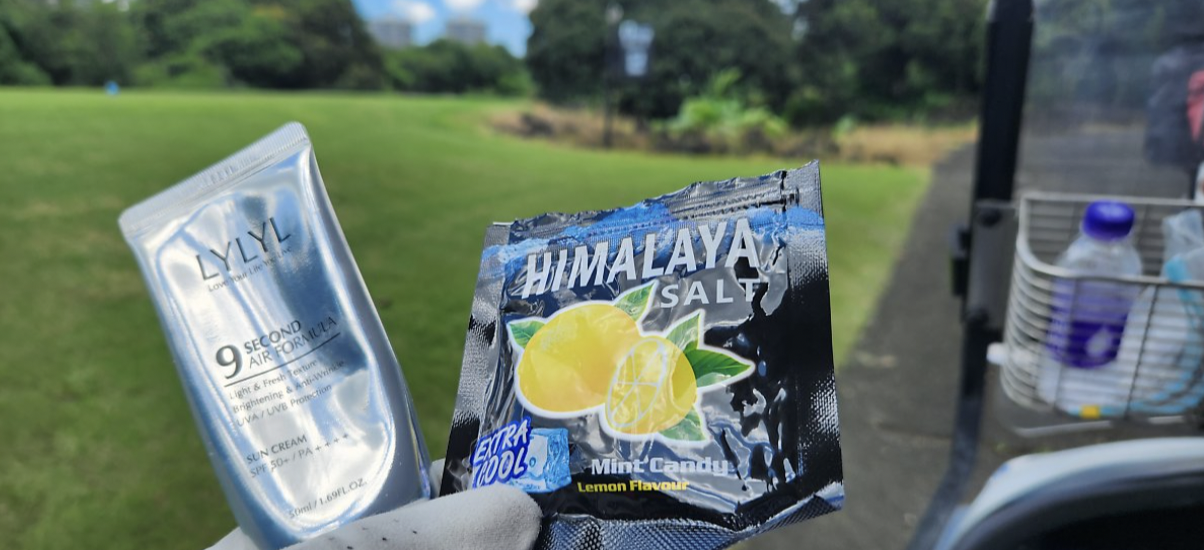
Be sure to pack some strong sunscreen and sports drinks or salt candy. The tropical climate can get quite hot and humid at midday.

Blackstone plays to par 73 and 6722 yards from the blue. I was happy with the score especially when the caddies told me it was the best they’ve seen in a while, LOL!!!
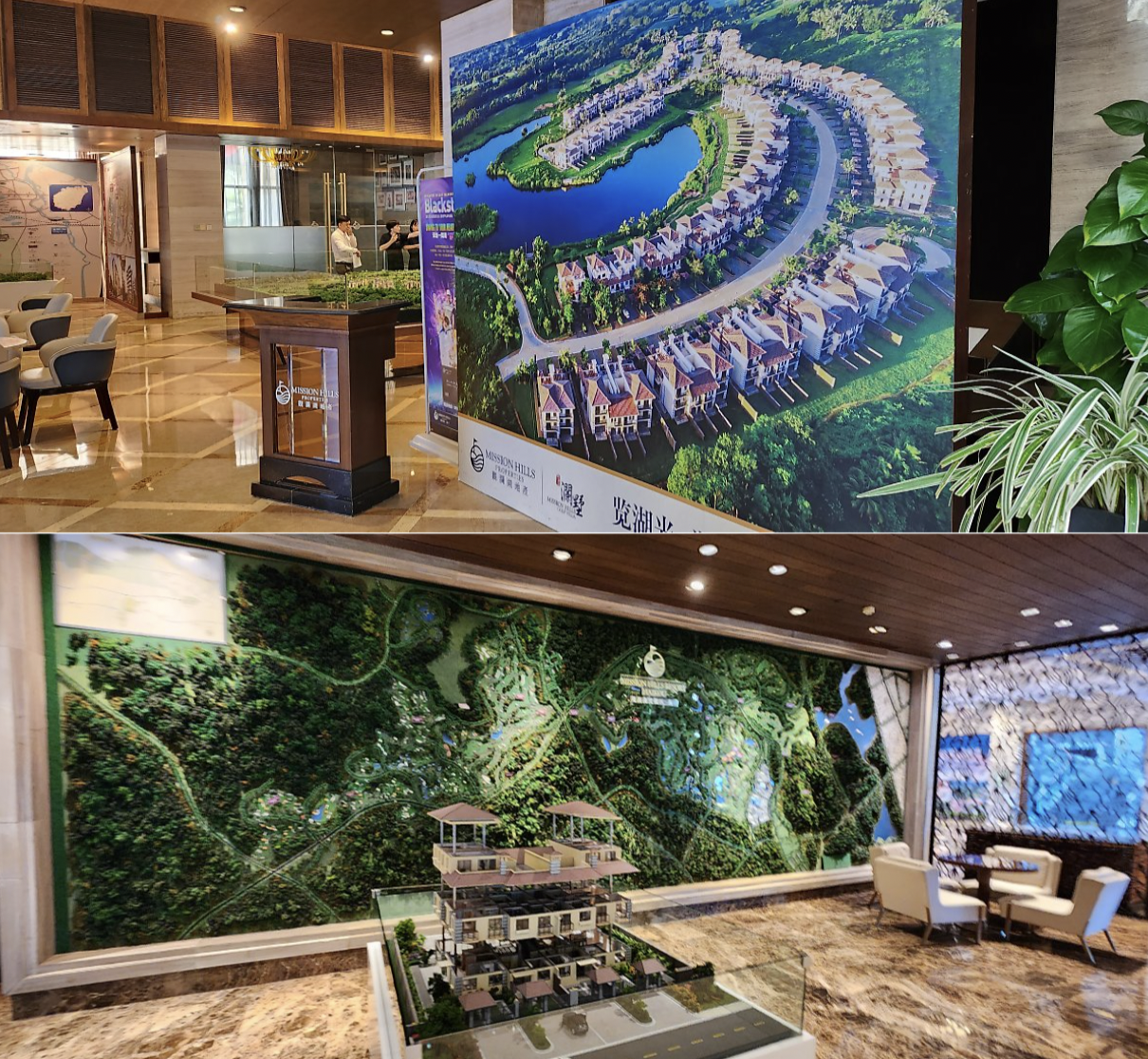
It looked like they were planning to build even more courses and condos. These folks sure like to think big.
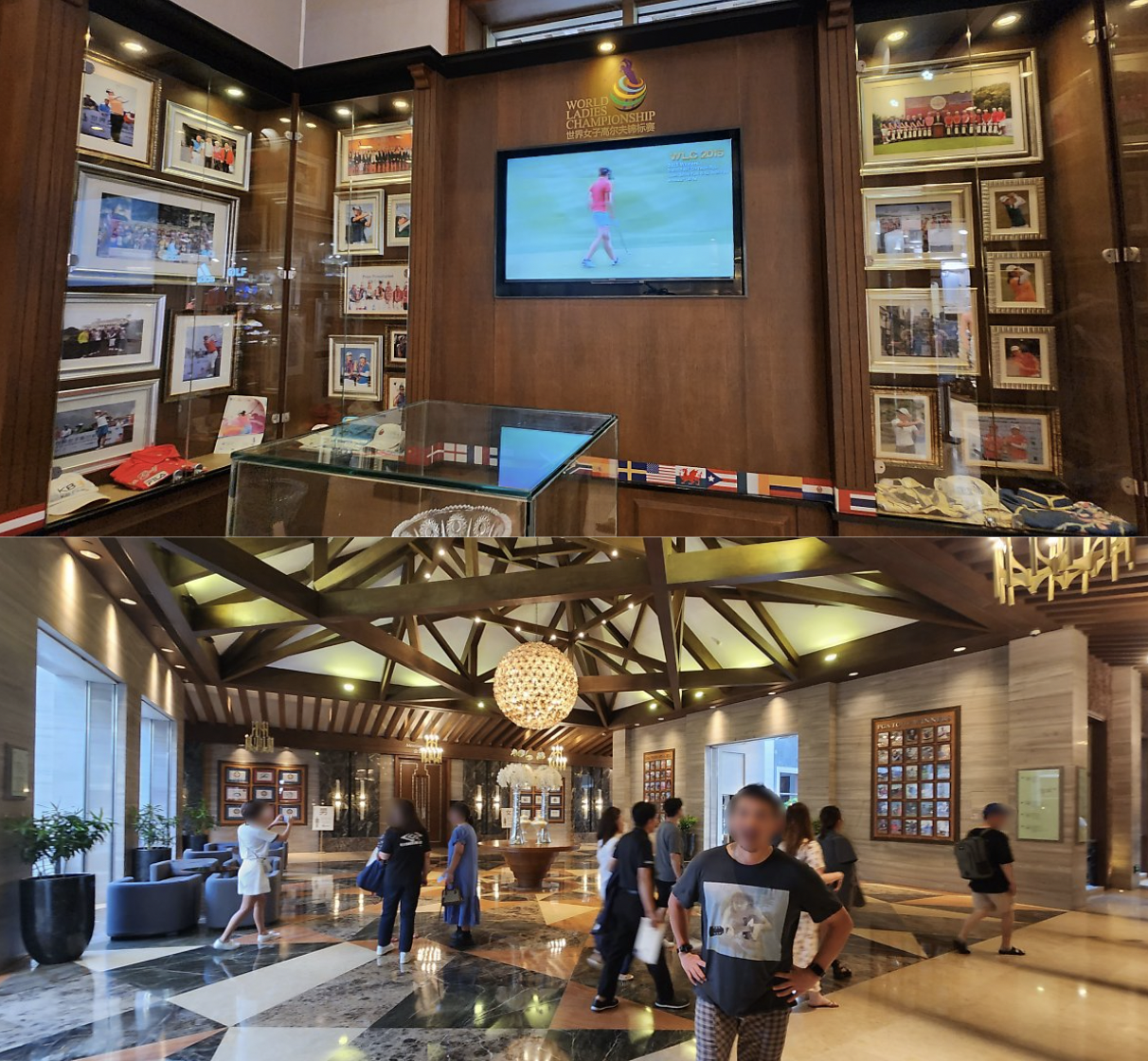
Wall-to-wall memorabilia on display from past majors, champions, and legends of the game. So this is where all those signed Masters flags were!
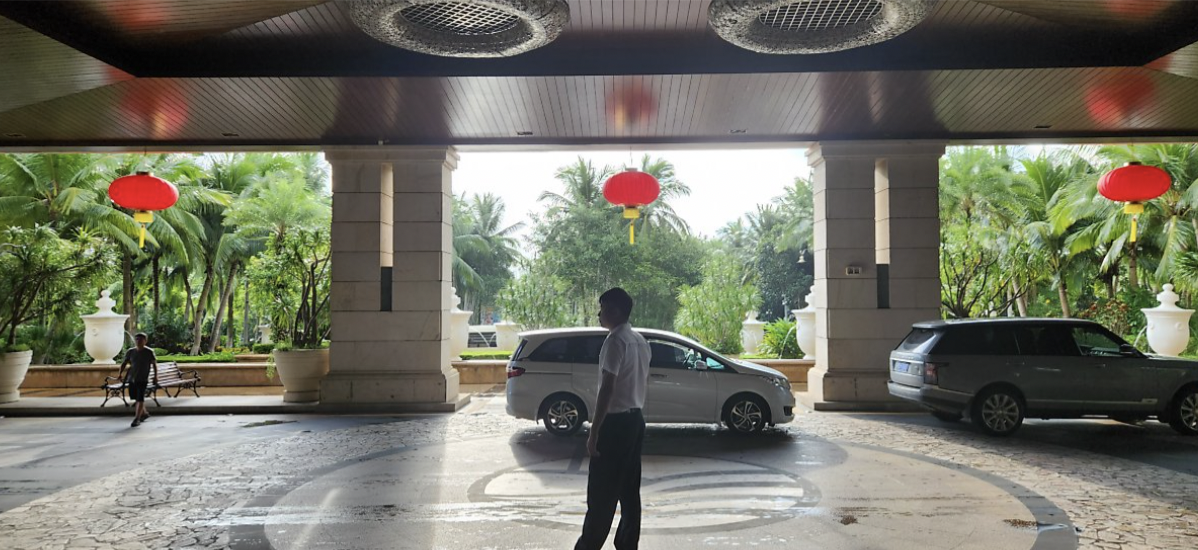
The three-day stay went by all too fast… (T^T)
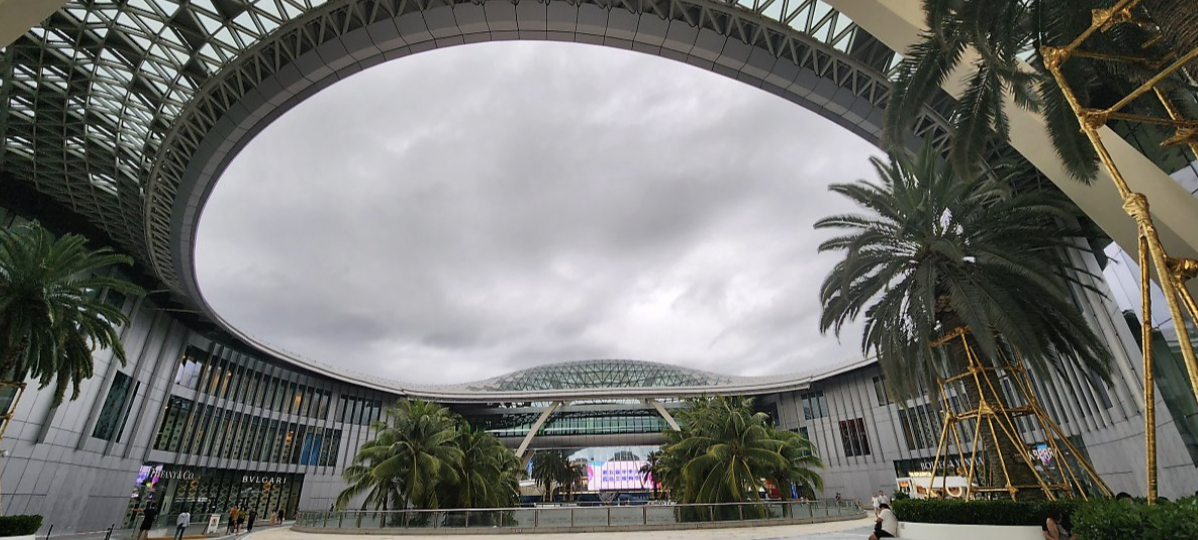
As part of the package, we were also shown to the largest duty-free shop in Asia. These guys have a thing for being the biggest, grandest, and most opulent; and it was awesome.

It seemed as if every brand of luxury was represented here, and it would’ve taken hours to see it all. If your partner is into this kind of stuff, leave them at home in case they get in the way of your golf.

A final meal at a popular restaurant before heading to the airport. Can you guess the menu? Yup, Chinese, but like nothing you see in the West. It was all delicious to boot.
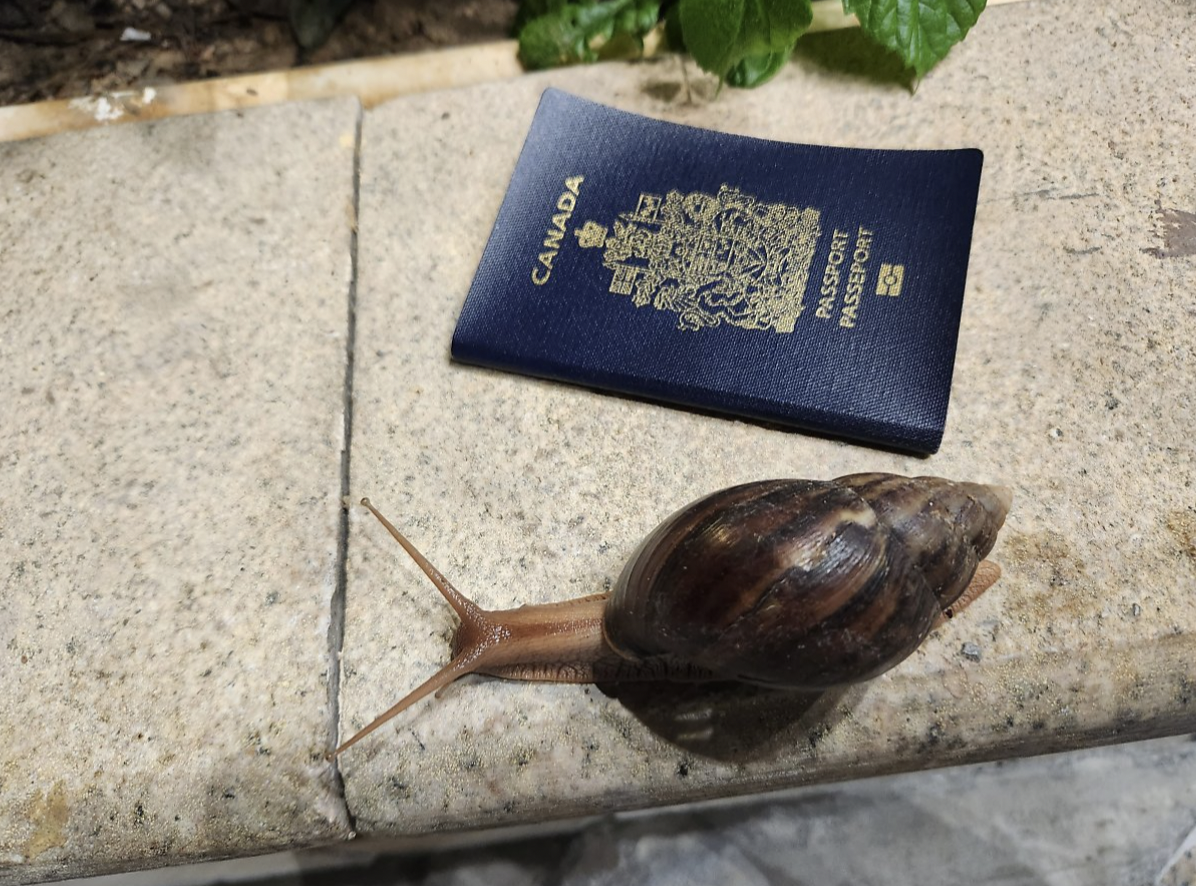
Met a new friend while waiting for the limousine bus to take us the rest of the way. Even these guys were BIG.
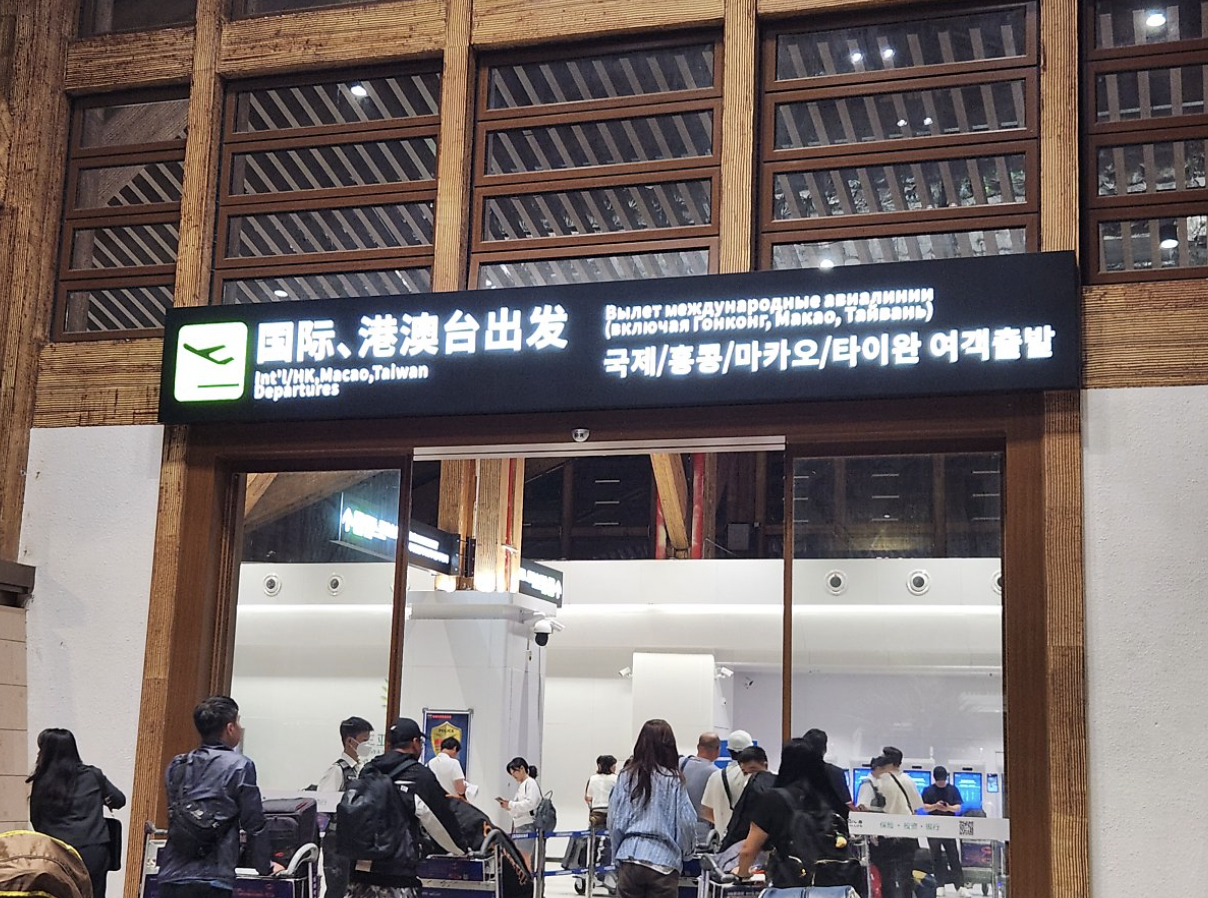
After a rather simple and quick immigration and boarding process, we were safely on our way home to Korea. I have to give credit to the authorities for making the immigration/airport customs process simple and quick. Sometimes everything can be great, only to be ruined by a last-minute glitch or hold-up at the airport, and there were none.
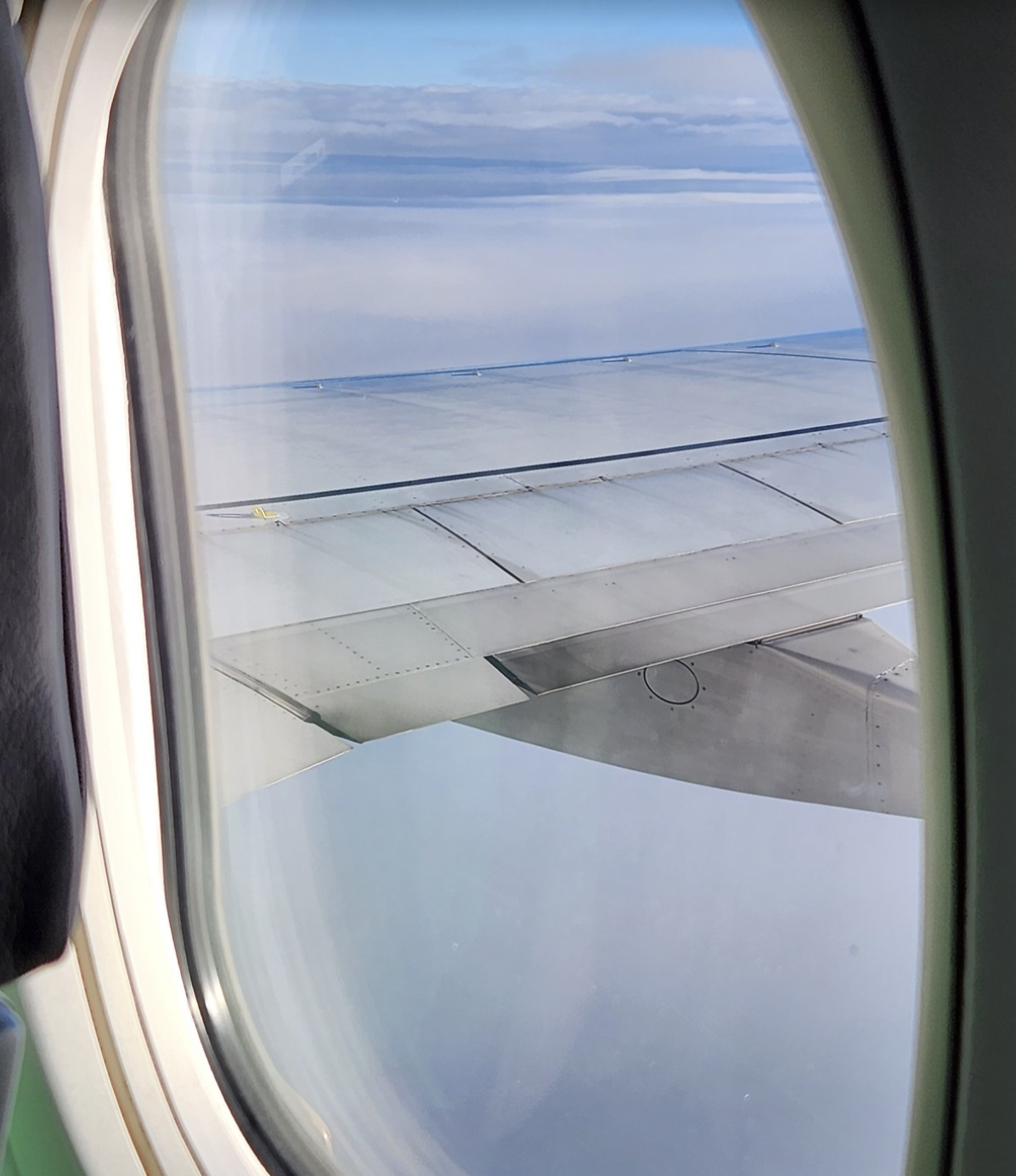
A short nap and back in Seoul. I can’t wait to go back again soon with the whole family to jump in the hot springs. Now if I can only find a way to go visit Pebble Beach and St. Andrews similarly, I’m set. Wish me luck.
- LIKE31
- LEGIT4
- WOW5
- LOL1
- IDHT0
- FLOP0
- OB3
- SHANK9
Courses
The Scottsdale Experience, Part II: Boulders, Troon North, and Camelback
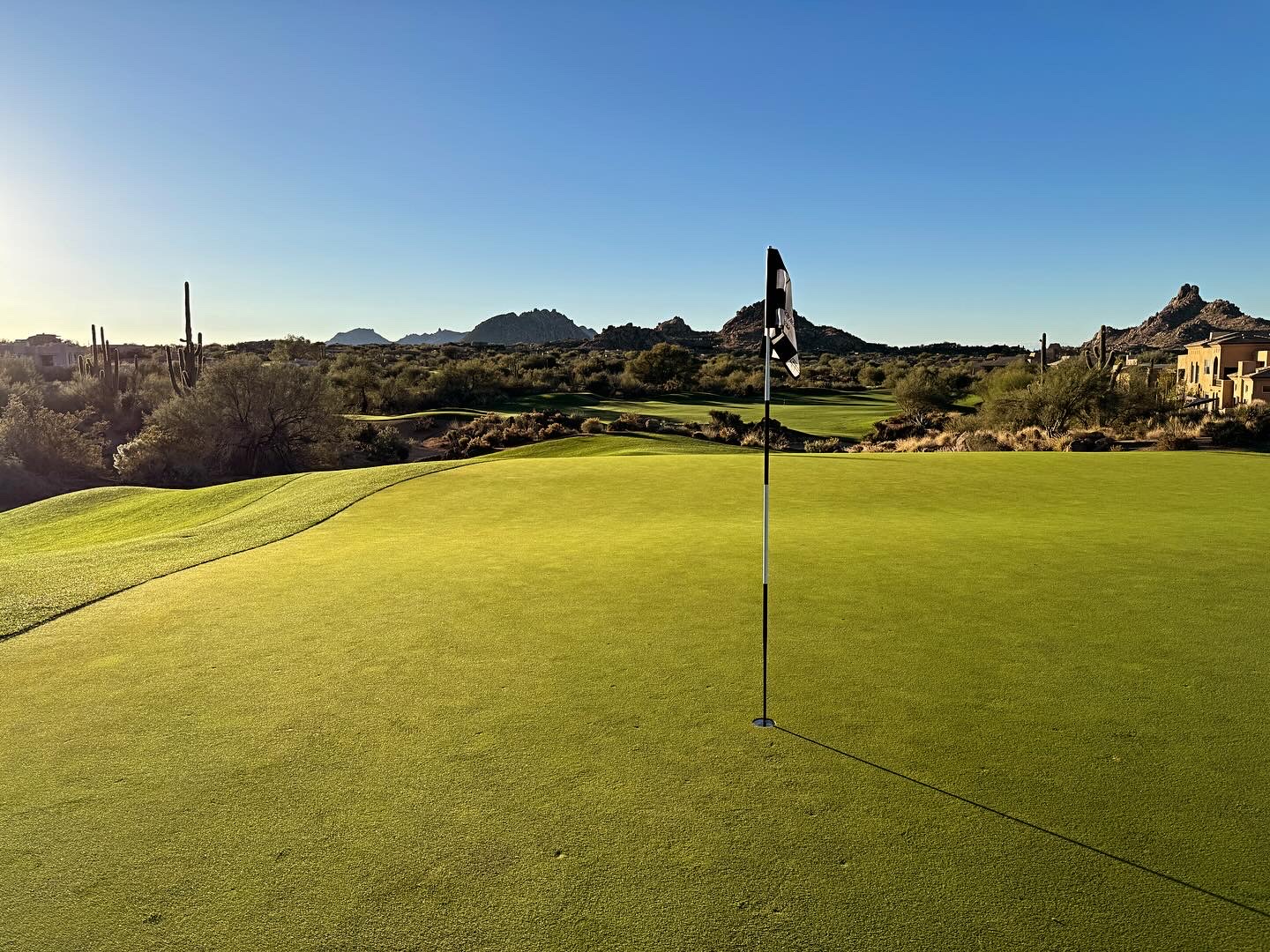
It’s been four years since my last desert golf trip in Arizona. For an area so rich in good golf, that’s too long to wait for a return trip.
Our last visit to Scottsdale brought my family to the Fairmont Princess during the Christmas season. We just like to visit this time of year because everything is decorated for the holidays. While there, I was able to play at TPC Scottsdale, Grayhawk, and We Ko Pa–all stunning tracks for every handicap level.
For this trip, now four years removed, we wanted to experience two different types of Scottsdale resorts: The first two nights at Boulders Resort and Spa, about 30 minutes north of town, surrounded by (you guessed it) boulders and nature. For the second two nights, my wife wanted to be a bit closer to the city life so we picked the JW Marriott Camelback Inn, minutes from Old Town Scottsdale.
There are many differences between the two resorts, but both somehow maintained the vibe of being in the Valley.
BOULDERS RESORT AND SPA
The Boulders Resort and Spa sprawls out across an enormous piece of property, which includes two award-winning, Jay Morrish-designed golf courses that both rank well as playable golf courses in the state. When you check in, they give you a map and a flashlight to help you navigate the grounds at night. The rooms (or casitas) are villa-esque, complete with your own fireplace and wood to burn on cold nights. The place just smells like fresh air and chimineas.
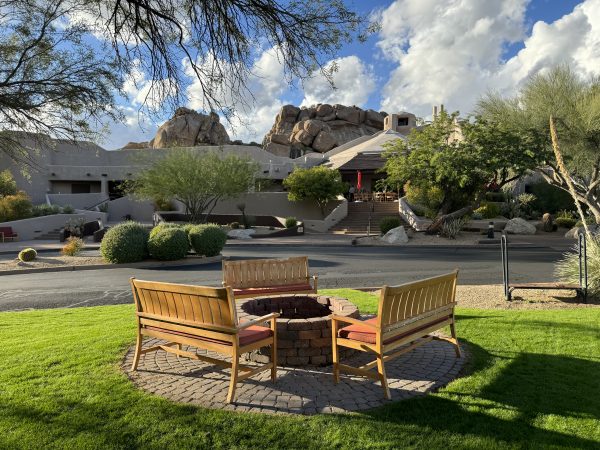
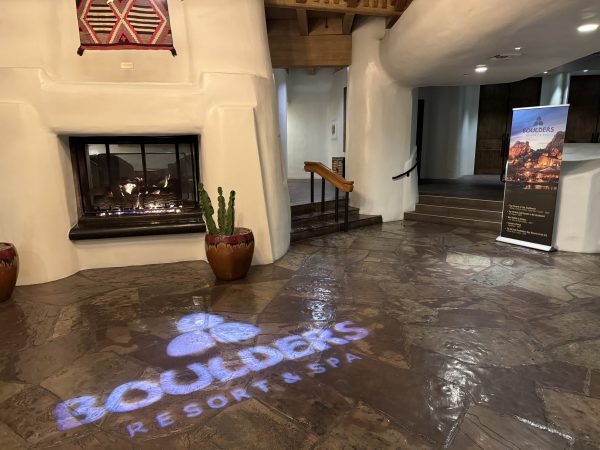
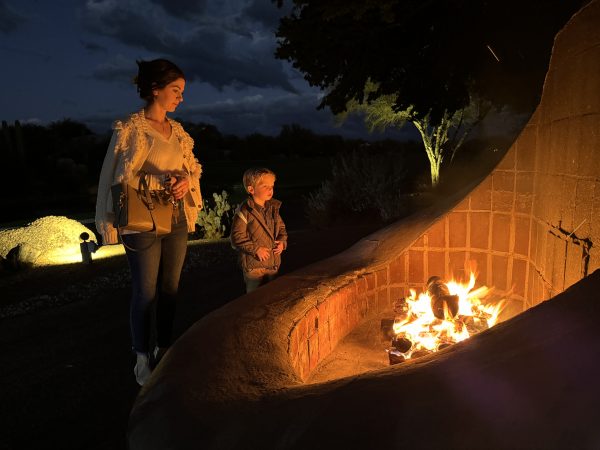
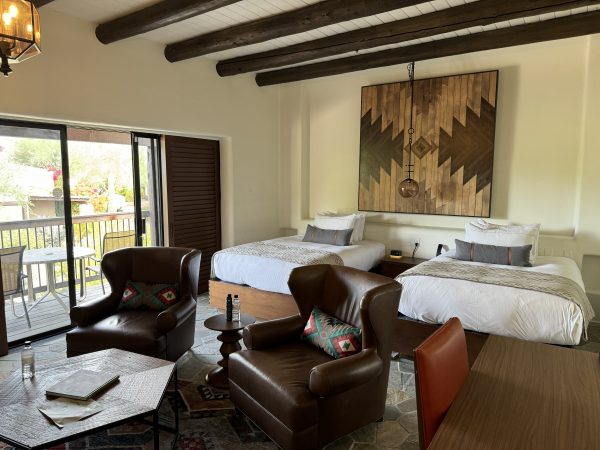
The lodge itself is nestled beneath a small mountain with accessible hiking trails along both sides. Behind the main lobby sits a good-sized pool, which was heated when we visited and allowed for swimming in November. Temperatures this time of year are typically pretty chilly, especially for early morning golf, so to be able to swim in warm water was a nice treat.
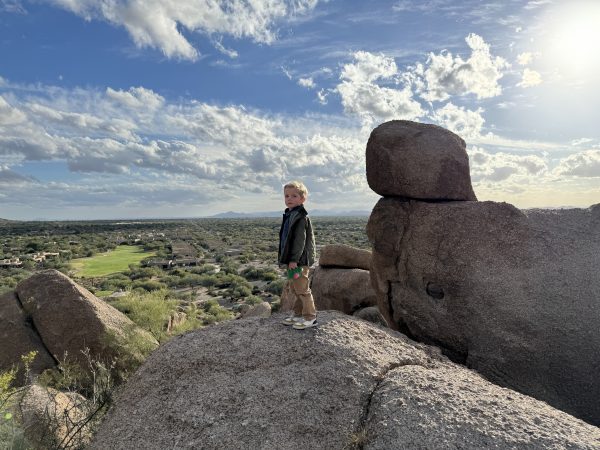
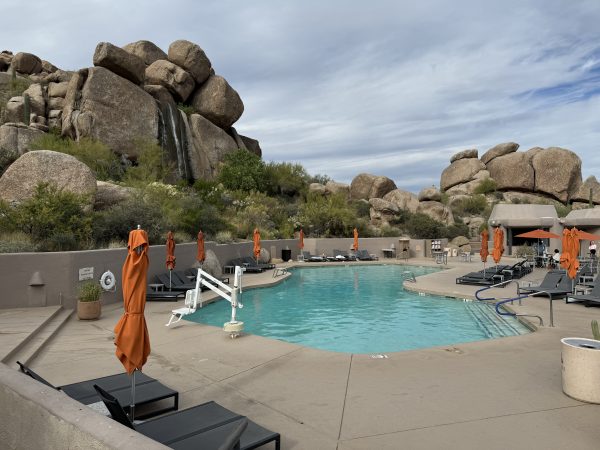
The two courses are both on the property, making Boulders Resort a truly ‘never have to leave’ type of resort. There are also multiple restaurants on-site, including Bogey’s Bar near the pro shop and 18th greens for both courses. Boulders is home to about 400 golfing membership families but also remains open for public play as well. The members and public alternate courses each day, which apparently works great and keeps a high-season traffic light on both courses. I played the North Course but also walked the South to get a good feel for each.

View from clubhouse over 18 of South Course
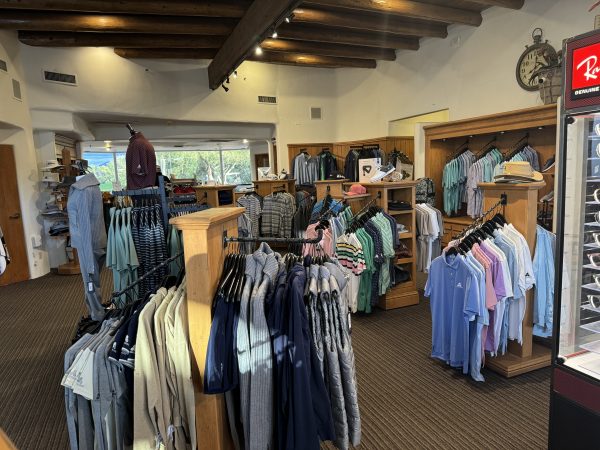
Boulders Pro Shop
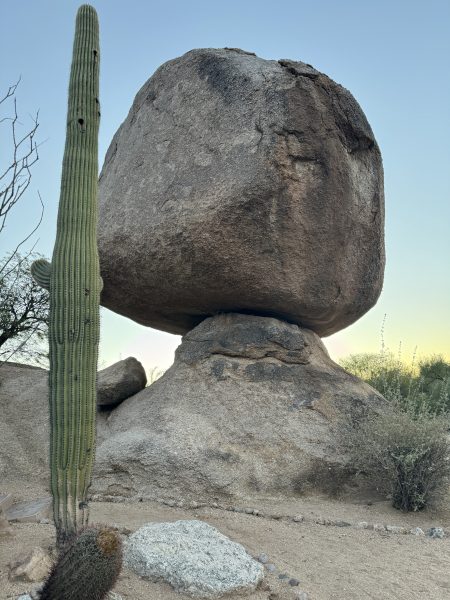
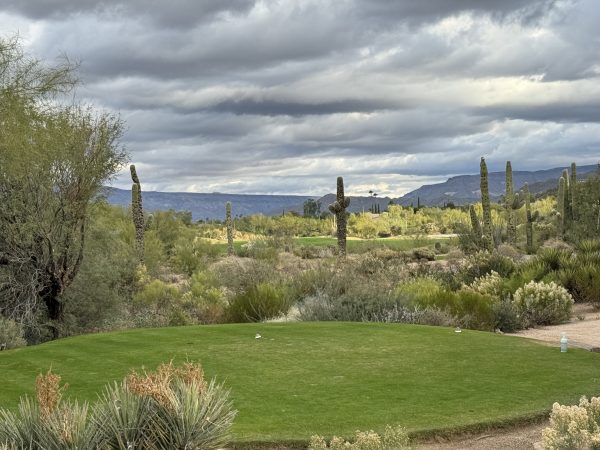
Number one tee- Boulders North
The North course tips out at 6,959 yards but can play as short as 4900 from the red tees. There are six tee box options in total, which helps on a desert course like this because between the frequently watered green grass come many different varieties of wasteland carries and sandy ravines. With options on tees and course length, many of the challenging shots can be added or taken out depending on skill level.

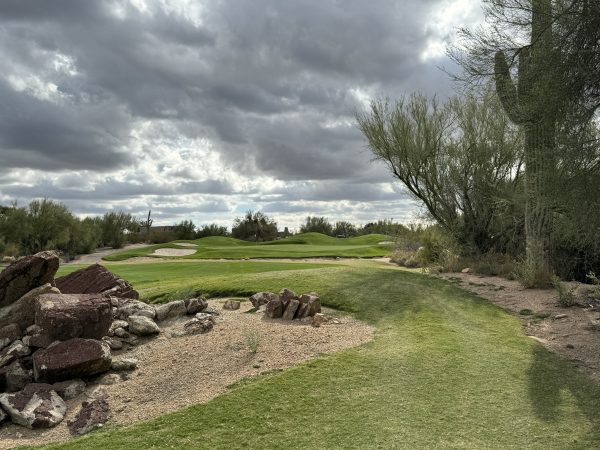
You can expect a lot of uneven lies at Boulders, as most of the fairways and playing surfaces undulate to blend right in with the surrounding mountains. Saguaro cacti are in every site line, but the predominant feature of both courses is the elephant-sized boulders on nearly every hole. Some appear to teter on their end, ready to roll down into the bunker where your ball is resting.
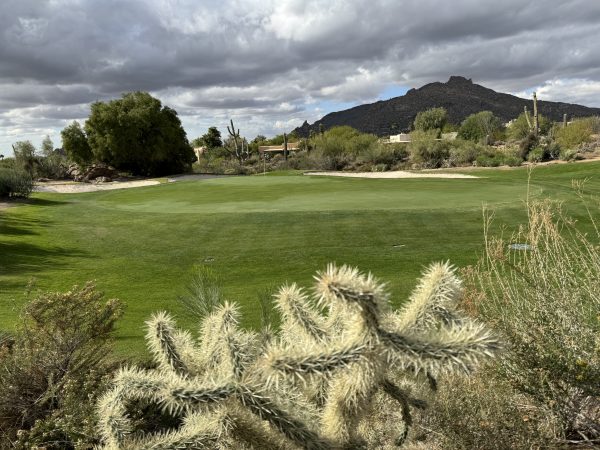
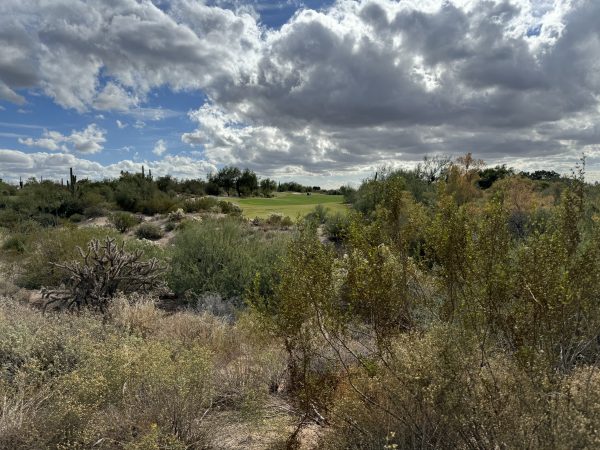
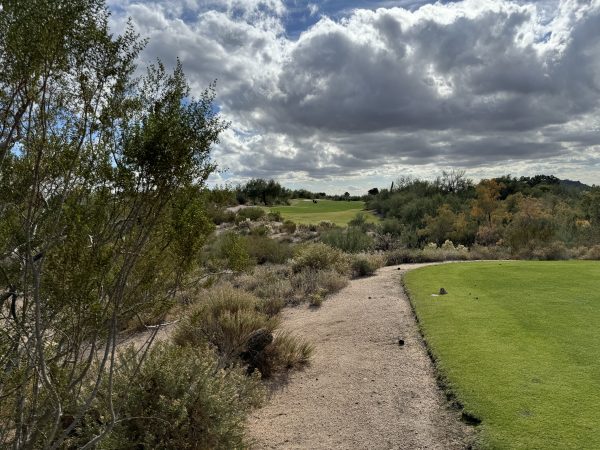
Of course, like most desert-style courses, errant shots are findable in the sandy soil, but not without risk of being pricked, poked, or bitten. My general rule is that if I can’t see it from the green grass, I’m better off not wandering too far out in search of what might be painful to find. Drop a ball and take my medicine. That proved to be true at Boulders as well. There are many thick areas just off the fairway where man should not be. And a better golfer than myself would only look in that direction to view the beauty of the Sonoran Desert.
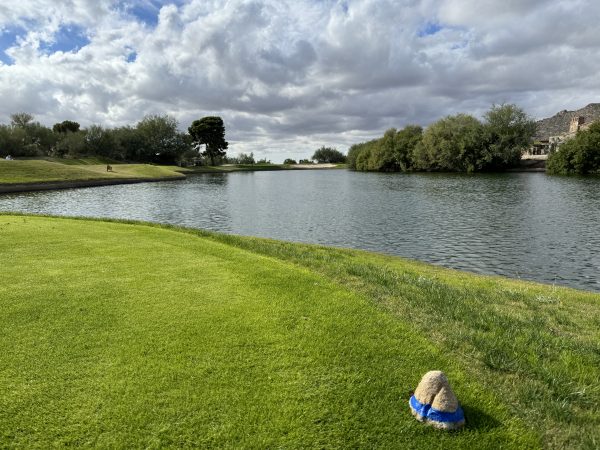
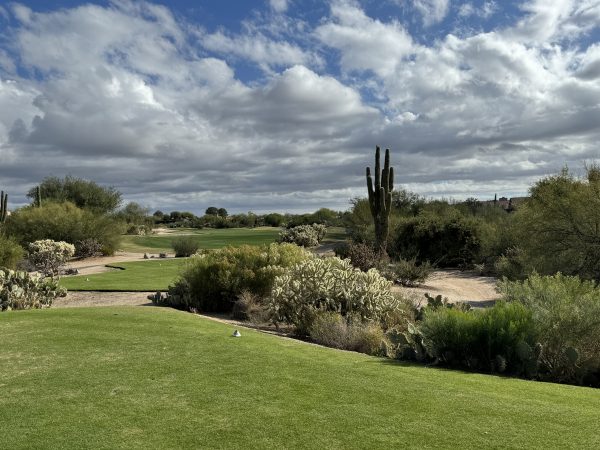
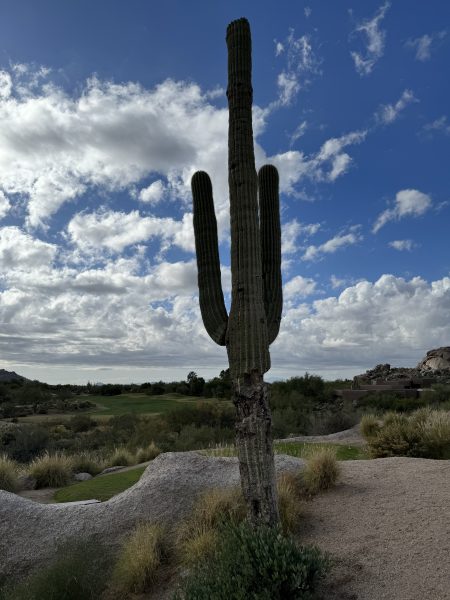
Both courses do have a few splatters of water hazards here and there. Most folks I spoke to on the property noted that the South Course has a couple more breathtaking views and elevation changes than its counterpart North, but the North Course provides a wider array of shot-making options for the more serious golfer. I thought both courses were stunning to the eye, but it wouldn’t shock me if, had I played South, I found it a bit easier and more resort-style friendly.
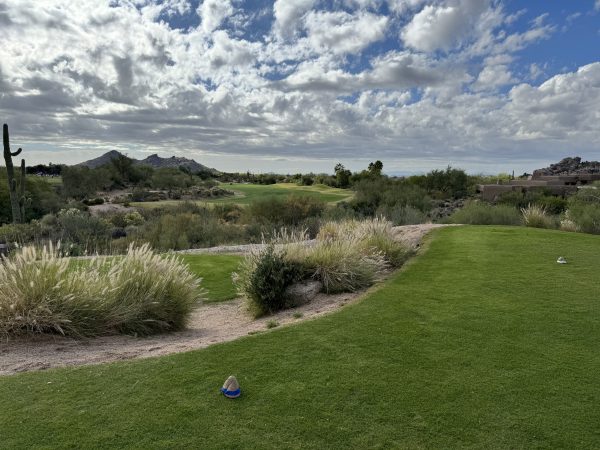

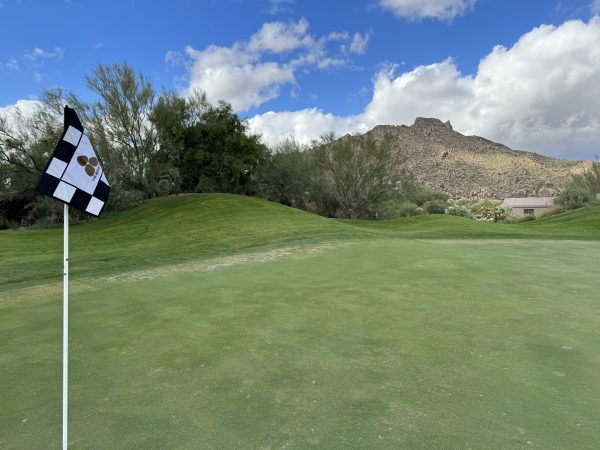
Non-member tee times can be booked online or through the pro shop but if you are staying at the lodge, you’re more than likely going to get a better hotel rate to play. In November, which is almost peak season, mid-week greens fees range from around $100-$200 with dynamic pricing throughout the day. Both courses are incredibly walkable and a caddie or pushcart can be available upon request.
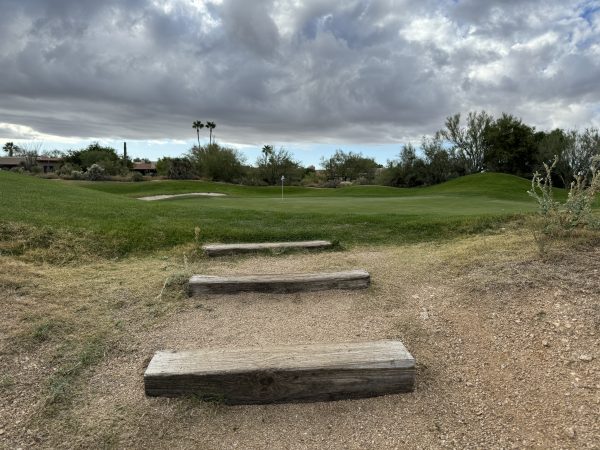

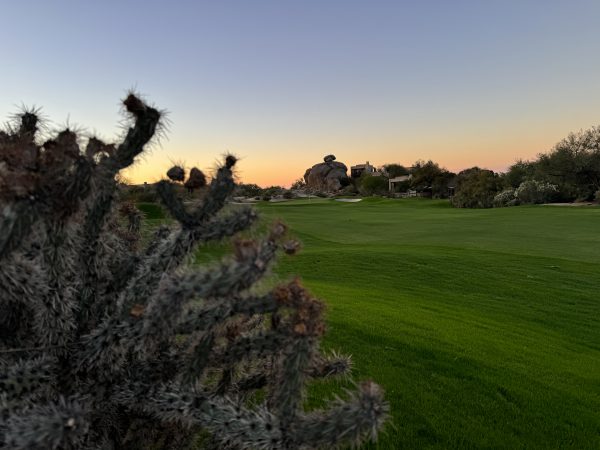
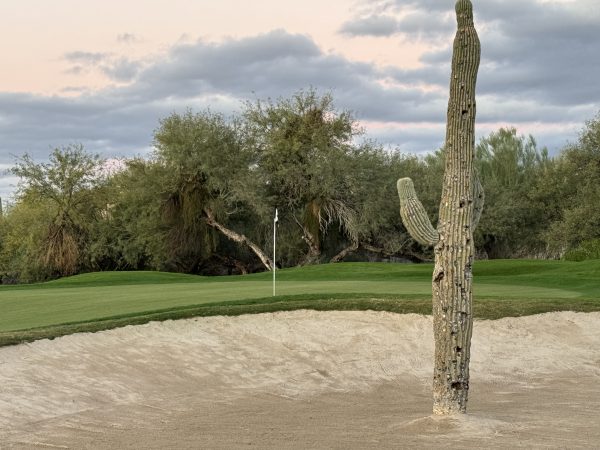
After my round, I took my son on a hike up the mountain above the lodge for some pretty stunning views of both courses. My wife escaped to the spa for a 90-minute hot stone massage, which was my way of saying thank you for another golf trip for the family. The least I could do. She said it was incredible and unlike any other massage she has ever had in her life. They even put hot stones between her toes, which I suppose feels good.
We wrapped up our stay at Boulders with a fantastic dinner at Palo Verde, located at the resort headquarters. We were able to sit outside under the stars with the help of a few closely placed heaters. With the golf, the restaurants, and the natural activities available, Boulders proved to be a wonderful spot to relax and get some swings in. If your partner is a fan of spa days and calm settings, this is the golf resort in Scottsdale to stay at. The food, drinks, and lodging are all upscale. I would say it is a perfect couples’ getaway resort. We didn’t see any other kids so there may be better places to stay if you’re bringing the little ones along, though. With kids, I’d stay closer to town (see below) and head up to Boulders for a round of golf only.
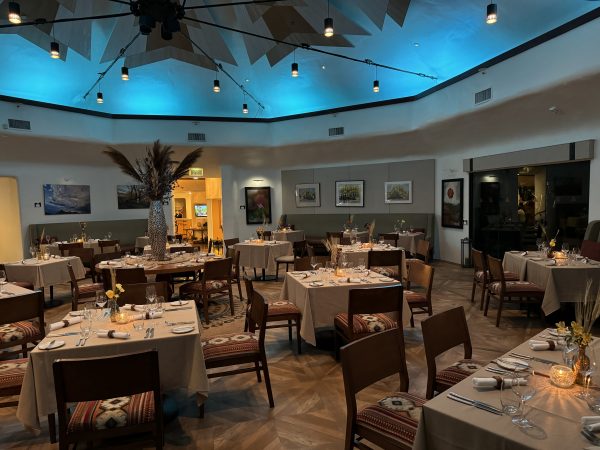
Palo Verde dining room at Boulders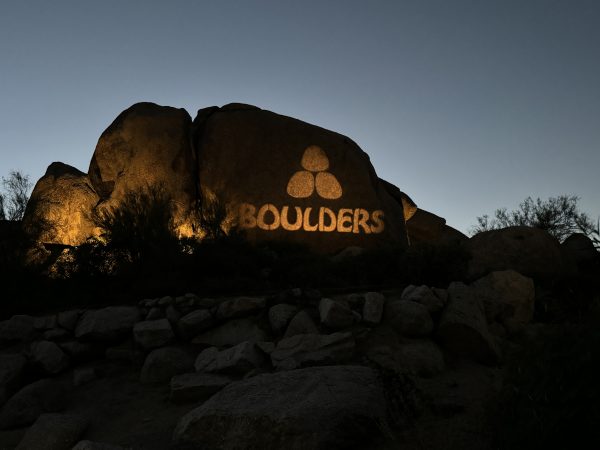
TROON NORTH
The next morning, I took an Uber just a few minutes away to the Troon North campus for a round at the Pinnacle Course. Troon North is home to two tracks, both designed by Tom Weiskopf and both immaculately maintained year round. The Pinnacle course is more links-style than its sister, the Monument Course, which is widely considered the signature course between the two.
The clubhouse is first class, with a well-stocked 2,200 square foot pro shop, and a legitimate locker room for public use. And the logo is fantastic.
Troon North offers a membership plan as well as public play, and daily fees are dynamicly priced.
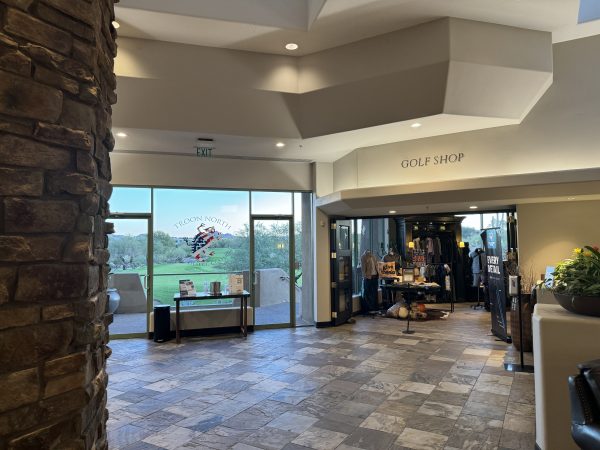
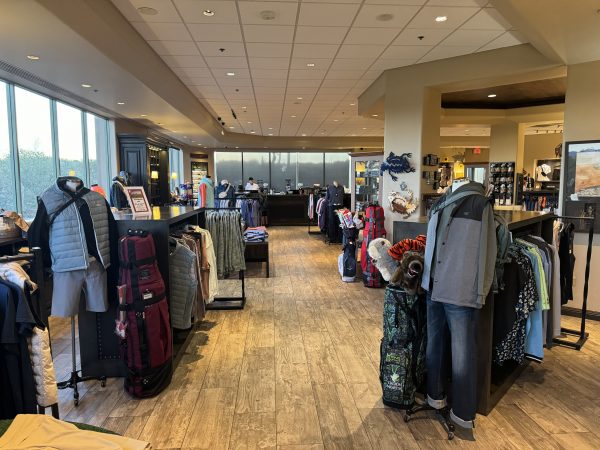
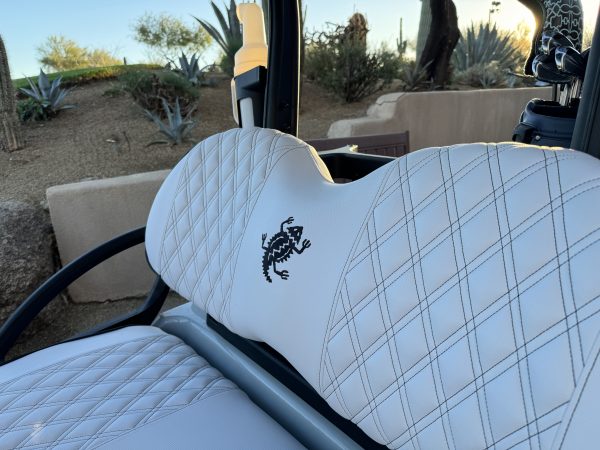
Pinnacle course plays over 7,000 yards from the back tees but provides seven different tee boxes allowing you to play the course as short as 4831 yards. Though more links style than Monument, the course still provides a very Sonoran desert feel and carries over thorny brush on nearly every hole.
Both courses were ranked in the “Top 10” best courses you can play in Arizona by Golfweek.
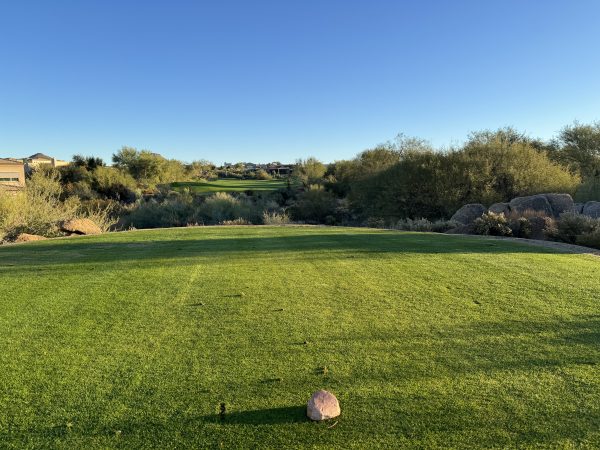
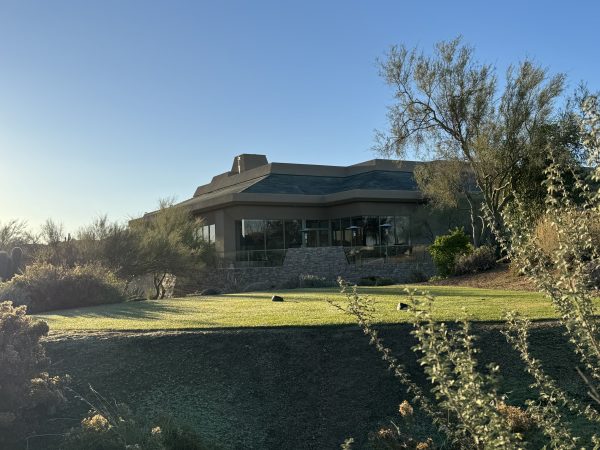

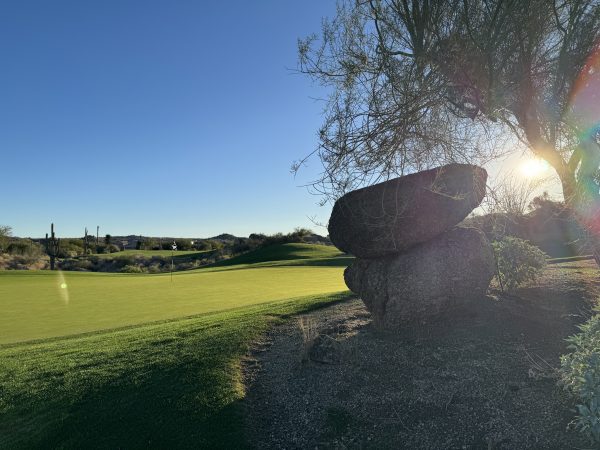
I thoroughly enjoyed my round at Troon North. The facility is about 35 minutes north of the Phoenix airport so it’s a bit closer to downtown Scottsdale than Boulders. It is also closely connected to the Four Seasons should you be looking to stay nearby.
The course felt pristine and special. You can tell the place pays attention to detail and takes great pride in the condition of the courses. The layout has some elevation changes so it may not be the easiest to walk. The routing never really brings you back to the clubhouse until the 18th hole, either, but there is a comfort station out there and beverage carts making the rounds.
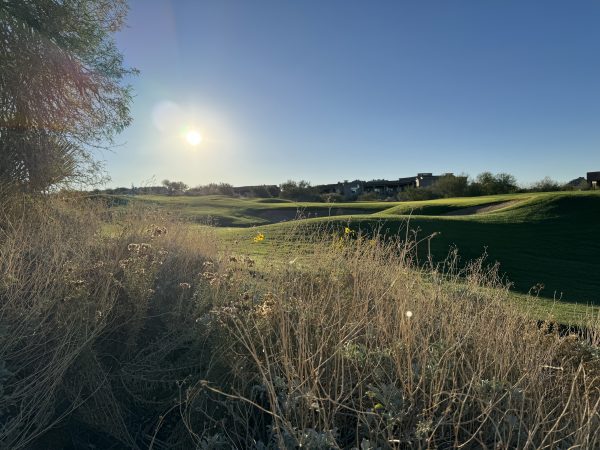
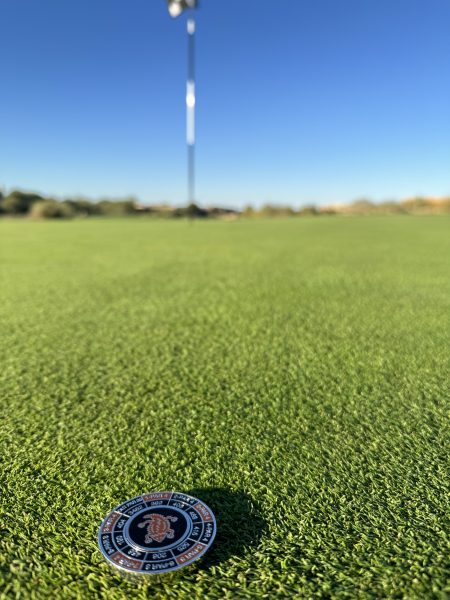
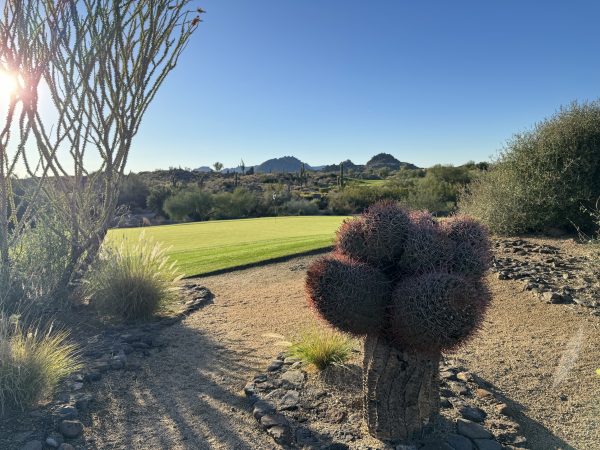
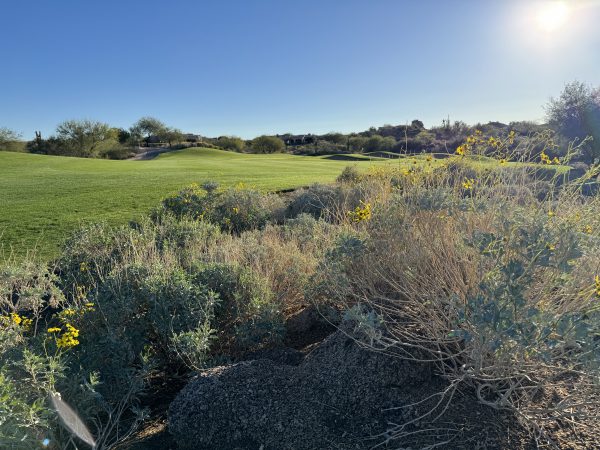
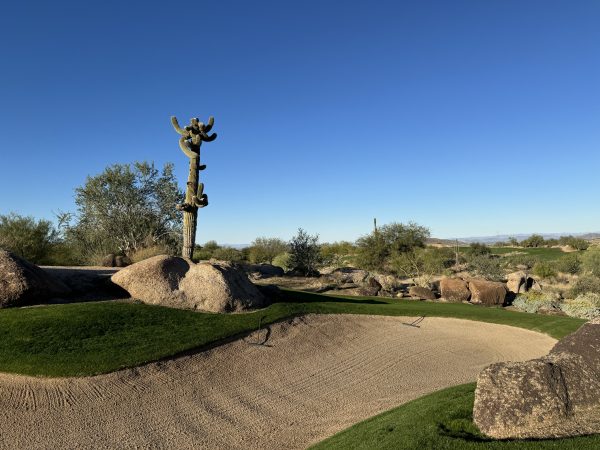
The bunkering is fair and not very deep, but they are strategically placed right where you don’t want them to be. The par 71 has only one par 5 on the front nine but boasts a 609-yarder on the back that plays every bit as long as it reads. The par threes are scenic but lengthy as well, generally playing around 200 yards from the backs except for the short 140-yard 16th.
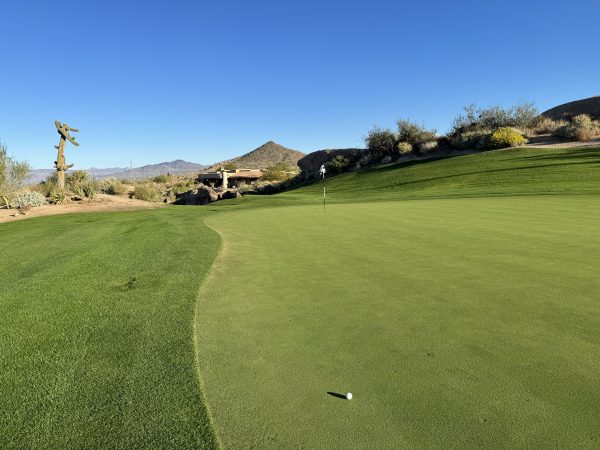
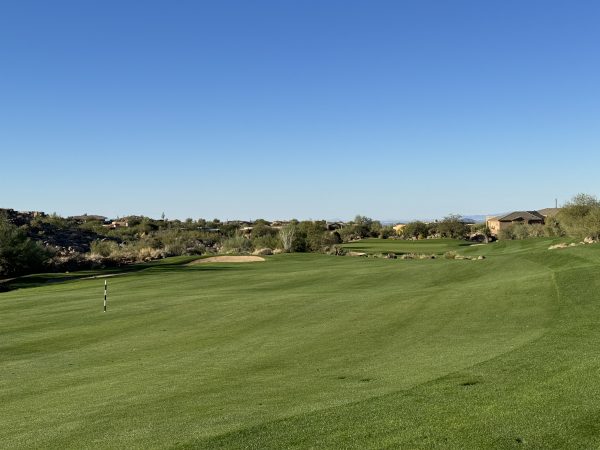
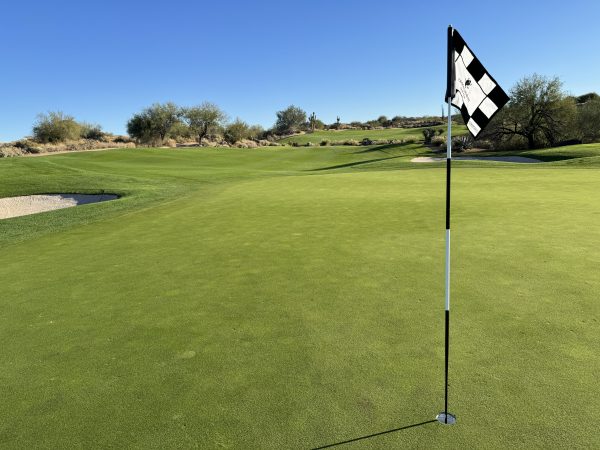
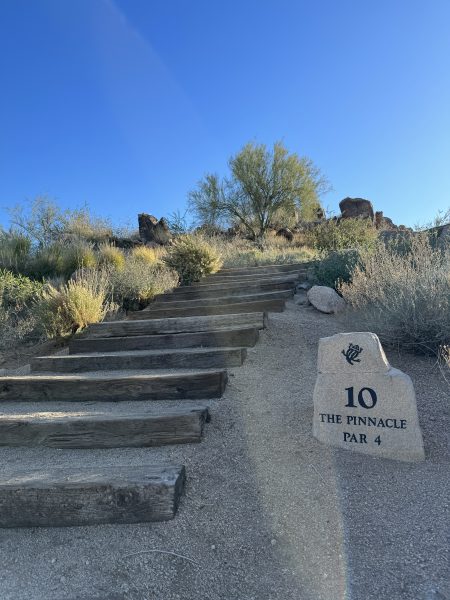
The fairways are bermuda grass and the greens are bent. Overseeding is done in the fall but the schedule is posted online to help avoid any unpleasant rounds. There are valley quail all over the course that walk in front of you on fairways and tee boxes like schools of fish.
The course is just so scenic and first-class. The mountains are in view the entire time and the course provides a wide array of options and shotmaking opportunities. I played early and alone and I genuinely enjoyed my time on the course. It was my favorite round of the trip.
The 18th green is huge and it blends into the practice green near the clubhouse, snaking around a giant rock to protect the practice green from shots gone long. It is a very unique site from both the clubhouse and the 18th hole but adds some character to the facility.
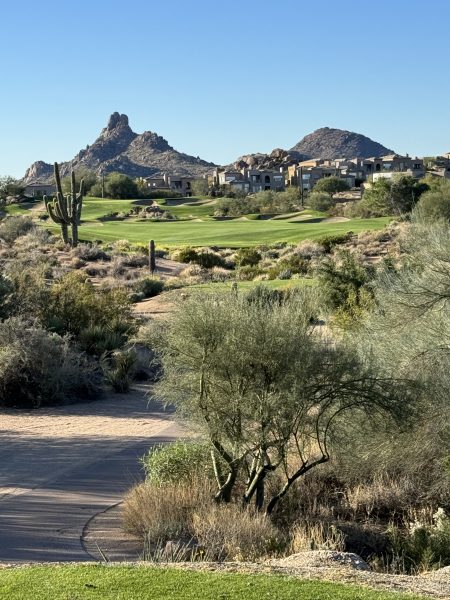
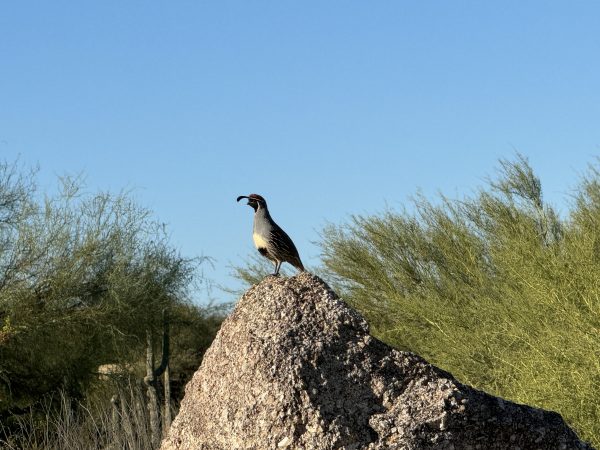
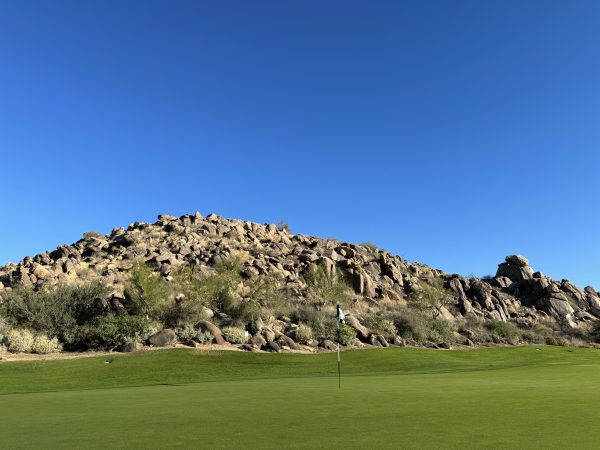

CAMELBACK INN RESORT AND GOLF
The JW Marriott Camelback Inn is an incredible hotel. I am not really sure how else to describe it. Being there feels the way an in-city Scottsdale hotel is supposed to feel. You’re surrounded by Camelback mountain on one side and Mummy Mountain on the other. The adobe buildings feel like they have been there forever and yet are still perfectly maintained. There are sitting areas near fireplaces around every turn and the landscaping is quintessentially desert floral.
We heard from more than one person that the Camelback Inn is Mr. Marriott’s favorite hotel within his entire company and he spends one month there every year. That is saying something!
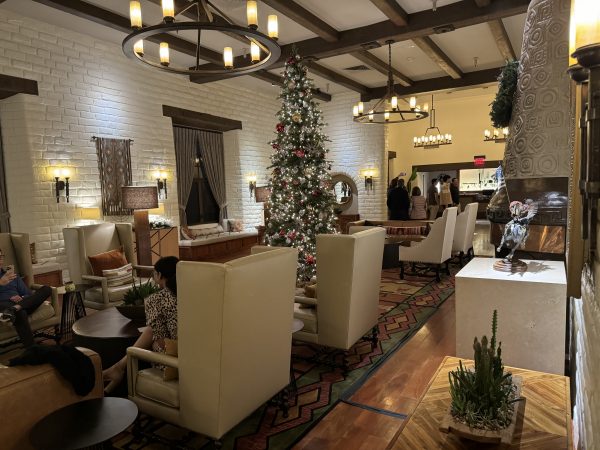
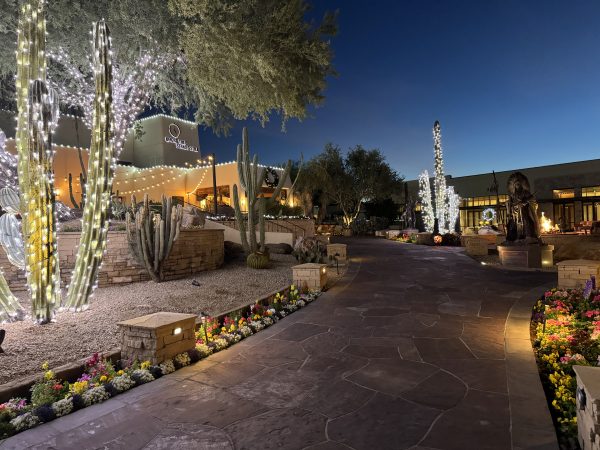
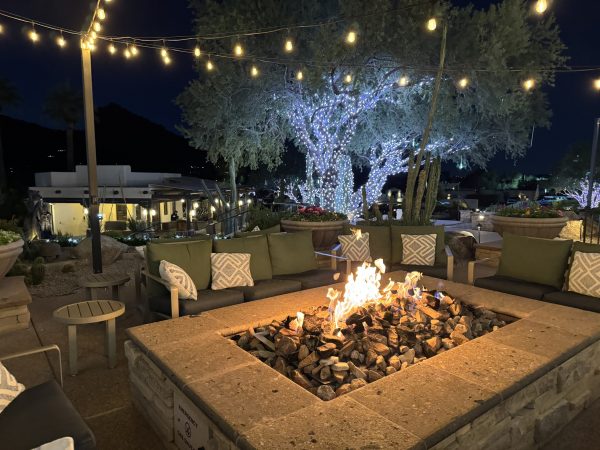
Our room was standard size but wonderfully located just a hundred yards or so away from the main lodge and restaurants. Between us was a green space with lawn activities for guests of all ages. There is a playground and putting green on site and several pools (some heated) for swimming year-round. And the views are just spectacular. To be only minutes away from Old Town while still being able to hike up multiple mountains of your choosing is one of the most special things about Scottsdale.
We ate breakfast, lunch, and dinner at Rita’s Cantina and Bar…simply because the menus change for each meal and the outside patio seating is so incredible. Hoppin’ Jacks at the pool is another dining option but the Lincoln Steakhouse and Bar is the upscale dinner spot…and the gem of the dining options.
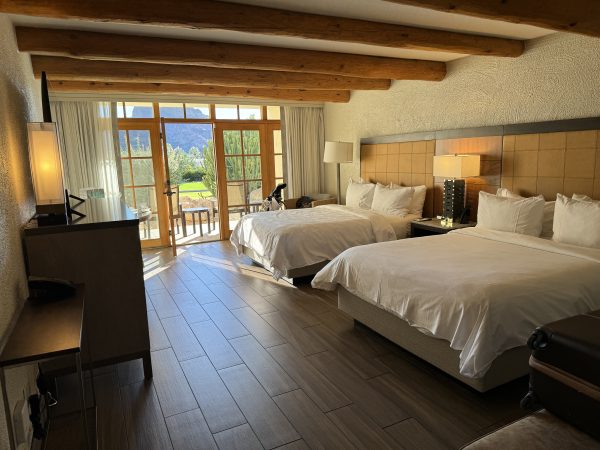
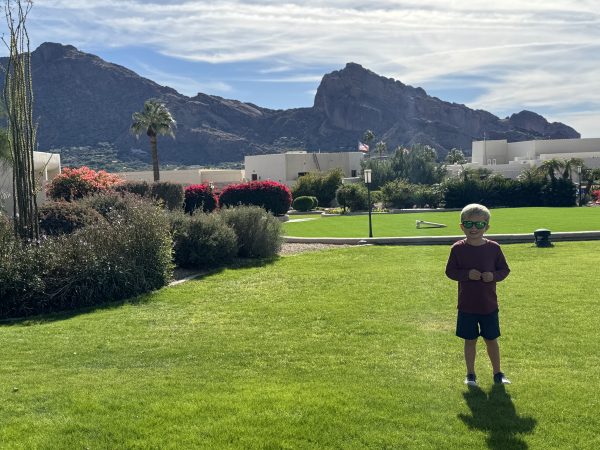
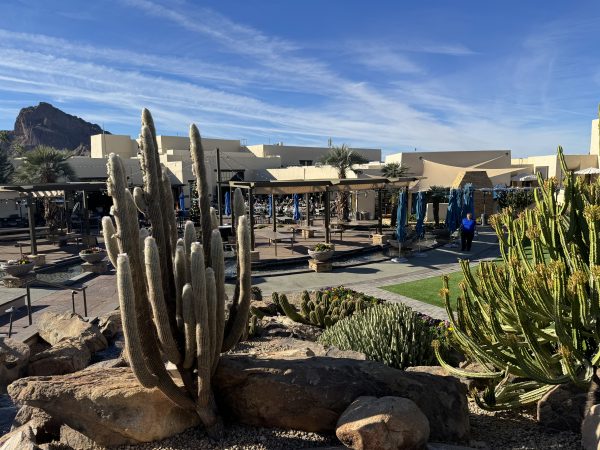
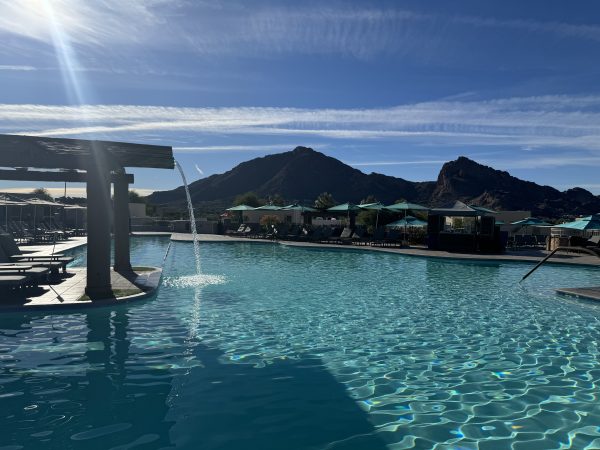
The Camelback Golf Courses, Ambiente, and Padre, are not on site, but the resort provides you with a free shuttle service for your tee time. The ride is only about five minutes and they start at 7:00 am.
The clubhouse is large with a spacious golf shop. The Camelback logo, while a bit cartoony, is pretty fantastic in a 1960s Bob Hope Classic kind of way.

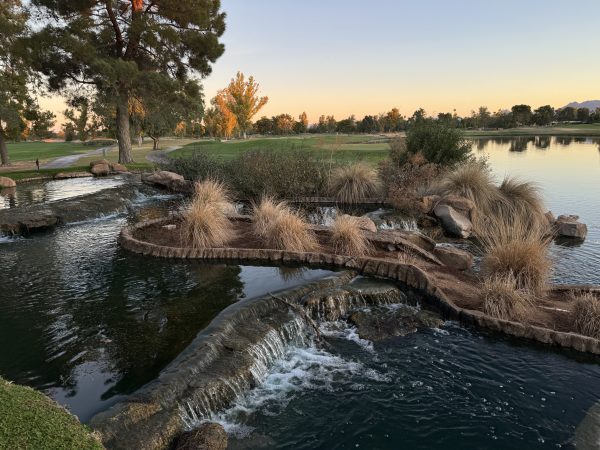

I played the Ambiente course, which I was told has a bit more character than the Padre. Ambiente goes straight out for 3 miles, following along a gulch on your right the whole way, and then turns around and comes right back to the clubhouse for the back nine. If you are walking, make sure you’re in it for an entire 18-hole round. There’s no stopping after nine if you are on foot and three miles away from the clubhouse.
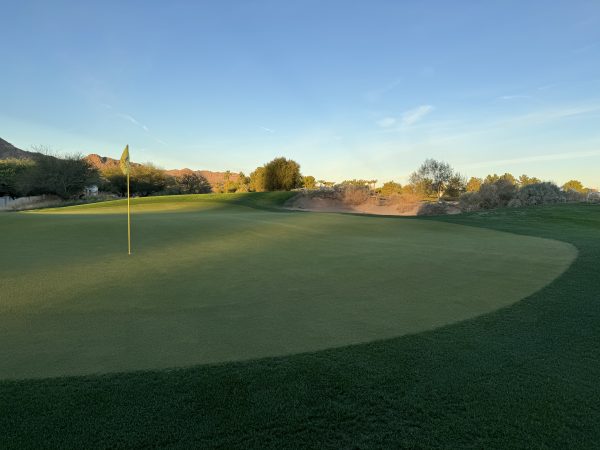
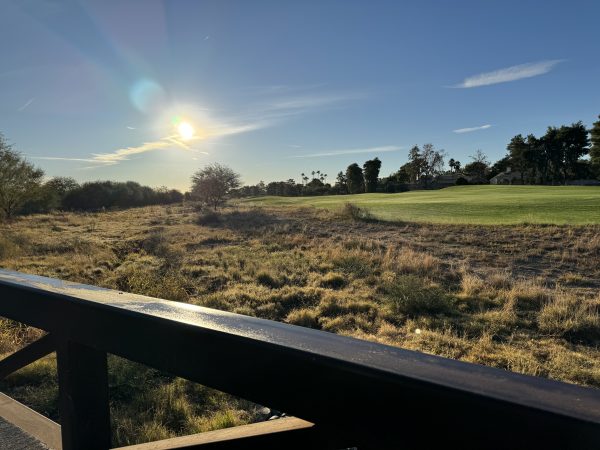
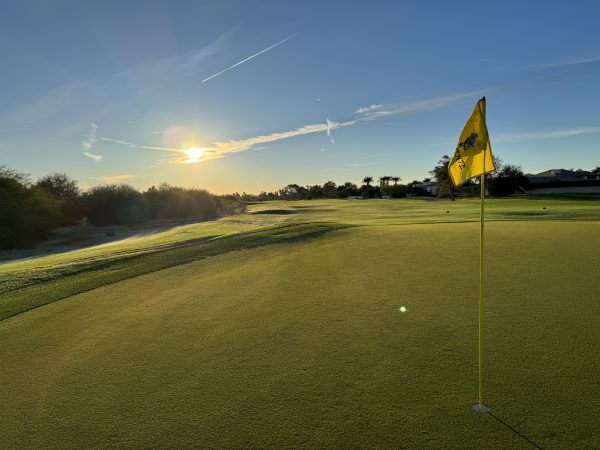
These courses are more parkland than desert. That’s especially true of the Padre course. But even Ambiente, which translates to ‘environment,’ is not very ‘deserty’ in comparison to Troon North or Boulders. There are a lot more grassy rough areas off the fairway and very little cactus. The gulch, which is seen on nearly every hole, feels more native and marshy than anything I saw in my previous rounds. It’s a gorgeous course, but not what you imagine when you think of Scottsdale golf.
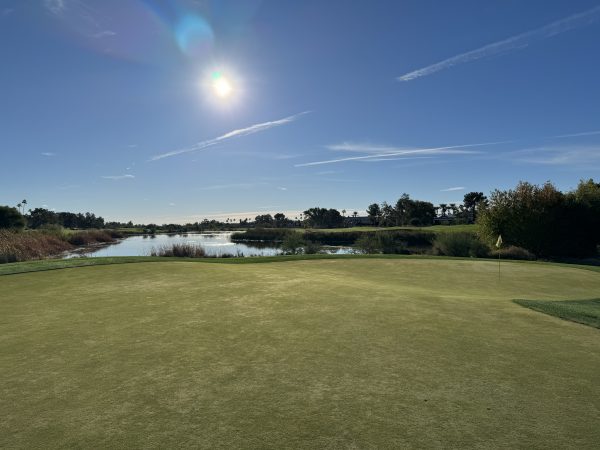

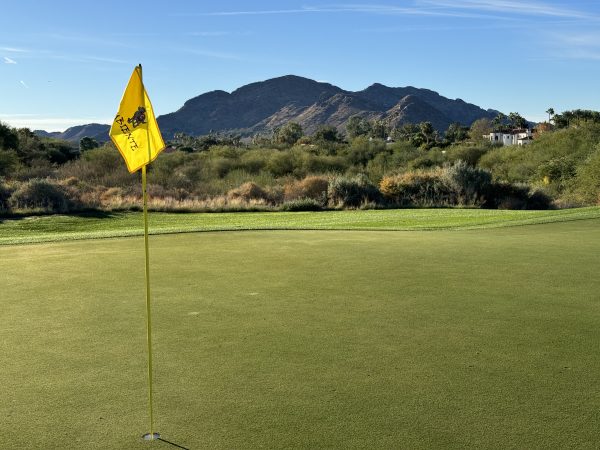
The course itself, with its unique straight-out, straight-back routing, lengthens out to 7,225 yards from the tips and 5,538 from the forward tees. The par 72 Jason Straka design is not an easy course. Many of the holes require precision tee shots and a bit of course knowledge doesn’t hurt as the driver is not always proper. The par threes play long, with the shortest being 185 from the back tees. The 8th hole can stretch back to 241 yards and then number 15 goes even longer to 245. Of course, you don’t have to hit back there unless you’re a glutton for punishment.
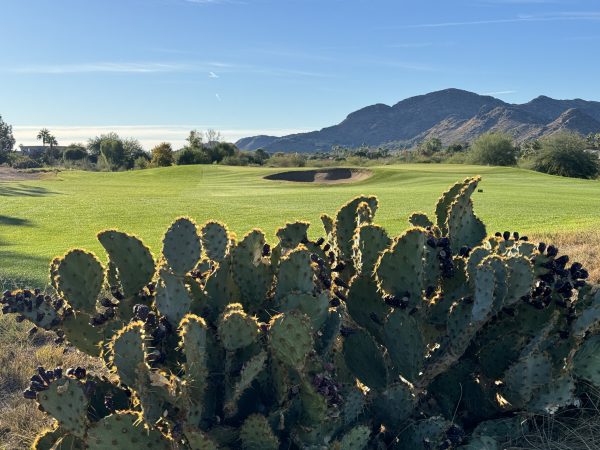
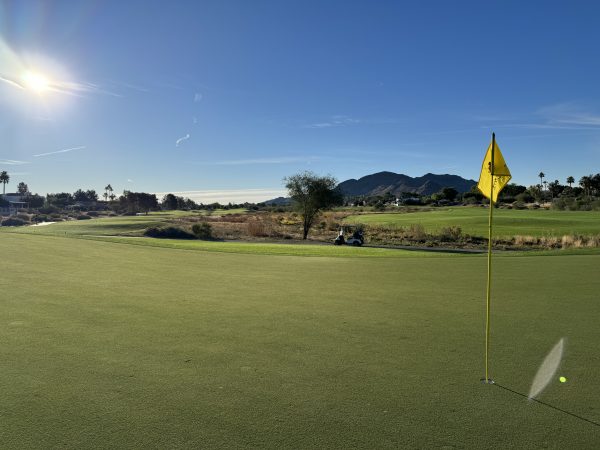

The bunkering is deep in certain areas, which you realize as early as the greenside on the first hole. Playing this course after the other desert layouts I have played made me wonder if this is the true ‘nature’ of the area and perhaps the other desert courses are a bit more…manufactured. Ambiente feels native. I think I enjoy the other desert style aesthetics of the other courses more, but from a pure golf perspective, Ambiente at Camelback is a real deal course.
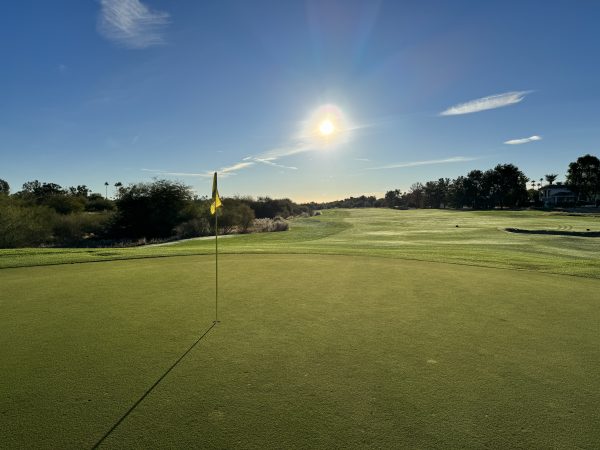

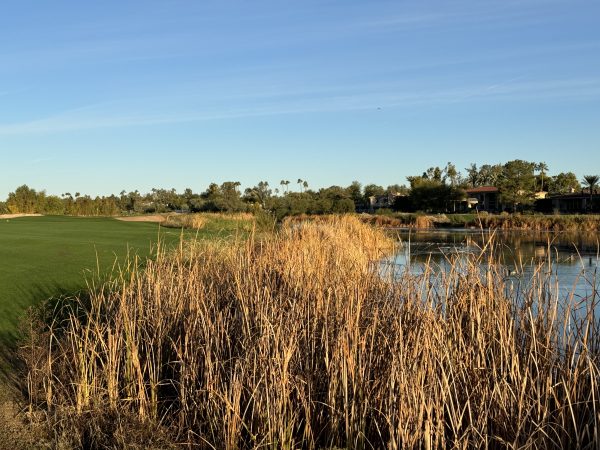
SCOTTSDALE LIFE
The beauty of Scottsdale as a golf destination is that no matter which courses or resorts you decide to enjoy, you are still always within 30 minutes of a fantastic city center, with great shops and world-class restaurants. Old Town is only one little pocket of what Scottsdale has to offer, but because of the neat stores for our kiddo and walkability, we spent most of our time away from the resort here.
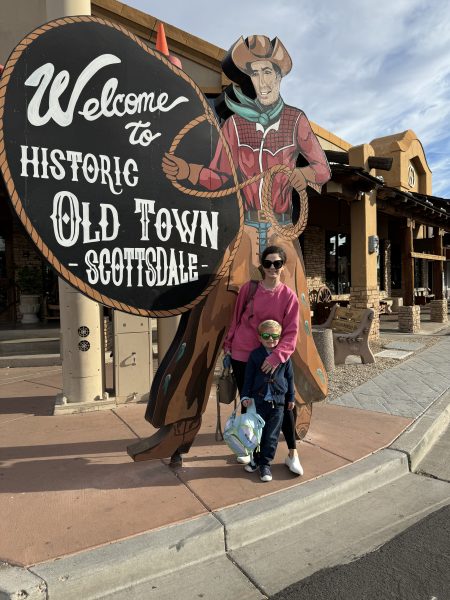
Like any great city, anyone who has visited will be able to give you a list of their favorite places to play, shop, and eat. For us, we loved going to Popstroke, the Tiger Woods-designed miniature golf course, as well as Mavrix for bowling and laser tag. When you’ve got a five-year-old, you do what makes him happy too. We also went to Isabella’s Kitchen for lunch on one of our days, which overlooks the McDowell Mountains and Grayhawk Golf Course. The food is always delicious and it’s a really fun location for the kiddo to run around while mom and dad can have a margarita.
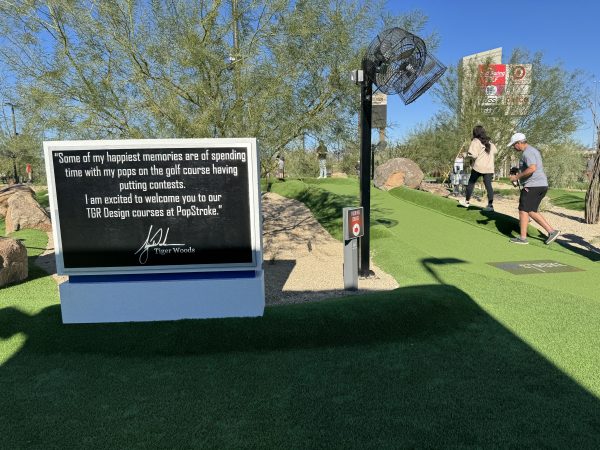

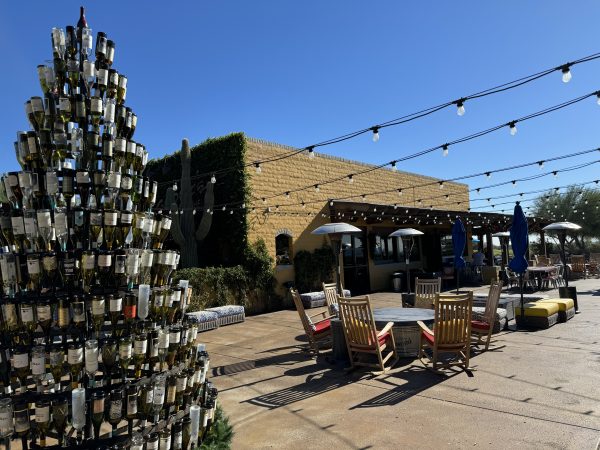
We went to The Montauk in Old Town for our only dinner outside of the resort and it did not disappoint. It’s a really neat atmosphere and the menu was a mix between The Hamptons and Southwest tastings. They had live music and friendly staff. It doesn’t get much better.
And if you find yourself out and about for breakfast, you need to stop in at the Daily Dose for some Cinamon Roll Pancakes or Breakfast Nachos. We made a quick stop here on our way to the airport and didn’t need to eat for the rest of the day!
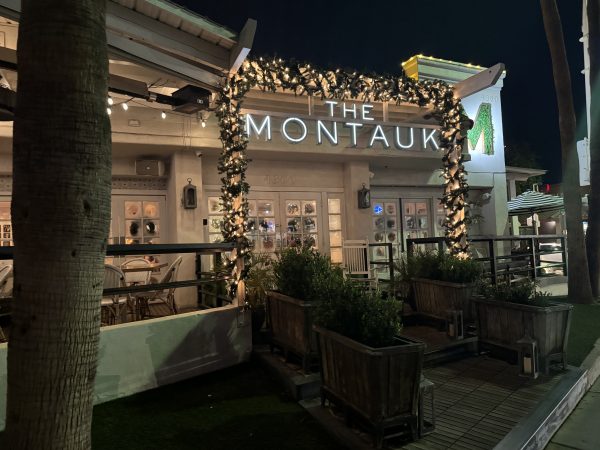
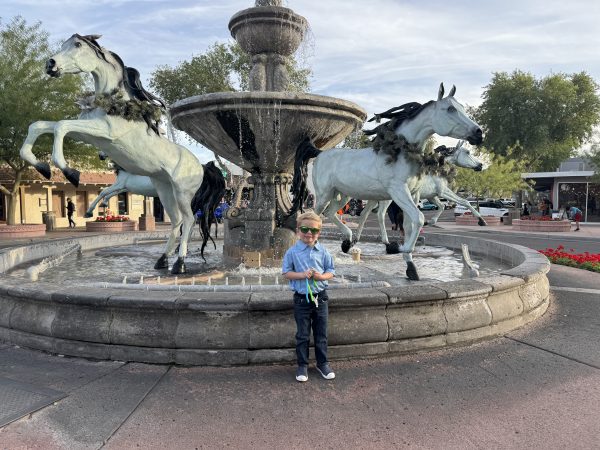
Having been traveling for golf for some time now, people always ask my opinion on my favorite courses or favorite city to go to for a golf trip. My answer always starts with “It depends on who you are going with…”
If you are heading out for a golf trip with your family, I don’t think you can pick a better city than Scottsdale. The travel itself (airport, rental car, etc..) is always a breeze. The resort options (and spas) are plentiful and offer a variety of different setups for couples or kid-friendly atmospheres. And there are hundreds of golf courses to choose from. All the while, Scottsdale has one of the best restaurant and entertainment scenes in the United States.
I’m sure I will keep getting the question. But if you are thinking of a golf trip with the family, the answer is Scottsdale.
If you want help planning your next golf experience or just have any questions about some of mine, reach out to me on Twitter or Instagram and shoot me a message. And feel free to check out my other golf experience articles. I look forward to hearing from you!
- LIKE145
- LEGIT50
- WOW5
- LOL2
- IDHT0
- FLOP3
- OB1
- SHANK5
Courses
The Jamaica Golf Experience
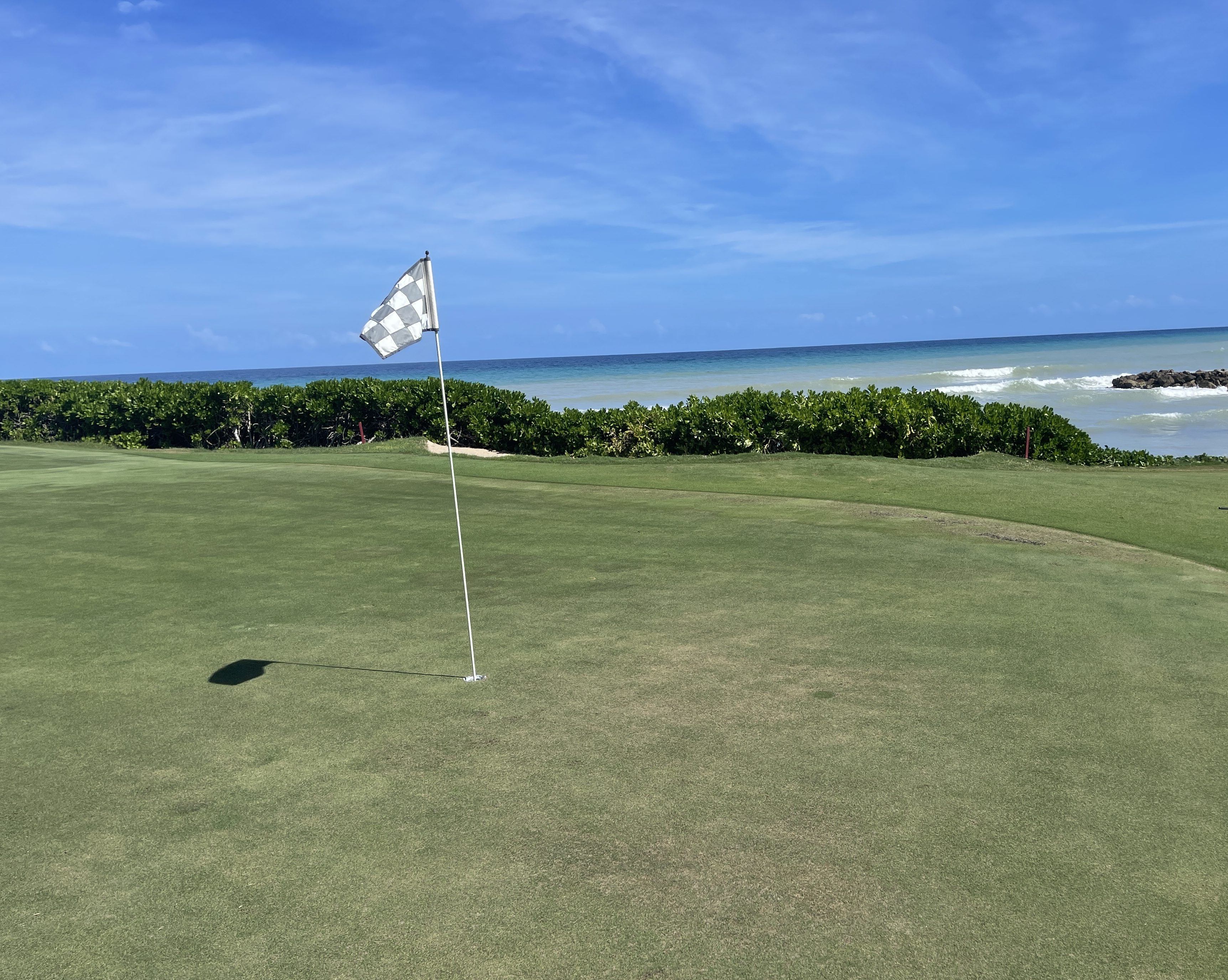
I love Jamaica. I have been to the island for several trips with my family and the feeling I get every time I think about a next visit is always exciting. On past trips, I have made Jamaican friends that I will remember for the rest of my life. The people there are so happy and good. One Love. The “no problem ‘mon'” culture just becomes a part of you when you’re there, creating a special atmosphere that lets you escape it all. I keep Red Stripe beer in my fridge at home in Fort Worth, Texas, all year — a reminder of the island I love with every sip. So when I received an invitation to play in The Jamaica Pro-Am, I was quick to accept.
The Jamaica Pro-Am (aka Annie’s Revenge — more on that later) is an annual tournament held each year in Montego Bay, Jamaica. Four-man teams constructed of three amateurs and one PGA Professional, the tournament is typically played on three of Jamaica’s finest golf courses — Half Moon, Cinnamon Hill, and White Witch. I attended this year’s tournament as a playing observer, confined to the “media team” and partaking in the festivities. Ya’mon.
The tournament field gets to stay at the beautiful Iberostar Grand Rose Hotel, conveniently located near all three courses and more importantly, right on the beach. The hotel is indeed grand and all-inclusive, providing guests with a wristband that gets you whatever you’d like to eat or drink from any of the onsite bars and restaurants — no questions asked. Less than 30 minutes from the airport, if Montego Bay is your desired city for your next Jamaican vacation, I’d imagine this hotel is tough to beat.



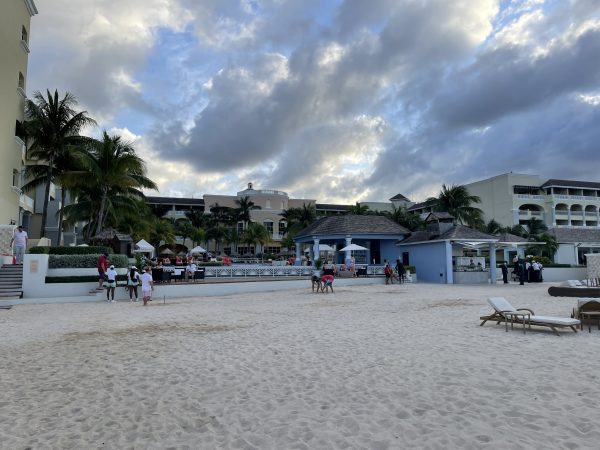

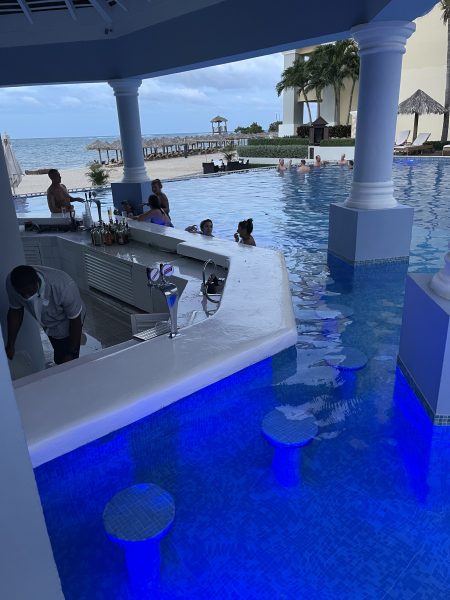
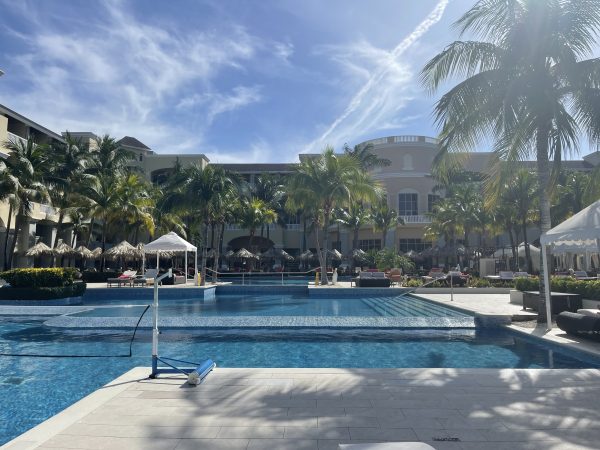
The first night of the tournament is the welcome dinner and reception on the beach. A full Jamaican buffet complete with jerk chicken and pork, beef patties, fried plantains, rice and peas, and cabbage. A true taste of the Caribbean, accompanied of course with whatever rum drink your heart desires. Appleton is the island favorite, and it mixes well with pretty much everything when you’re toes are in the sand. There was a live reggae band playing the Bob Marley songs everyone knows.
While the festivities were for the tournament participants, there was still plenty of activity and vibe for the other hotel guests. This is Jamaica. There was music and fun all around the hotel every moment of this trip. No worries, everything is irie. I have a real love for the island. The people are kind, the food is fantastic, and the waters are the finest in the world.
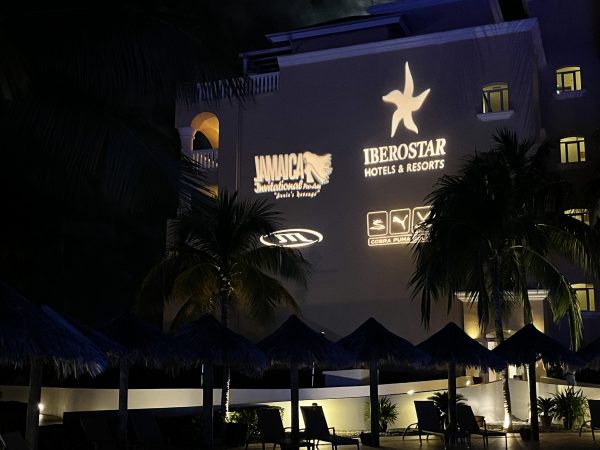
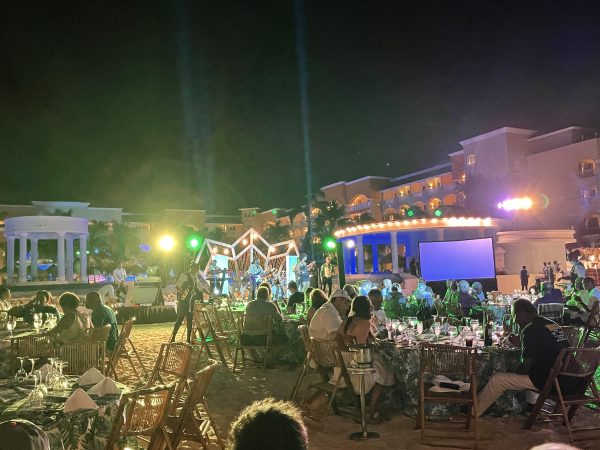
Day One: Half Moon Golf Club
Quite understandably, Jamaica has been hit hard by COVID-19, with tourism taking a substantial dip in the past year and a half. The golf has seen a dip in numbers as a result, but the courses are in gorgeous shape with foot and cart traffic just now picking back up.
Half Moon was designed by Robert Trent Jones, Sr. and it opened in 1962. The course rests between the Blue Mountains and the sea, playing a mostly flat 7,120 yards from the back tees. Half Moon does offer several tee box options and could be played as short as 5,032 yards, making it a pleasant resort course, should that be your speed.
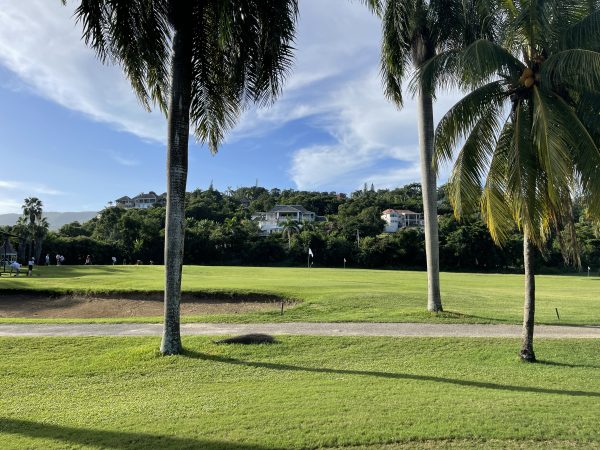
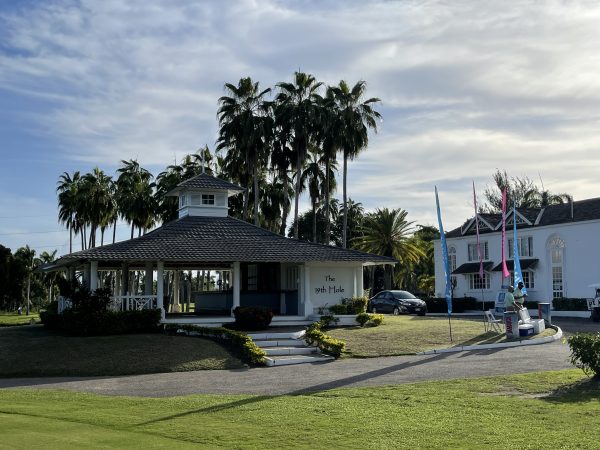
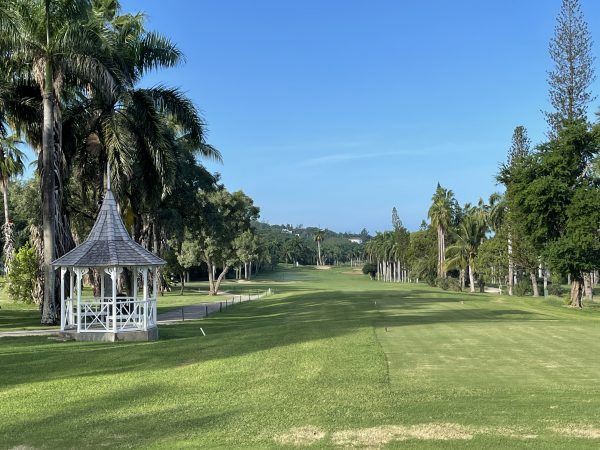
The course is beautiful and very well maintained. The greens were a bit shaggy, but luscious, playing at a slower pace than I am used to. I am not sure if that is by design or a side effect of the pandemic, as I do know the Jamaican golf courses have been short-staffed and without the usual supplies this past season. That appears to be a thing of the past, however, as the course looks to have turned a corner.
Most fairways are lined by palm trees, adding something to avoid off the tee, but there is enough space between each trunk to give you a full swing if you do miss left or right. The coconuts that drop, luckily, are loose impediments.
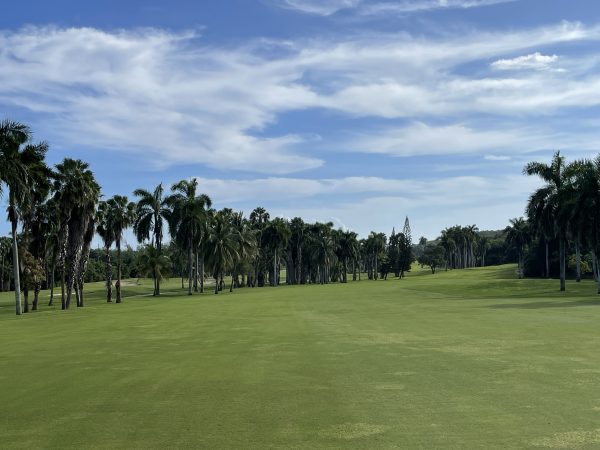
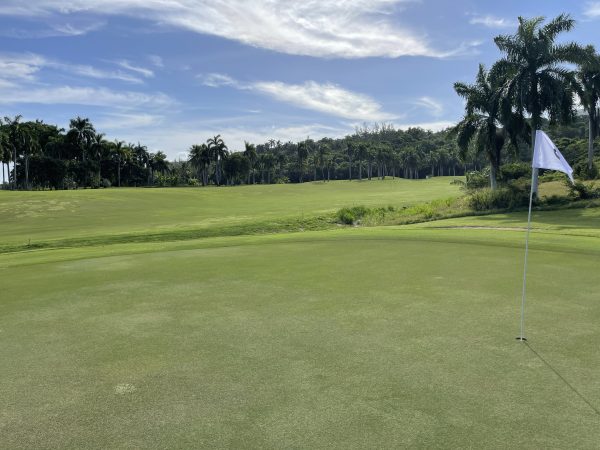
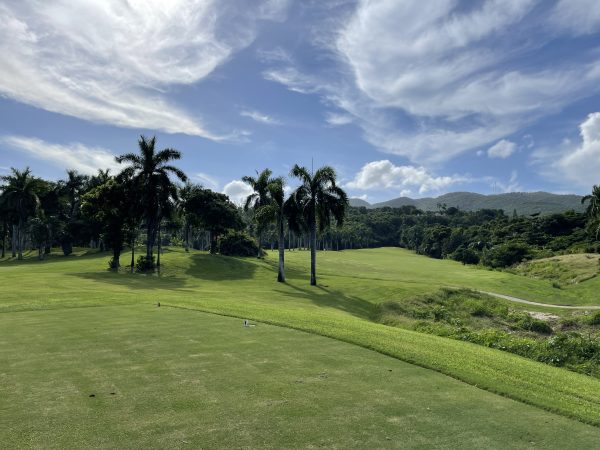
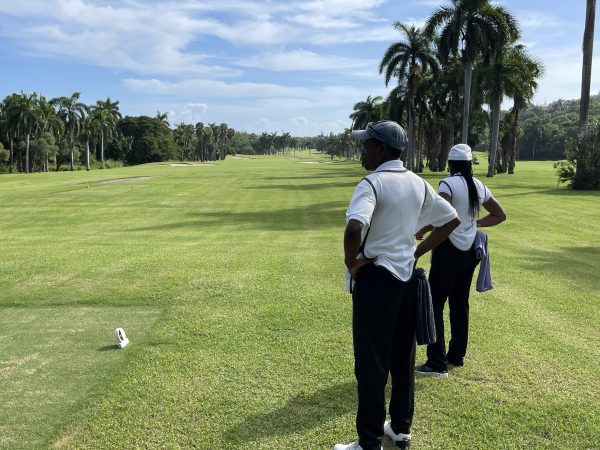
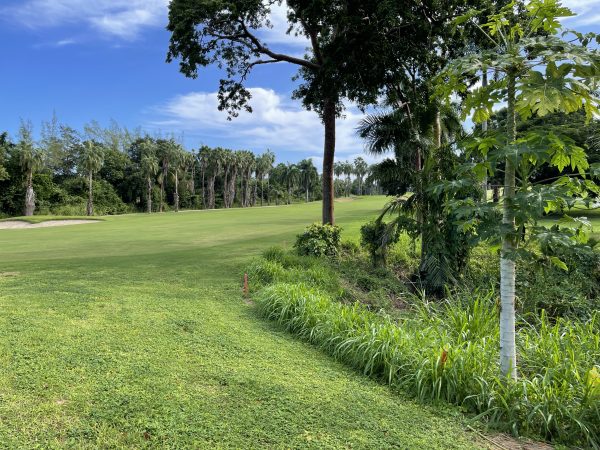
Half Moon is a resort course through and through. There are elements of character and excitement, but it mostly just provides a beautiful and benign setting for fun island golf. The fairways are dressed with multiple well-placed bunkers which provide the only designed protection against low scores. The driver could be used on virtually every non-par 3, but the course is better suited to be thought around and played to avoid the sand.
Built on a retired sugar cane estate, the other real hazard (water doesn’t come into play much at all) is the coastal winds that pick up mid-morning each day. With little besides the coconut trees to protect your ball from gusts, the wind becomes a real challenge on this bow-tie routed design. Holes into the wind were a beast, and when we finally turned with the wind at our back, it was time for a Red Stripe and a sigh of relief.

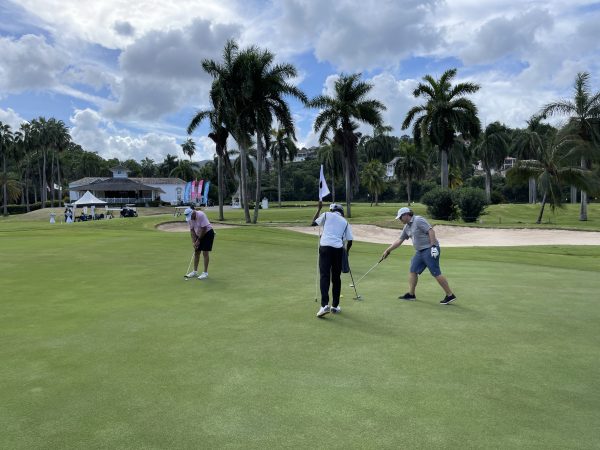

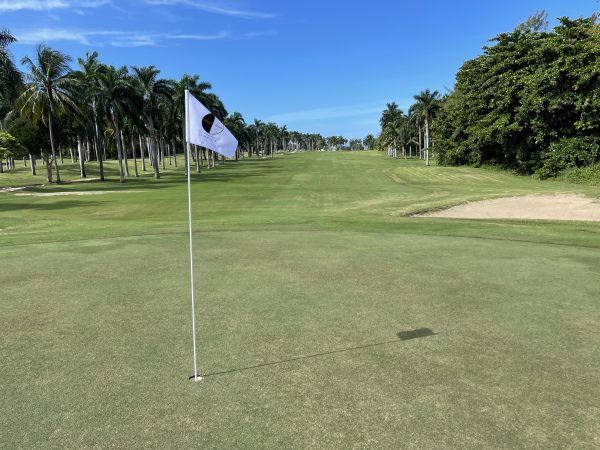
Those winds are a big reason why this tournament is called “Annie’s Revenge.” Named after Annie Palmer, the White Witch of Rose Hall, the namesake is one of Jamaica’s most famous local legends. Rose Hall’s Great House, just down the road towards Cinnamon Hill Golf Course, was home to Palmer, a Haitian-born white woman who grew up studying voodoo and witchcraft. Thus the nickname, the White Witch. She moved to Jamaica when she married John Palmer, the owner of Rose Hall, and unfortunately, her practice of dark magic proved too powerful for those around her. Legend tells she murdered her husband (and two more after that) along with many of her slaves. She herself was eventually killed, but to this day, the locals claim to have witnessed Palmer’s ghost riding her horse around the Jamaican plantations.
The strong coastal winds are Annie’s Revenge on any golfer trying to enjoy the land she once owned. They got the best of me a time or two.
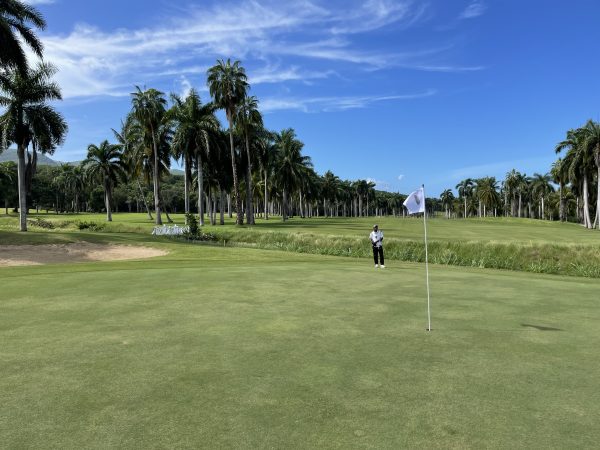
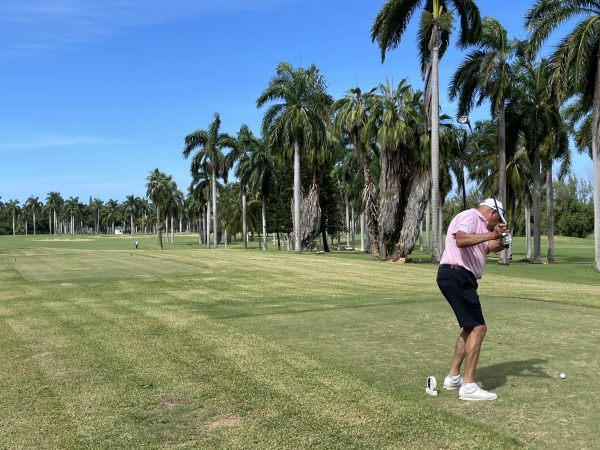
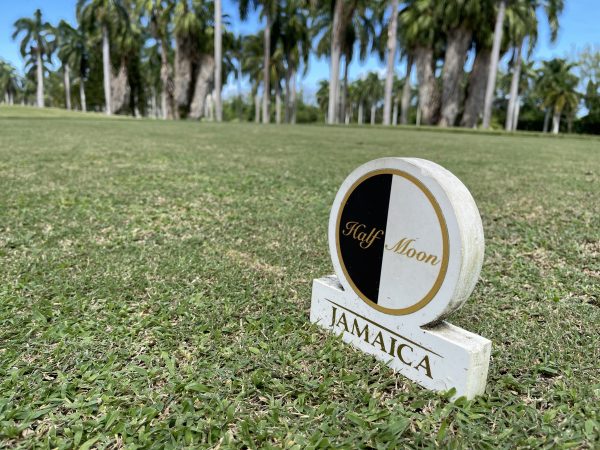
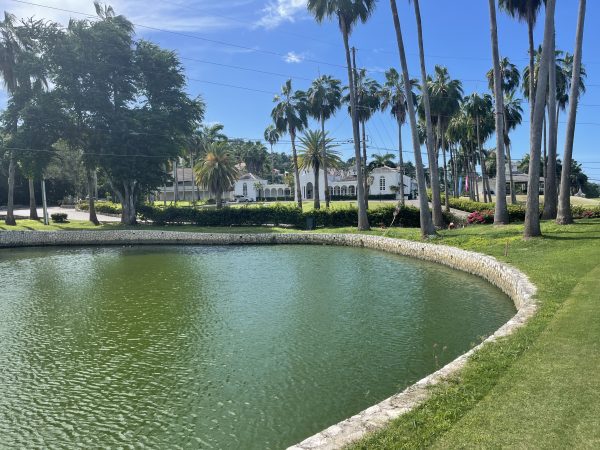
Days Two and Three: Cinnamon Hill
Both Cinnamon Hill and White Witch Golf Course are members of the Rose Hall family. Typically, in the “Annie’s Revenge” tournament format, the courses are played once each in the three-day event. However, White Witch is currently closed due to the COVID-19 pandemic. Its owners made the financial decision to proceed through these tough times with only one course due to the limited play and the costs of upkeep. While disappointed to not play White Witch, playing Cinnamon Hill twice instead more than satisfied my appetite for Jamaican golf. This is my favorite course on the island.
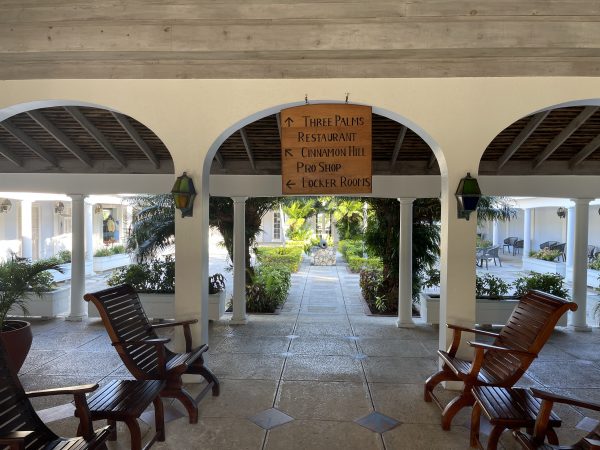
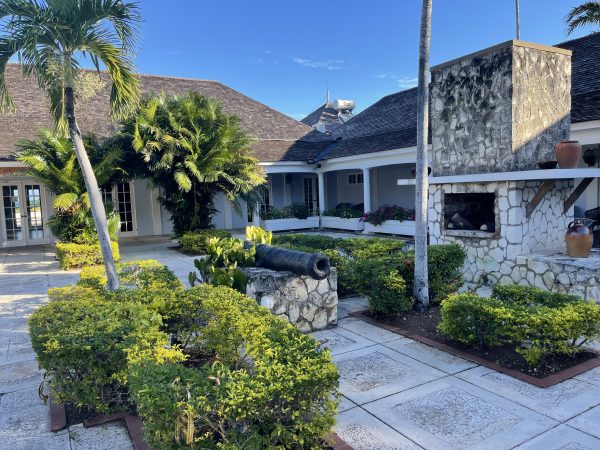
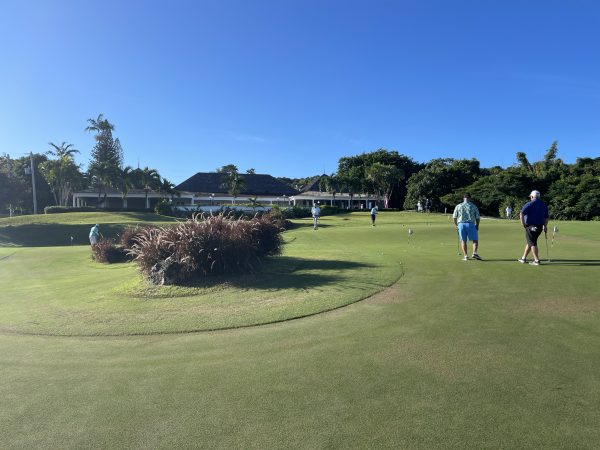
Cinnamon Hill was designed by Rick Baril and opened in 1969. It was later renovated and redesigned by Robert von Hagge. The greens here were much quicker than those at Half Moon, which I certainly appreciated. The two nines of Cinnamon Hill play in complementing contrast to one another, with the front providing low coastal play while the back nine rises into the tropical Blue Mountains.
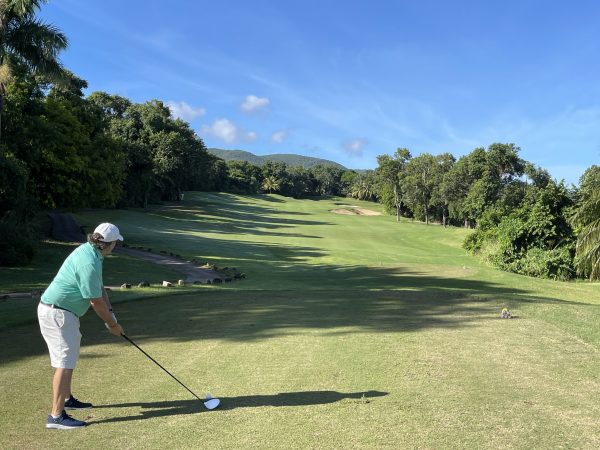
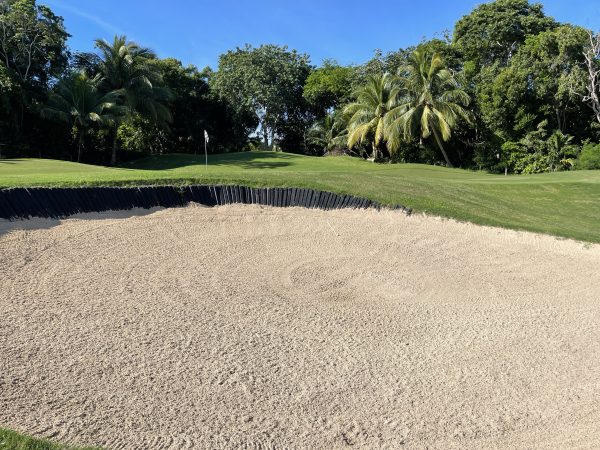
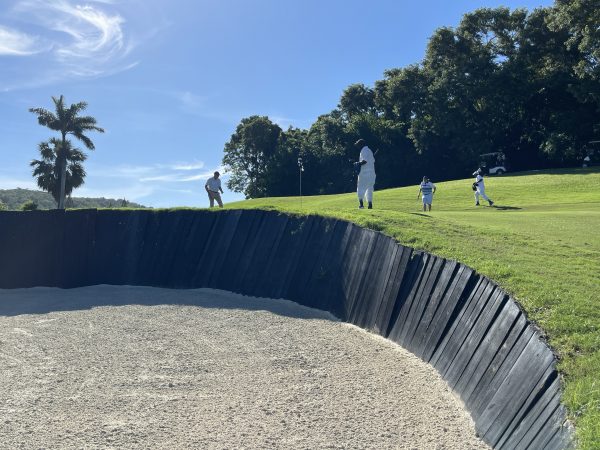
Tipping out at 6,828 yards, the front nine marches and builds towards the ocean, with two phenomenal holes hugging the coastline. This is unusual for Jamaica, as most of the shore is saved for sandy beaches and rum-flavored sips under thatch umbrellas.
I played Cinnamon Hill with my cart partner, Jason Deegan of GolfPass.com. Our hosts for our rounds at Rose Hall were Keith Stein, the Director of Golf Course Operations for both Cinnamon Hill and White Witch, and Donnie Dawson, the Deputy Director of Tourism for the Jamaica Tourist Board.
Keith is a very good golfer with a smooth swing. He is originally from Toronto but has lived in Jamaica for 30 years. Donnie is a world-class storyteller who grew up in Kingston and has been playing these courses his entire life. It was a real treat to be able to play the course with both fine gentlemen, see how they play each hole, and hear their tales. The best story came on hole four, a 170-yard par 3 over marshy ponds.

Donnie Dawson and one of his stories
As we approached the fourth tee box, Donnie pointed out a concrete wall just behind the markers and informed us that a cemetery lay just beyond. Peering over, we could see the gravestones in this centuries-old burial plot for the family of English poet Elizabeth Barrett Browning. The grass is grown tall because the golf course staff, local Jamaicans, refuse to go inside.
Donnie told us 20 or so years ago, he was playing this course with a caddie named “Teeth,” a moniker he was given based on the looper’s colored and decorated top front teeth. As they approached the fourth tee box, a man was sitting on the concrete wall bordering the cemetery. He tossed Donnie a ball and said “hit this one, mon.” Donnie complied and the three men watched the shot bounce twice and roll directly into the cup. A hole-in-one with accompanied celebration. When they reached the green, Donnie and Teeth looked into the cup to retrieve the ball, and, to their surprise, it had vanished. Disappeared from the hole. They looked to the tee box and the kind stranger on the wall was gone as well. Perhaps a ghost from the ancient graves. Donnie said Teeth, a believer in local legend, took off running and didn’t stop for three miles.
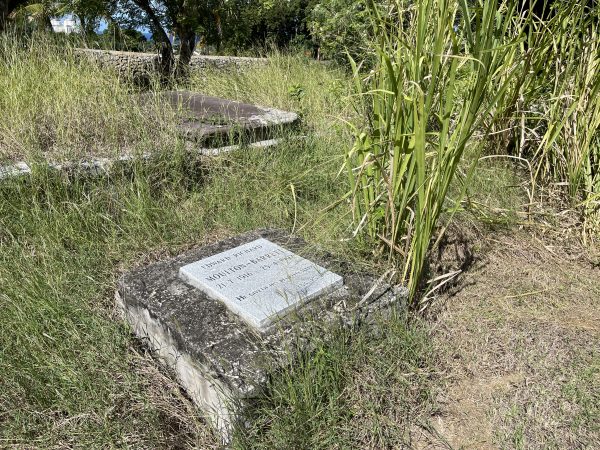
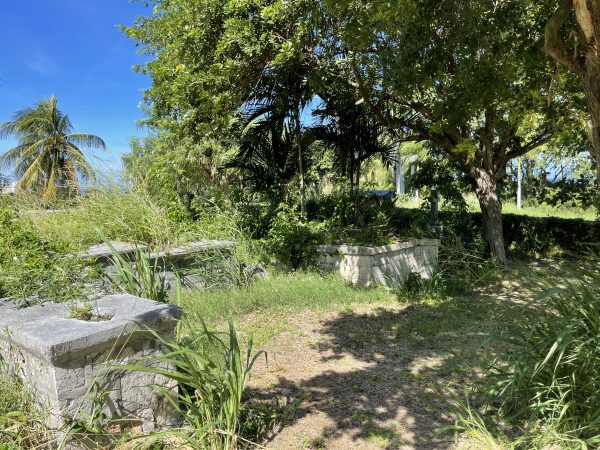
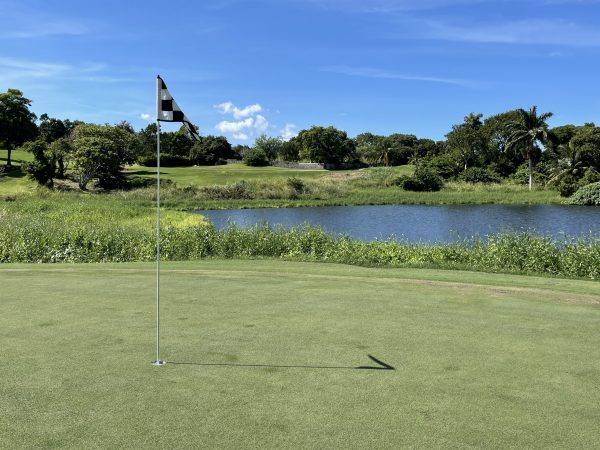
Hole Four Green, site of the vanishing ball
Holes five and six provide tremendous views right along the quietly crashing waves. The par-3 sixth hole, arguably the prettiest hole on the island, is a 178-yard carry over the Caribbean with bailout room to the left. Just a gorgeous hole that I would have been happy to play all day. Cinnamon Hill does not waste their par 3s.
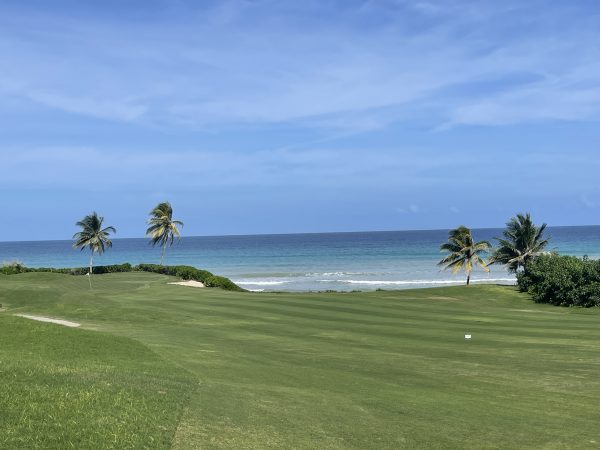
Hole five fairway
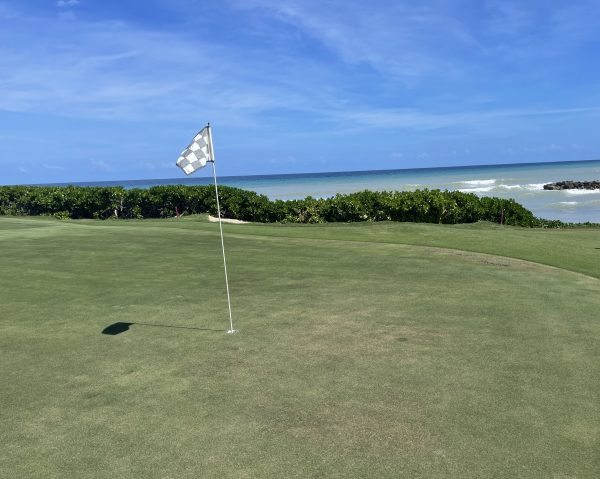
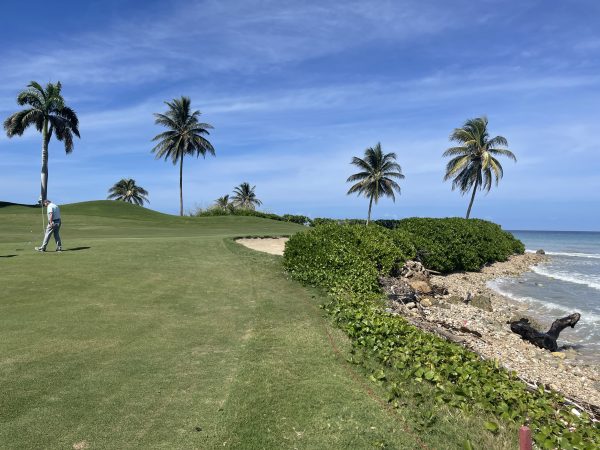
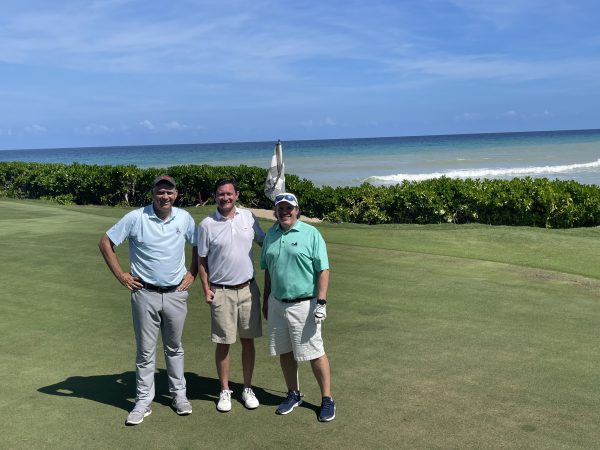
Keith Stein, yours truly and Jason Deegan
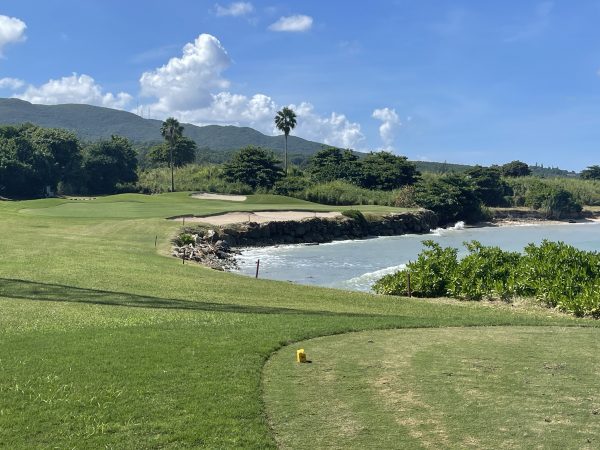
Par three sixth hole
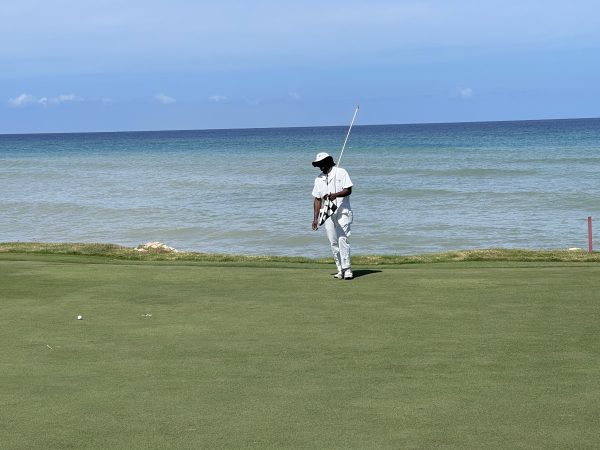
The course is also home to an ancient aqueduct that winds through both the front and back nine. The now-ruins provide an interesting backdrop to island golf, whereas they used to be a working part of the sugar cane plantation and used to grind and transport one of Jamaica’s top export products for commerce.
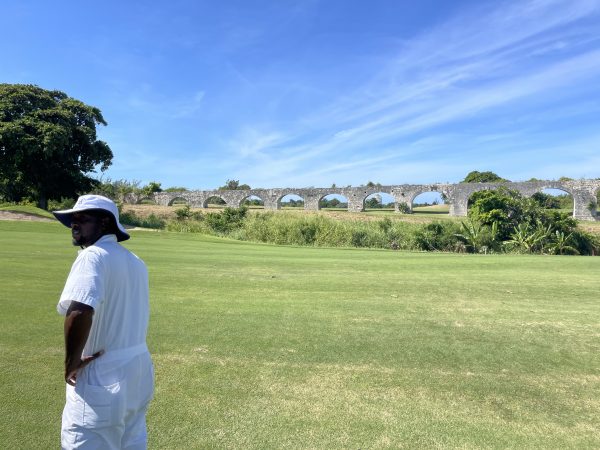

The back nine brings you up the mountains, with the 17th tee box sitting nearly 400 feet above sea level. What that provides, obviously, is wonderful views of the ocean through and over jungle leaves, along with challenging golf shots. On the fairway of the 14th hole sits one of the few homes on course, but one has some historical value: The Cinnamon Hill Great House was the second home of Johnny Cash and June Carter Cash for 30 years.
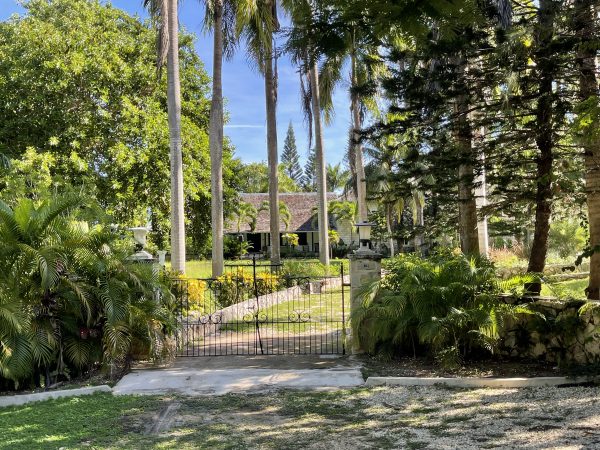
Cinnamon Hill Great House
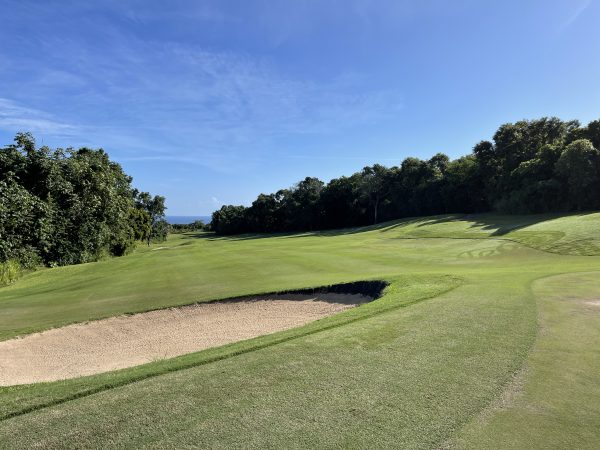
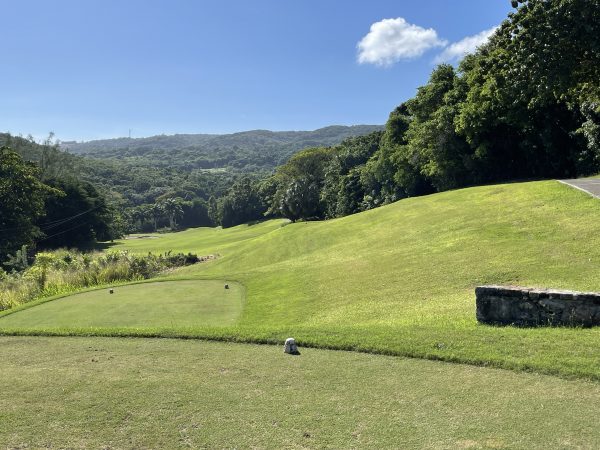
The 15th hole is another tremendous par 3 measuring 220 yards from the back but playing much shorter straight down the hill to a large green nestled beneath a waterfall. The waterfall, in case it looks familiar, was the backdrop of a famous scene in “Live and Let Die” — one of the best James Bond films ever made. Ian Fleming, the author of the Bond series, lived and wrote many of the books here on the island at Golden Eye.
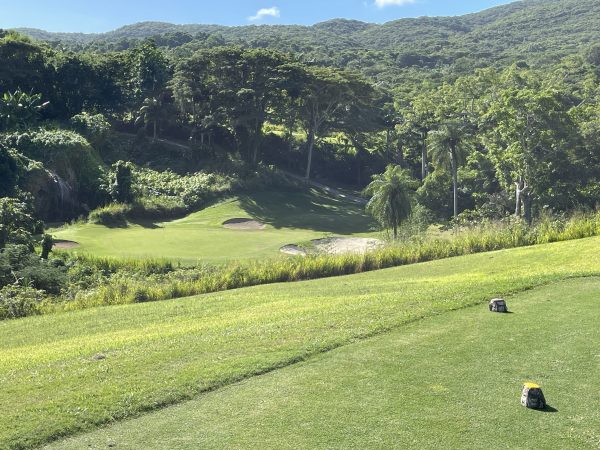
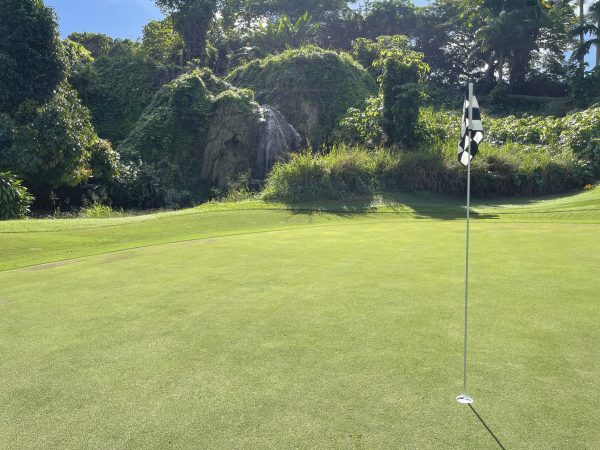
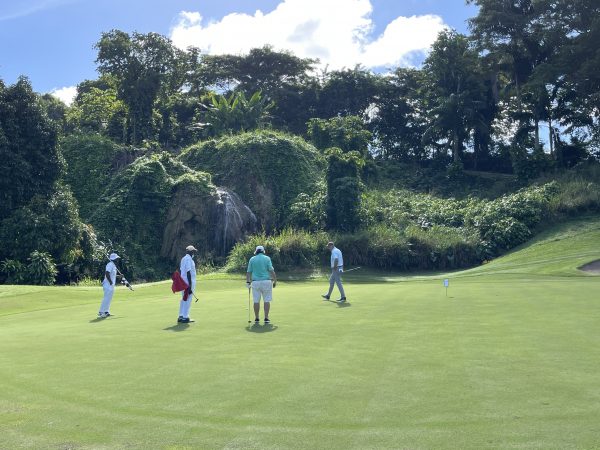
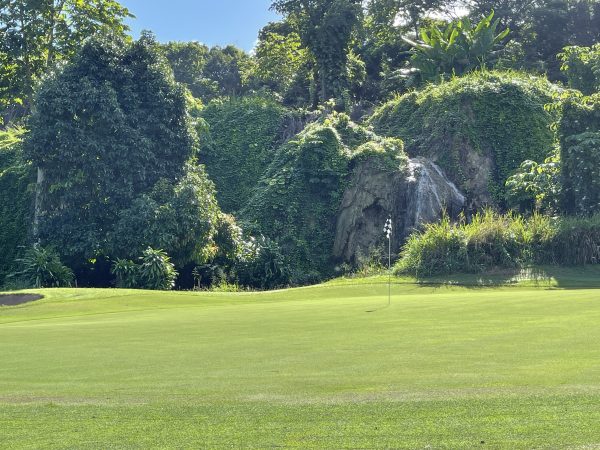
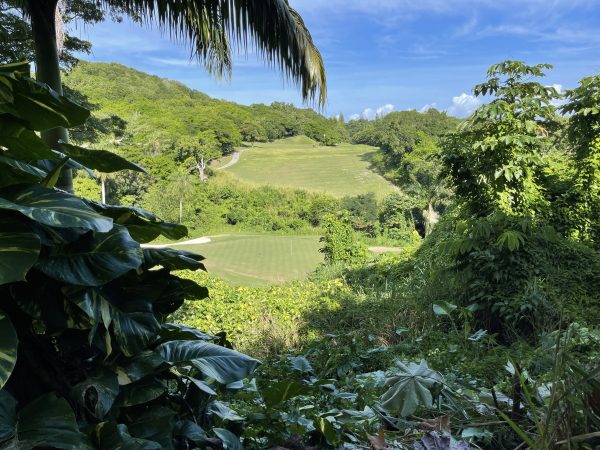
Cinnamon Hill takes the driver out of your hand on many holes, forcing you to find the right club on every tee shot. You need to be prepared to hit mid-irons off some par fours as angles are often more important than distance. And with the undulating back nine, distances are sometimes deceiving. Cheers to my caddie for keeping the right club in my hand all trip.
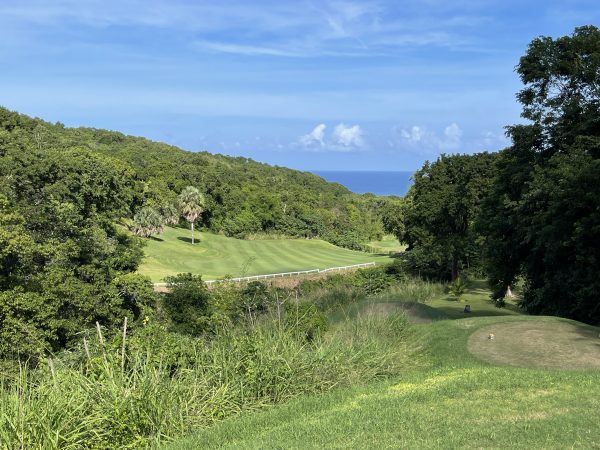
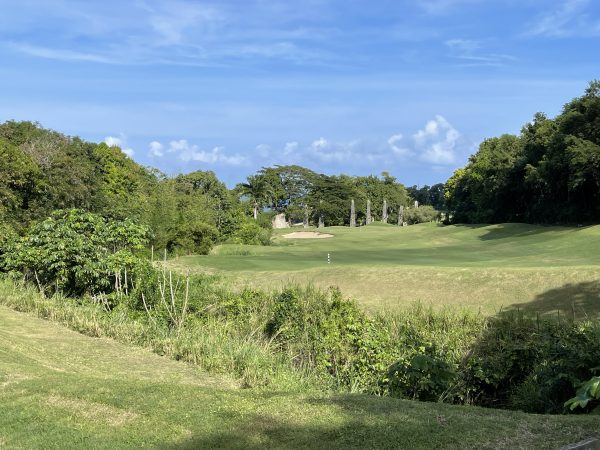
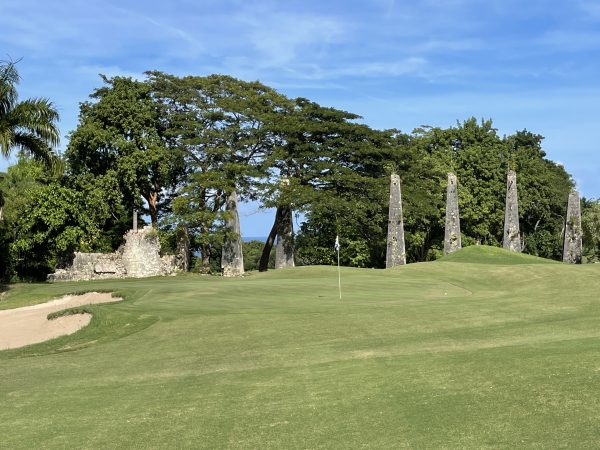
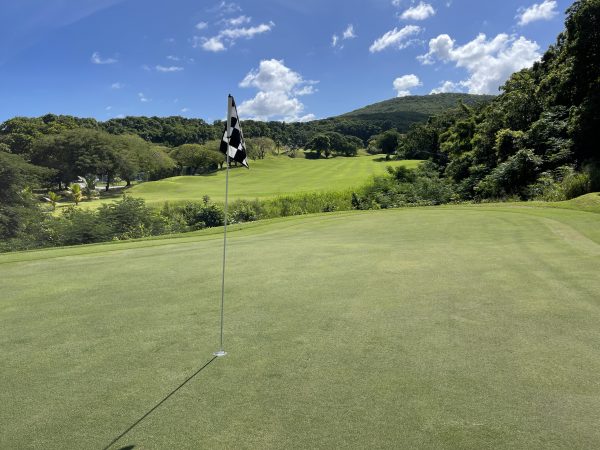
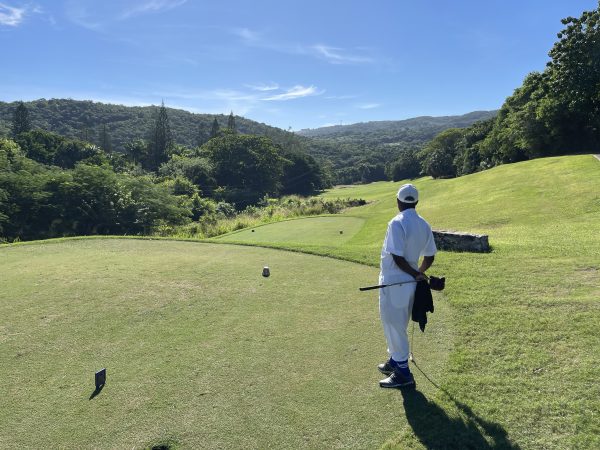
Back to the hotel for the final ceremony and last sleep on the island. The Jamaica Pro-Am is open to anyone willing to pay the entry fee, but if you come to Jamaica for just a family vacation, don’t forget about the golf. Most travelers to Jamaica come for the beaches and the island lifestyle, and they aren’t wrong to do so. But next time you visit, I suggest you bring your clubs, mon.
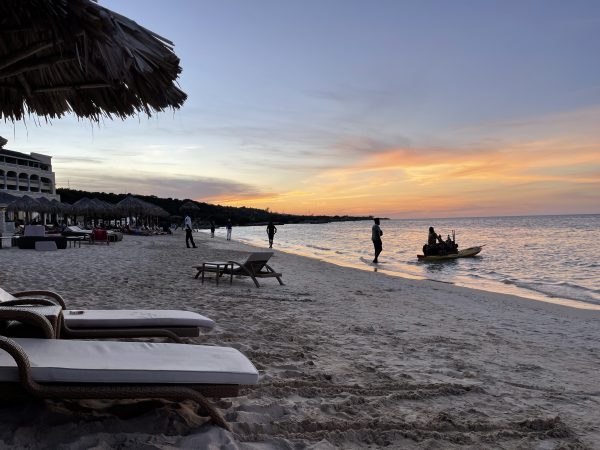
- LIKE75
- LEGIT41
- WOW15
- LOL0
- IDHT0
- FLOP0
- OB0
- SHANK1
-

 19th Hole1 week ago
19th Hole1 week agoJustin Thomas on the equipment choice of Scottie Scheffler that he thinks is ‘weird’
-

 19th Hole1 week ago
19th Hole1 week ago‘Absolutely crazy’ – Major champ lays into Patrick Cantlay over his decision on final hole of RBC Heritage
-

 19th Hole2 weeks ago
19th Hole2 weeks agoTwo star names reportedly blanked Jon Rahm all week at the Masters
-

 19th Hole2 weeks ago
19th Hole2 weeks agoReport: LIV Golf identifies latest star name they hope to sign to breakaway tour
-

 19th Hole2 weeks ago
19th Hole2 weeks agoNeal Shipley presser ends in awkward fashion after reporter claims Tiger handed him note on 8th fairway
-

 19th Hole2 weeks ago
19th Hole2 weeks agoBrandel Chamblee has ‘no doubt’ who started the McIlroy/LIV rumor and why
-

 Equipment3 weeks ago
Equipment3 weeks agoWhat we know about Bryson DeChambeau’s 3D-printed Avoda irons
-

 19th Hole5 days ago
19th Hole5 days agoLET pro gives detailed financial breakdown of first week on tour…and the net result may shock you





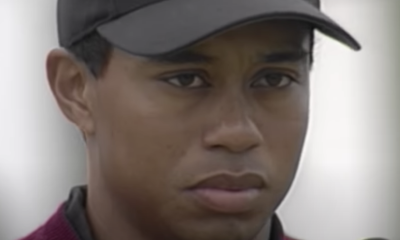


















Pingback: Boulders, Troon North, and Camelback – GolfWRX – ????? ????? – Zawaj
Pingback: The Scottsdale Experience, Part II: Boulders, Troon North, and Camelback - Fly Pin High
Pingback: The Scottsdale Experience Part II: Boulders, Troon North, & Camelback – GolfWRX
Jason
Feb 12, 2020 at 6:15 pm
Johnny – I was in Scottsdale and what better reference guide than this? I only had time for one round and since the grandstands would still be up, I chose TPC Scottsdale. What a fun day – there’s really something special about 16 and you’re right – it was worth the price of admission. You could sense it. And you’re right – 15-18 was an amazing way to close the day.
Thanks for great articles and the recommendations!
LINDY
Dec 14, 2019 at 6:24 pm
The best golf in AZ is Wickenburg Ranch & Golf Club. Saguaro is fantastic (my only issue is that it’s designed to be a walking course and their isn’t a walking rate, if you charge me for the cart, I’m taking the cart)…
Quintero isn’t that great (for me), but I would say that Phoenix metro top courses (available to all):
1. Wickenburg Ranch Golf & Social Club (if you consider Quintero in metro, than this is worth the 25-30 minutes more to get to it) – (TROON)
2. WeKoPa Sagauro Course
3. TPC Champions Course (yes, this is more fun and ever bit as good as Stadium)
4. Southern Dunes (TROON)
5. Golf Club of Estrella (TROON)
LINDY
Dec 14, 2019 at 6:18 pm
Can’t believe you didn’t have the short ribs at Toro – next time you need to make sure you ask some of us golfWRXer’s that live locally about what to order before you go. And btw – this is the ONLY time of the year to play Stadium. Champions is better year around. TPC Stadium outside of 2 months prior and ~1 month after the WMO is simply not worth the money or the hype.
Johnny Newbern
Dec 16, 2019 at 1:50 pm
Great comments, @LINDY. I need to reach out before my next trip! Thanks so much for reading. I will be headed back for those short ribs!!!
Jimmy
Dec 13, 2019 at 8:15 pm
So many good golf courses stuck in the middle of a sea of a**holes and trust fund brats. It isn’t called Snotsdale for nothing.
Troy
Dec 14, 2019 at 4:02 pm
Wow, why all the hate, envy and jealousy. Life’s to short to be that bitter and angry.
LINDY
Dec 14, 2019 at 6:19 pm
Very true 🙂
Patrick
Dec 13, 2019 at 2:52 pm
Downtown Scottsdale is Old Town, not Kierland. Saguaro is the best public track in the state and its not even close, you can play for $45 during summer – just be sure to get out by 7am!
Johnny Newbern
Dec 16, 2019 at 1:51 pm
Great catch. We visited Old Town before heading back over to Kierland. You are exactly right! Thanks for reading, @Patrick.
DB
Dec 13, 2019 at 1:22 pm
Great article and nice family. Thanks.
[email protected]
Dec 13, 2019 at 12:19 pm
VERY ENJOYABLE READ
Phil
Dec 13, 2019 at 10:04 am
Great read. Your wife is a smokeshow. Tip of the cap.